The best free iPad games in 2019
Perhaps you've just bought an iPad, or just been given one for the first time. Or maybe you're thinking that your Apple tablet is old and boring and there's nothing fun left that it can do.
Well, friend, you're entirely wrong. Fortunately, the App Store offers loads of gaming greats for you, even if you've forked out your last bit of cash to buy the iPad itself.
Our lists cover the best free iPad puzzle games, racers, platform games, and more, split into categories (one on each page) for your perusing pleasure.
Plus, check back every two weeks for our latest favorite free iPad app, which you'll find below.
Free iPad game of the week: Chessplode
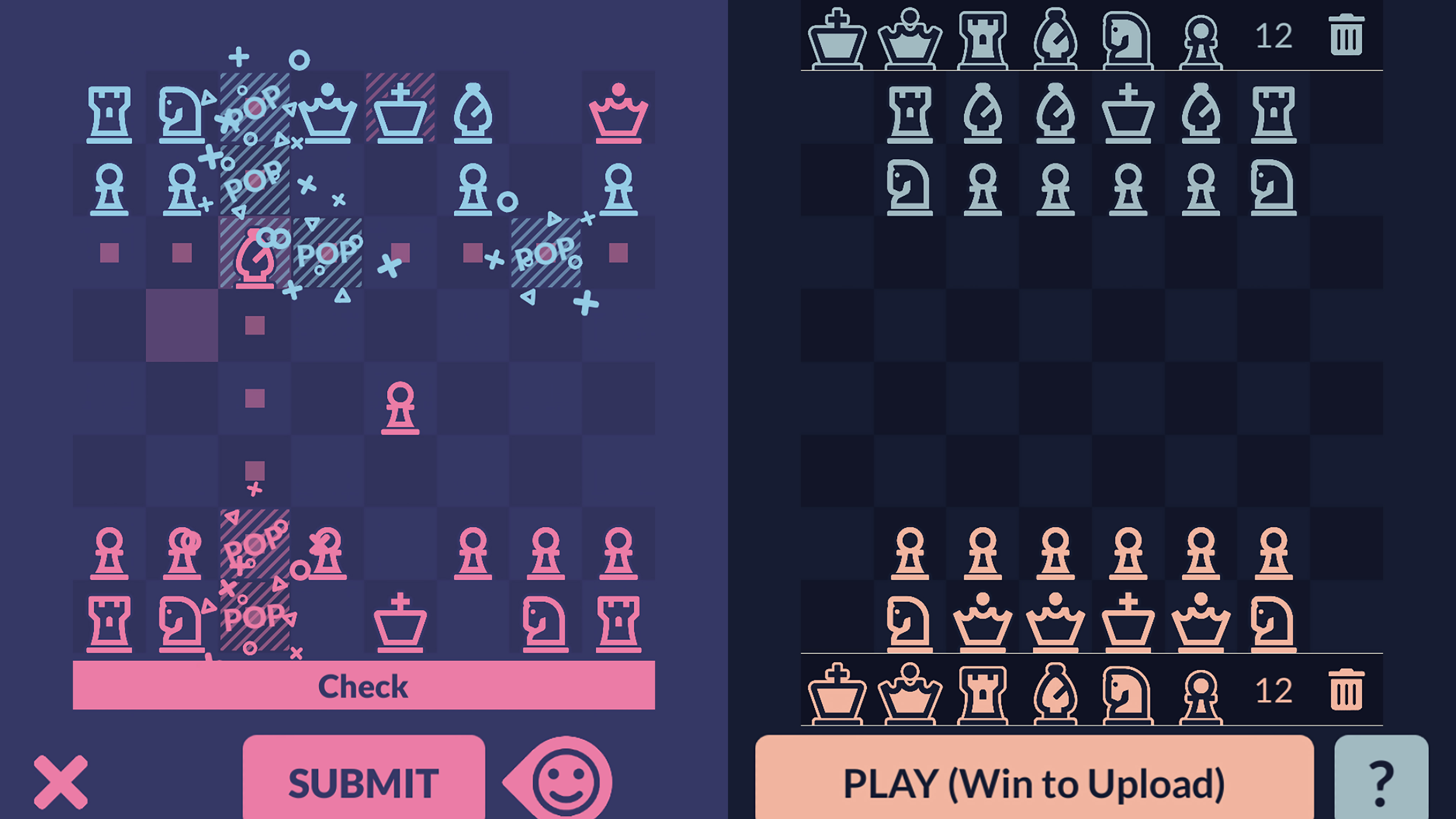
Chessplode is a free iPad game that up-ends the rules of chess by adding explosions. Capture a piece and any others in its row or column are obliterated – including your own. The exception is when a king is in said row/column, in which case you get a standard chess capture.
To lead you gently into this oddball take, you get beginner setups designed to let you win easily. Beyond that, you’ll find yourself immersed in levels that look simple from the outset but that are anything but once some pieces have been taken, eradicating most of what’s on the board.
When you’re done with the game’s built-in levels, you can make your own in an editor – although it’s only possible to share them once you confirm they can be beaten. You can also pit your skills against online opponents, while mulling that standard chess will never feel quite the same again.
Best free iPad arcade games
Our favorite iPad arcade games, including brawlers and fighting games, auto-runners, party games, pinball, and retro classics.

Knight Brawl
Knight Brawl is to 2D fighters what Anchorman is to journalism. That is, Knight Brawl is absurd, silly, and entertaining, but it’s very knowingly not trying to be realistic – and it’s all the better for it.
Side-on battles have knights attempt to relieve opponents of their armor before delivering the final blow. Only the controls and physics – like in Colin Lane’s other games – make for an anarchic experience where characters bounce around like they’re on trampolines.
If that was all you got, this would have been fun – a medieval take on Rowdy Wrestling, with pointy weapons. But along with multiple battle modes, there are also missions where you raid castles and steal bling. This isn’t just a throwaway gag, then, but a game for the long-term – a serious slice of iPad comedy.

Williams Pinball
Williams Pinball brings a selection of classic pinball tables to your iPad, and then adds animated remastering – at least, if you’re prepared to work for it.
Initially, you just get to unlock one table for unlimited play. (Pick a good one – Attack from Mars, The Getaway, or Medieval Madness – because you’ll be playing it a lot.) Through daily challenges, you’ll then slowly acquire the parts to gradually unlock other tables – unless you fancy splashing out on IAP to buy them outright.
This probably sounds a bit awful, but the truth is you’re ‘grinding’ by playing pinball. Also, the challenges often give you unlimited balls, so you can learn the tables. Stay the course, and eventually you can boost these already top-notch recreations with tough pro-level physics and animated components.

Fly THIS!
Fly THIS! echoes early App Store hit Flight Control, having you draw paths for planes to follow. But whereas the older title was an endless test that relentlessly ramped up the panic, this newer game feels more strategic and bite-sized.
The planes are fewer in number, but the maps are more claustrophobic. Also, you’re not just making planes land – instead, you ferry passengers between airports. Further complications come in the form of weather, and massive mountains you really don’t want to fly planes into.
Because each level has a set points target, Fly THIS! is great for playing in short bursts as well. In all, it’s a smart reimagining of a long-lost iPad favorite, which in many ways is more appealing than the game that presumably inspired it.
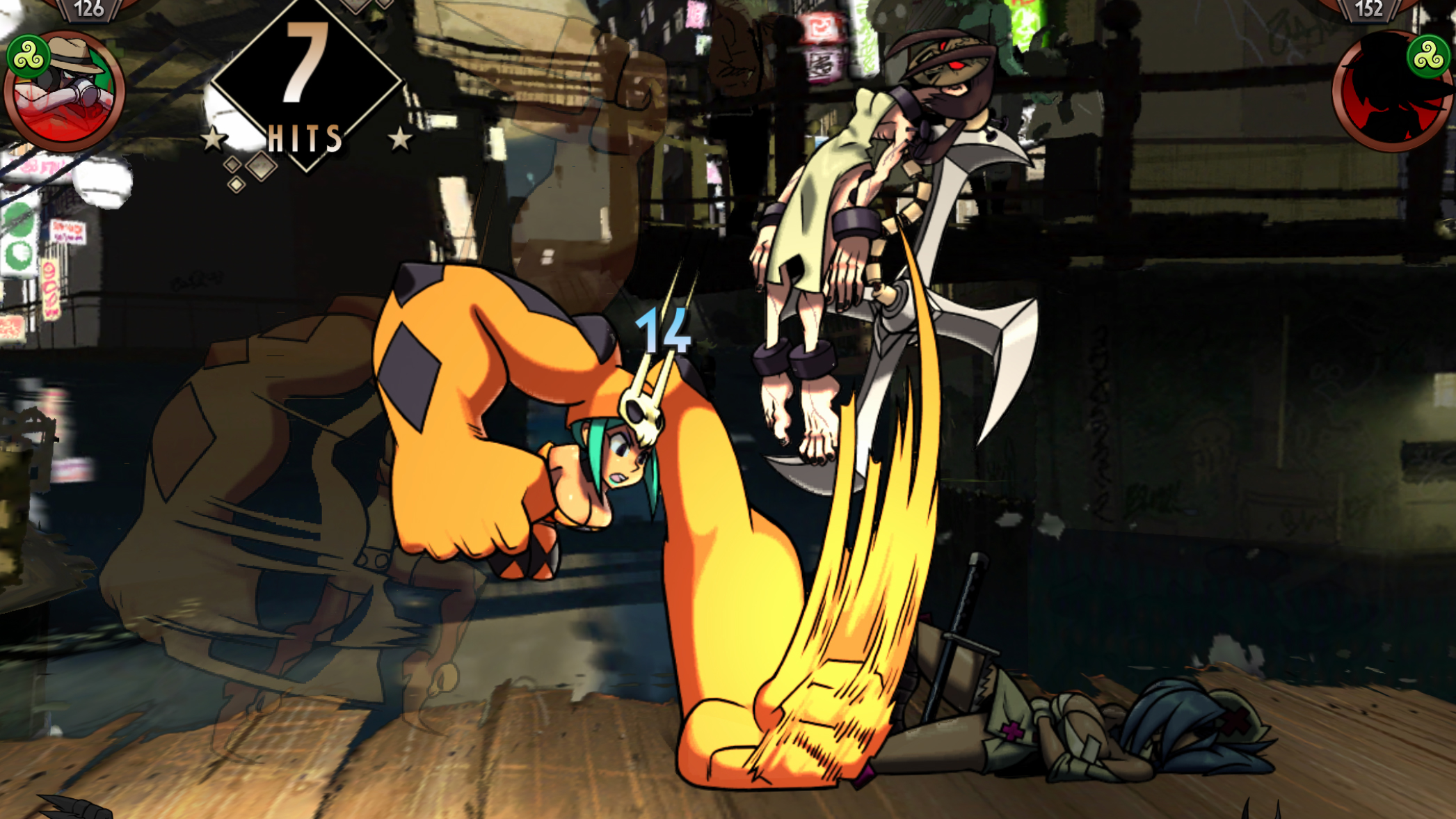
Skullgirls
Skullgirls is an impressive tappy brawler – akin to Street Fighter II reimagined for touch, by someone very much against the concept of virtual joypads.
This means swipes and taps are the order of the day, swift finger movements being used to duff up opponents. Buttons merely exist to fire off special moves, or tag in a team-mate when you’ve been punched in the face one time too many. It all works very well for the game’s fast pace.
Visually, Skullgirls dazzles, too, recalling an amped-up take on classic 1940s cartoons and manga. Character design – bar questionably skimpy clothing choices here and there – is especially impressive: one fighter’s Lovecraftian hair has a life of its own; another is a humanoid brass instrument that transforms into a massive French horn that mows down foes. Parp!
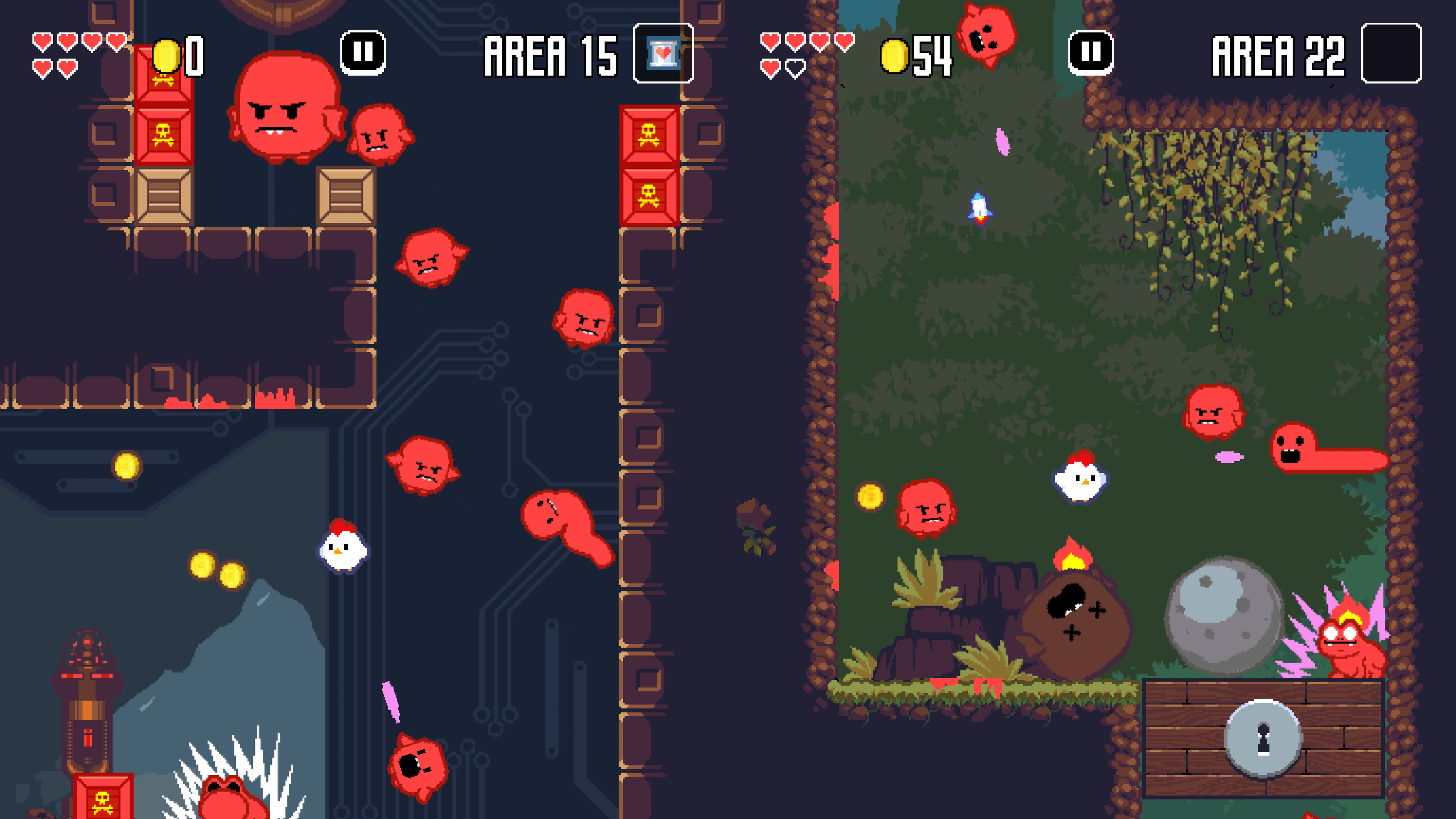
Super Fowlst
Super Fowlst is the follow-up to the unhinged Fowlst. Whereas the original was Flappy Bird in a box, reimagined as a hard-as-nails arena shooter, this sequel gives you more room to breathe.
The controls remain the same – tap left or right to ‘flap’ in the relevant direction, moving in an arc as you do so. But multi-screen levels and a lower concentration of enemies makes for an experience that has space for exploration and unearthing secrets, rather than solely being an ongoing frantic dash for survival.
That’s not to say Super Fowlst is easy – far from it. The boss battles in particular are extremely tough, and it will take you some time before you can last a dozen levels. But this one feels like anyone has a crack at becoming ‘super’ rather than only gaming gurus.
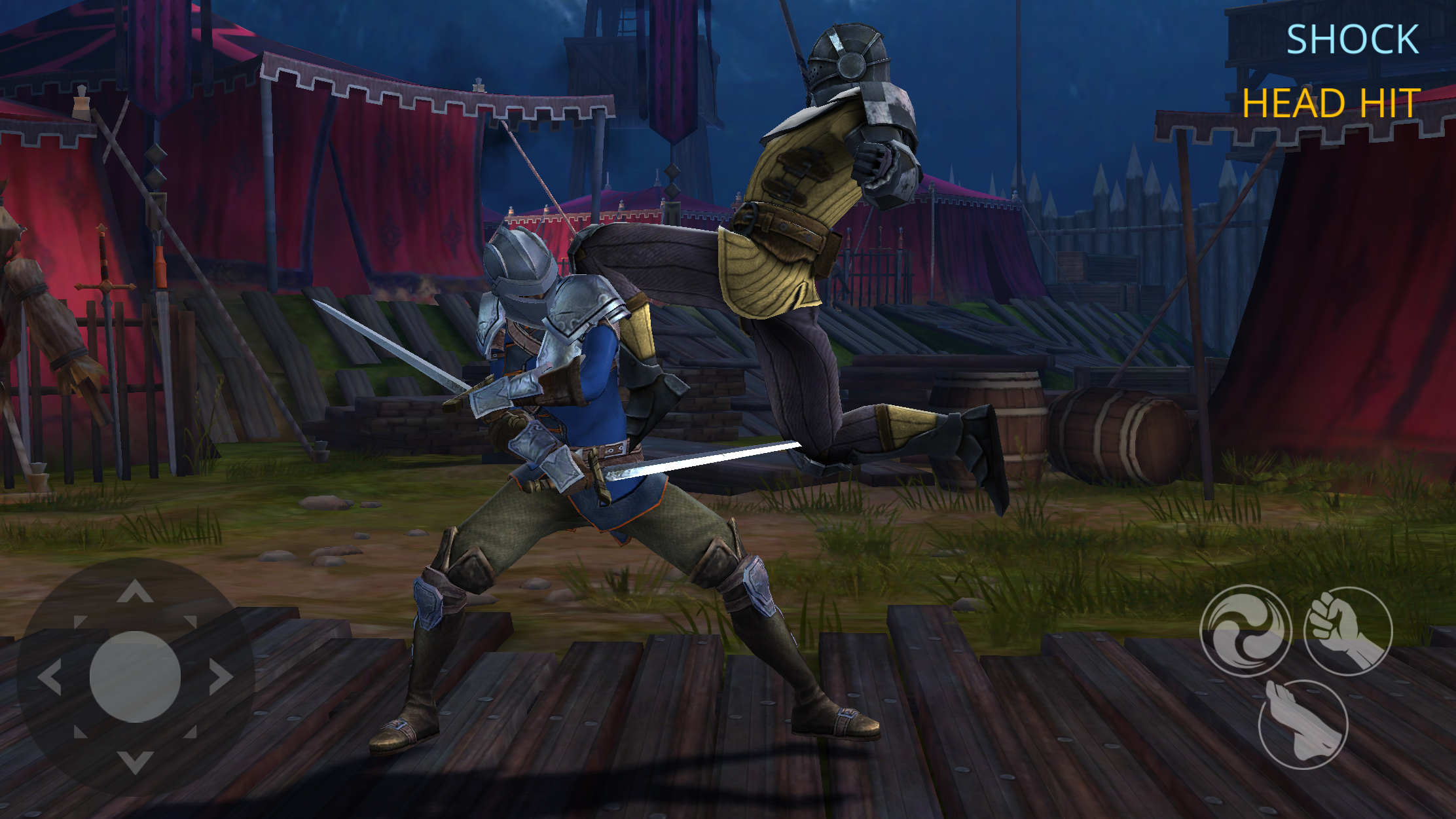
Shadow Fight 3
Shadow Fight 3 is a side-on one-on-one brawler set in a world of shadows that stands on the edge of a great war. In gaming terms, though, it’s mostly an excuse to whip your sword out, slice up your opponent, and then give them a few kicks and punches for good measure.
The fighty action works especially well on the iPad. The large screen provides plenty of space for the lush visuals, and your thumbs don’t cover anything important up while they battle with the surprisingly responsive virtual controls.
Your ongoing mission is a bit grindy at times, with an underlying RPG-lite mechanic of upgrades, but the brawls are great, whether you’re mastering a new weapon, unleashing shadow powers, or figuring out how to get the odd punch in when you’ve lost your sword and an opponent is moving in for the kill.
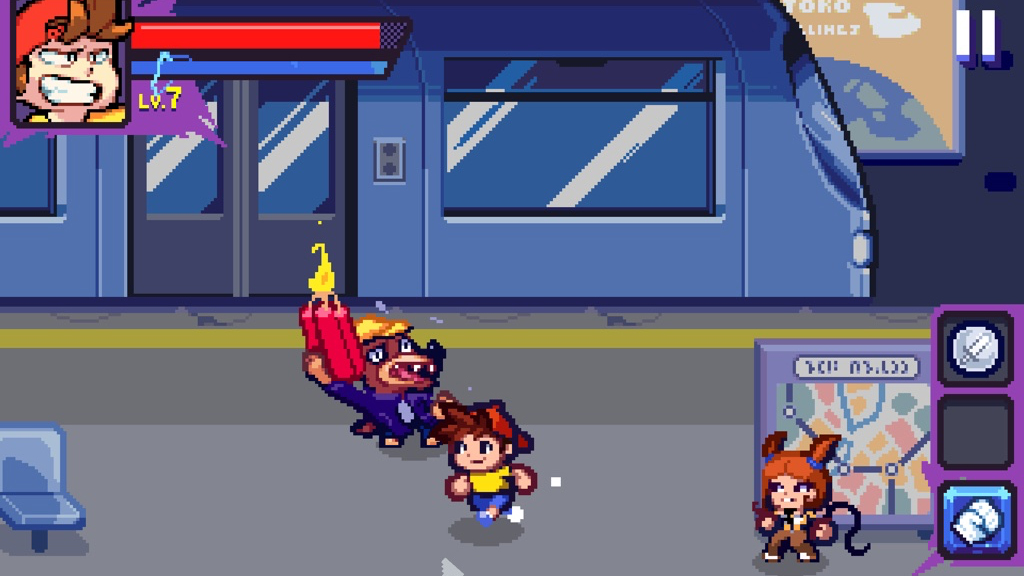
Beat Street
Beat Street is a love letter to classic scrolling brawlers, where a single, determined hero pummels gangs of evil-doers and saves the day. In Beat Street, giant vermin are terrorizing Toko City, and will only stop when you’ve repeatedly punched them in the face.
On iPhone, Beat Street is a surprisingly successful one-thumb effort, but on iPad you’re better off playing in landscape. With your left thumb, you can dance about, and then use your right to hammer the screen (and the opposition).
The iPad’s large display shows off the great pixel art, but the fighty gameplay’s the real star – from you taking on far too many opponents at once to gleefully beating one about the head with a baseball bat. It turns out they do make ’em like they used to after all.
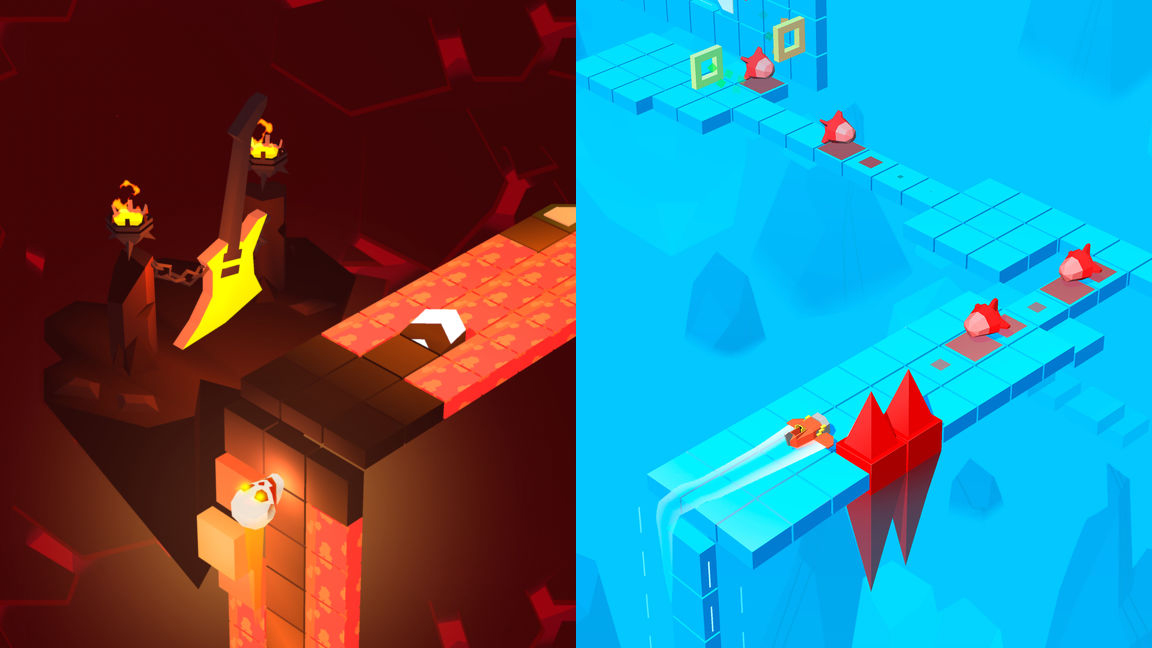
Up the Wall
Up the Wall is an auto-runner with an edge. Or rather, lots of edges. Because instead of being played on a single plane, Up the Wall regularly has you abruptly turn 90-degree corners, some of which find you zooming up vertical walls.
The speed and snap twists make for a disorienting experience, but the game’s design is extremely smart where, most notably, each challenge is finite and predefined. Up the Wall isn’t about randomness and luck, but mastering layouts, and aiming for that perfect run.
It nails everything else, too. The game sounds great, and has sharp, vibrant visuals, with imaginative environments. It’s not often you’re frantically directing a burger in an abstract fever dream of milkshakes and ketchup bottles, nor a skull in a world of flames, lava, and guitars.
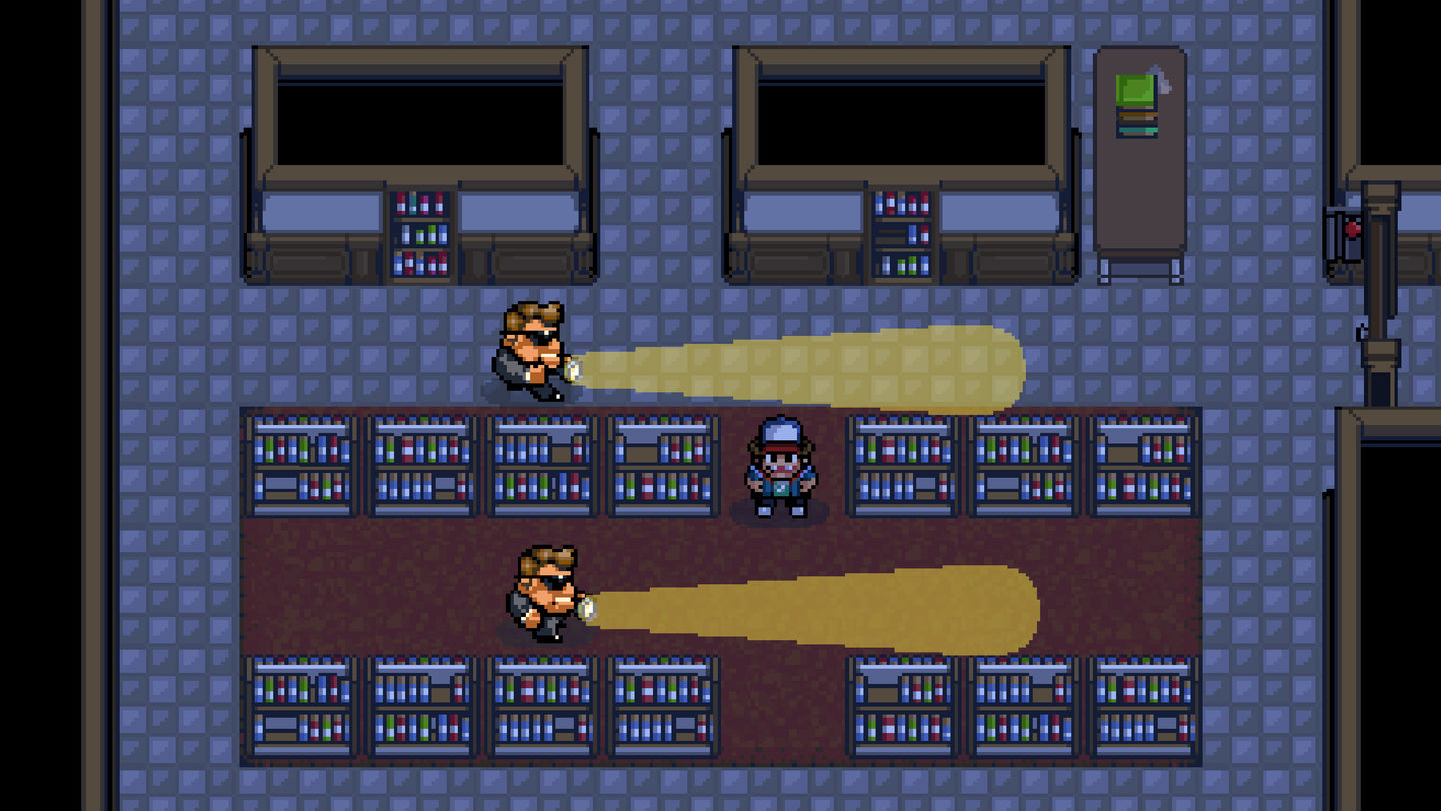
Stranger Things: The Game
Stranger Things: The Game is a rarity: a free tie-in videogame that’s not rubbish. In fact, it’s a really good old-school action-adventure that should delight old-timers and also click with people who follow the TV show.
The idea is to figure out what’s going on in Hawkins, Indiana, where things have gone deeply weird. You start off playing Officer Hopper, who scowls and punches his way about, but soon find kids to join your crew, including Lucas and his wrist rockets, and bat-swinging Nancy.
Occasionally, the game echoes old-school fare a little too well, with set-piece sections that are tough to crack (although you do get infinite attempts) – and the map is if anything too big; for the most part, though, Stranger Things: The Game is a clever, engaging, and compelling slice of mobile adventuring.
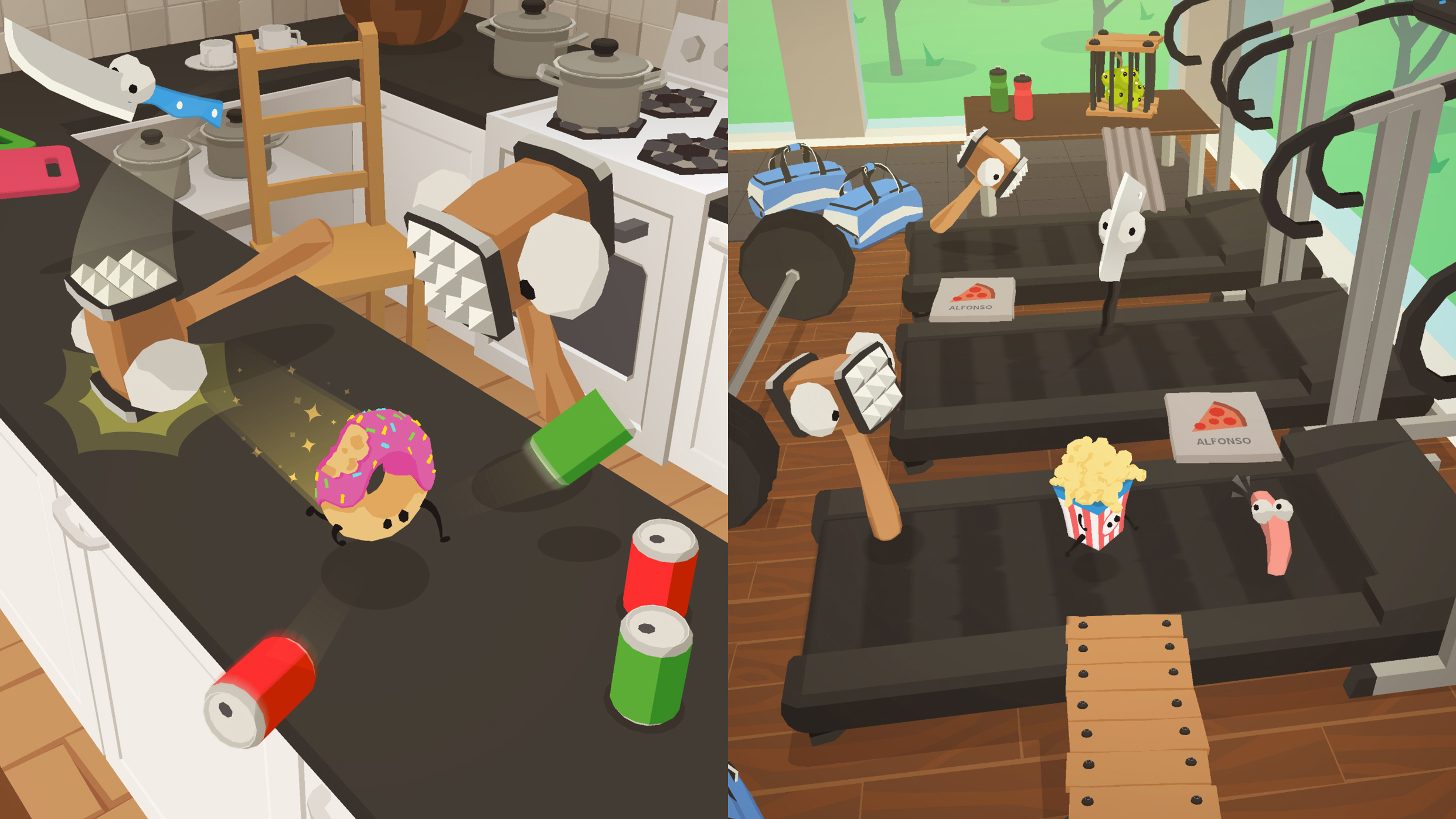
Silly Walks
Silly Walks is a one-thumb arcade game, featuring wobbling foodstuffs braving the hell of nightmarish kitchens (and, later, gardens and gyms), in order to free fruity chums who’ve been cruelly caged.
The hero of the hour – initially a pineapple cocktail – rotates on one foot. Tapping the screen plants a foot, causing him to rotate on the other foot and changing the direction of rotation. Charitably, this could be called a step, and with practice, it’s possible to put together a reasonable dodder.
And you’ll need to. Although early levels only require you to not fall off of tables, pretty soon you’re dealing with meat pulverizers, hero-slicing knives, and psychotic kitchenware in hot pursuit.
It’s admittedly all a little one-level – Silly Walks reveals almost all in its initial levels – but smart design, superb visuals, and a unique control method make it well worth a download.
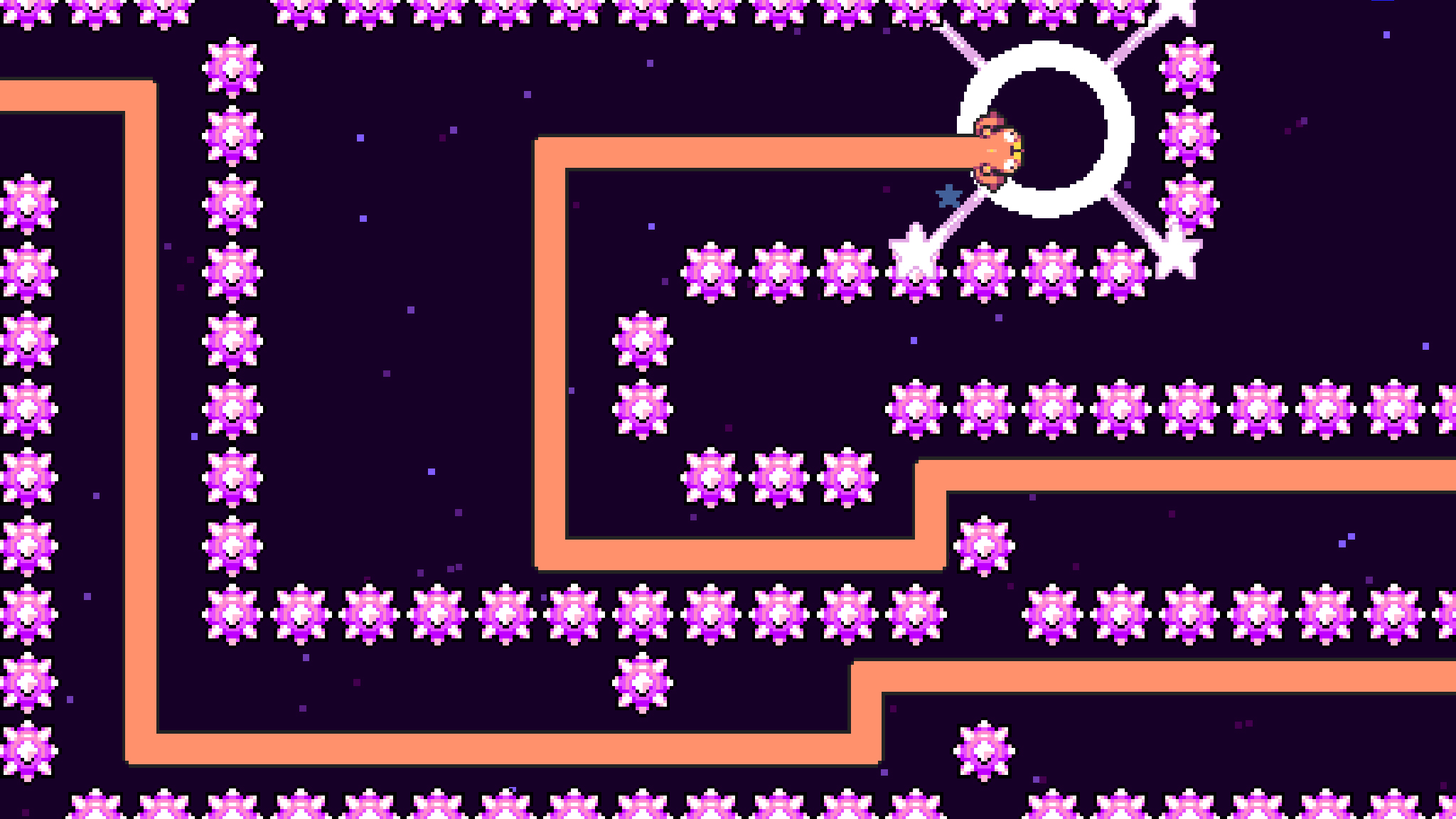
Silly Sausage: Doggy Dessert
The world’s stretchiest canine’s found himself in a world full of sticky desserts and a surprising number of saw blades. His aim: get to the other end of this deadly yet yummy horizontally scrolling world. The snag: the aforementioned blades, a smattering of puzzles, and the way this particular pooch moves.
In Silly Sausage: Doggy Dessert, the canine hero doesn’t pootle along on tiny legs – instead, you swipe to make his body stretch like an angular snake until he reaches another surface, whereupon his hind quarters catch up.
The result is an impressive side-scroller that’s more sedate puzzler than frantic platformer – aside from in adrenaline-fueled time-based challenge rooms, which even Silly Sausage veterans will be hard-pressed to master.
- Keep your iPad secure with one of these best free VPN apps
Our favorite free iPad games where you sprint, jump, drive, hoverboard, dig, or pinball to victory – or your doom.
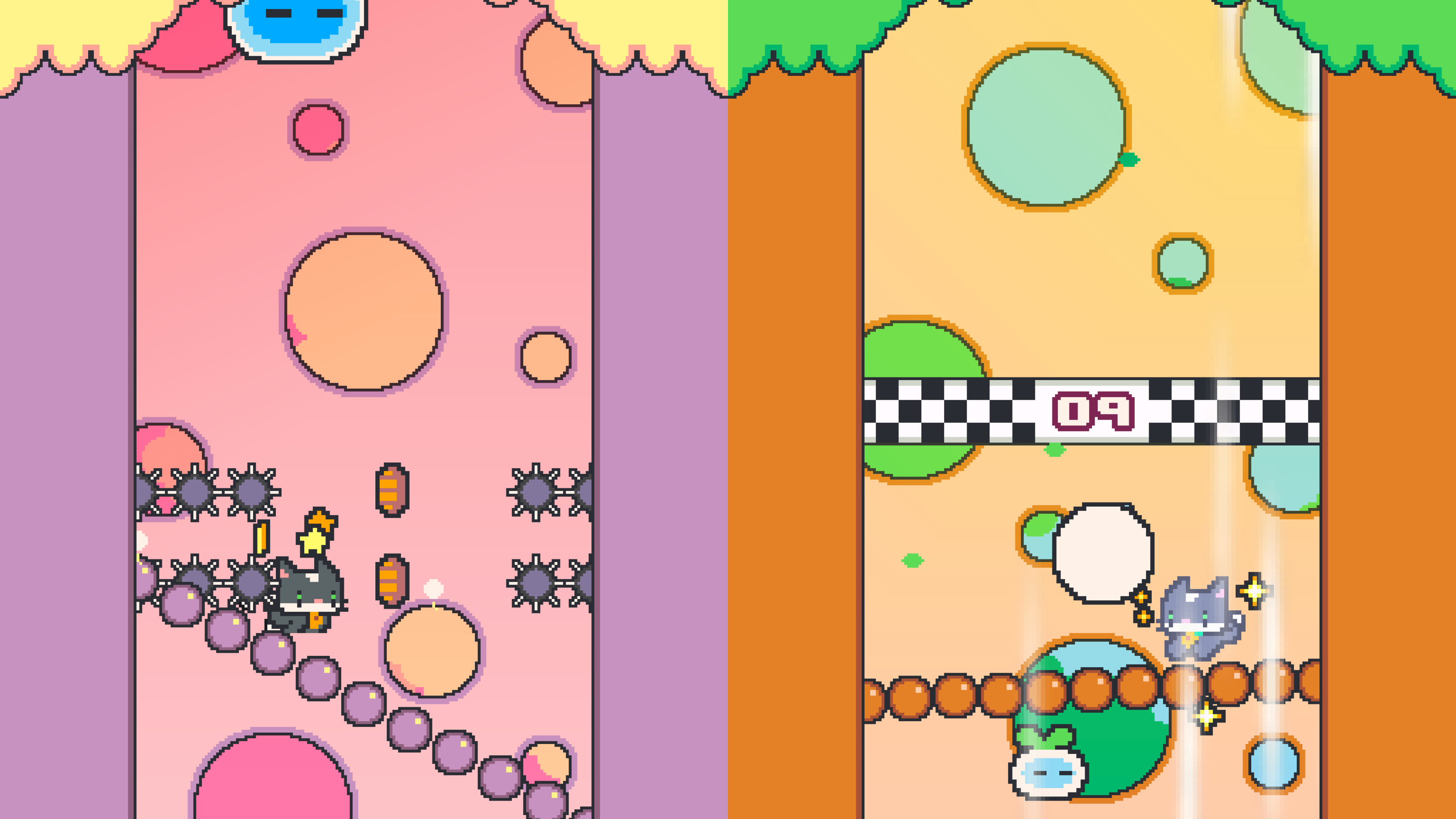
Magic Bridge!
Magic Bridge! finds the heroes from moggie-infused iPad platformer Super Cat Tales 2 in markedly different surroundings. Instead of a side-scrolling Mario-style effort, this game takes place on a rickety bridge. You prod left and right arrows to tip it, causing the cat to slide or run, aiming to avoid the enemies and spikes raining down the screen.
It’s simple stuff, which initially seems to have the ferocity of a Flappy Bird. But once you stop wrenching the bridge to its extremes, you realize the game has nuance. You can subtly shift your kitty, and grab the odd power-up to blaze through levels, knocking foes aside like Superman. If Superman was a cat. Good stuff, then, not least for squeezing into odd moments when you lack the time for a Super Cat Tales 2 session.
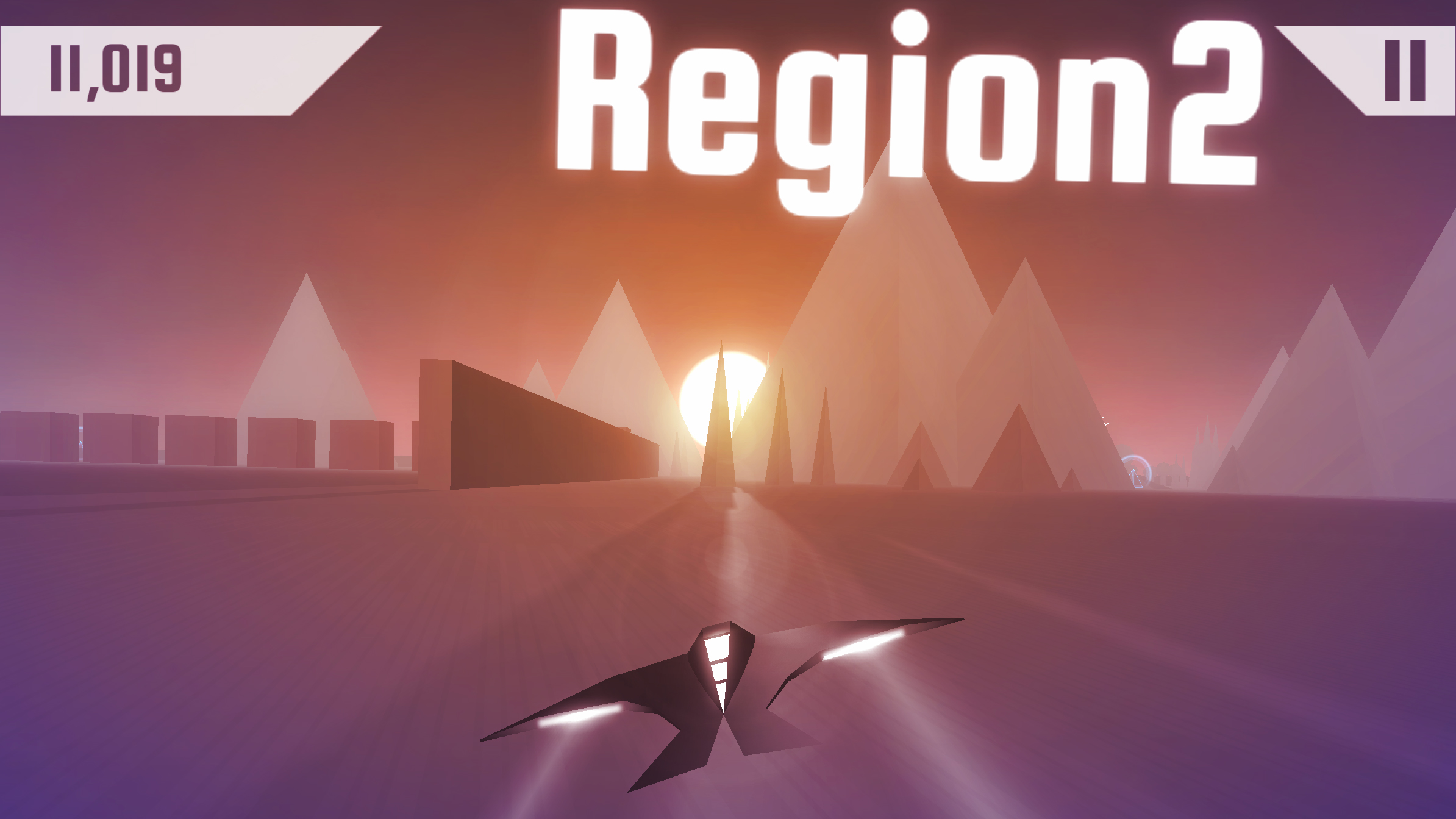
Image credit: TechRadar / Flippfly, LLC
Race the Sun Challenge Edition
Race the Sun Challenge Edition isn’t so much about racing the sun. That would not only be ludicrous, but also impossible. Instead, you’re actually racing the sunset – although Race the Sunset sounds more noodly than cool, and so here we are.
Anyway, you’re in a ship, blazing along, trying to zip through minimalist cities without smashing into a wall. Because your craft is solar powered, it needs to stay out of the shadows, and also grab power-ups that reverse the sun’s direction for a few moments, thereby giving you a few precious extra seconds of daylight.
This one looks gorgeous on the iPad’s large display. And there’s plenty of longevity here, too, from gradually powering up your craft over time, to partaking in each day’s new and unique challenge.
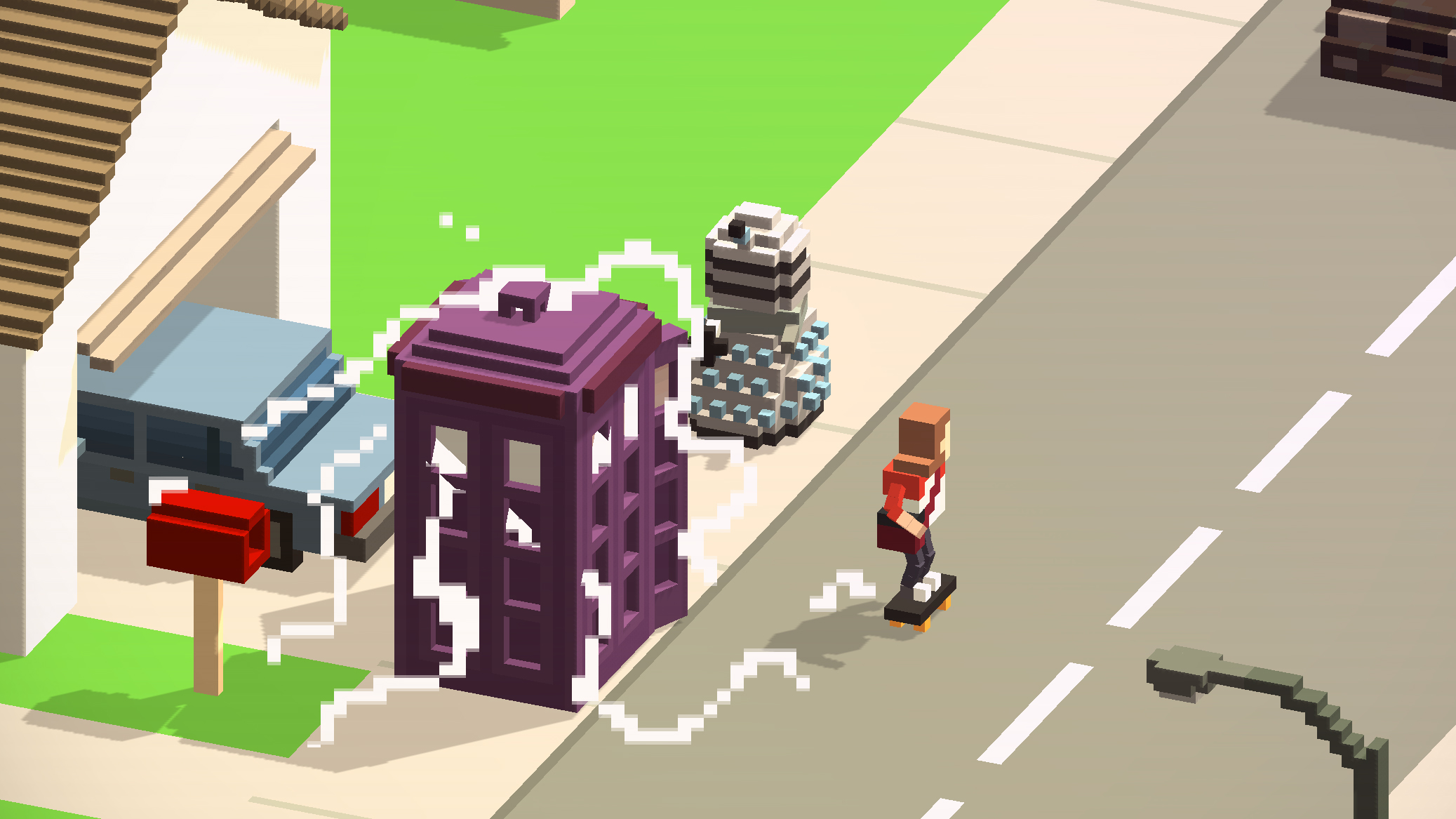
The VideoKid
The VideoKid is a modern take on arcade classic Paperboy. Well, modern in the sense that it’s a game depicted using voxels, and that’s controlled by madly swiping on your iPad’s touchscreen. In every other way, it’s like time travel to the 1980s.
The gameplay echoes its arcade inspiration, with you zooming along a road packed with hazards, only rather than lobbing newspapers at mailboxes, you’re chucking video cassettes.
This in itself is quite fun, but what will make the game stick on your iPad is the barrage of pop culture references. You’ll spot everything from a famous blue police box to rampaging transforming robots as you try to avoid getting squished, and weave your way to the end of your shift.
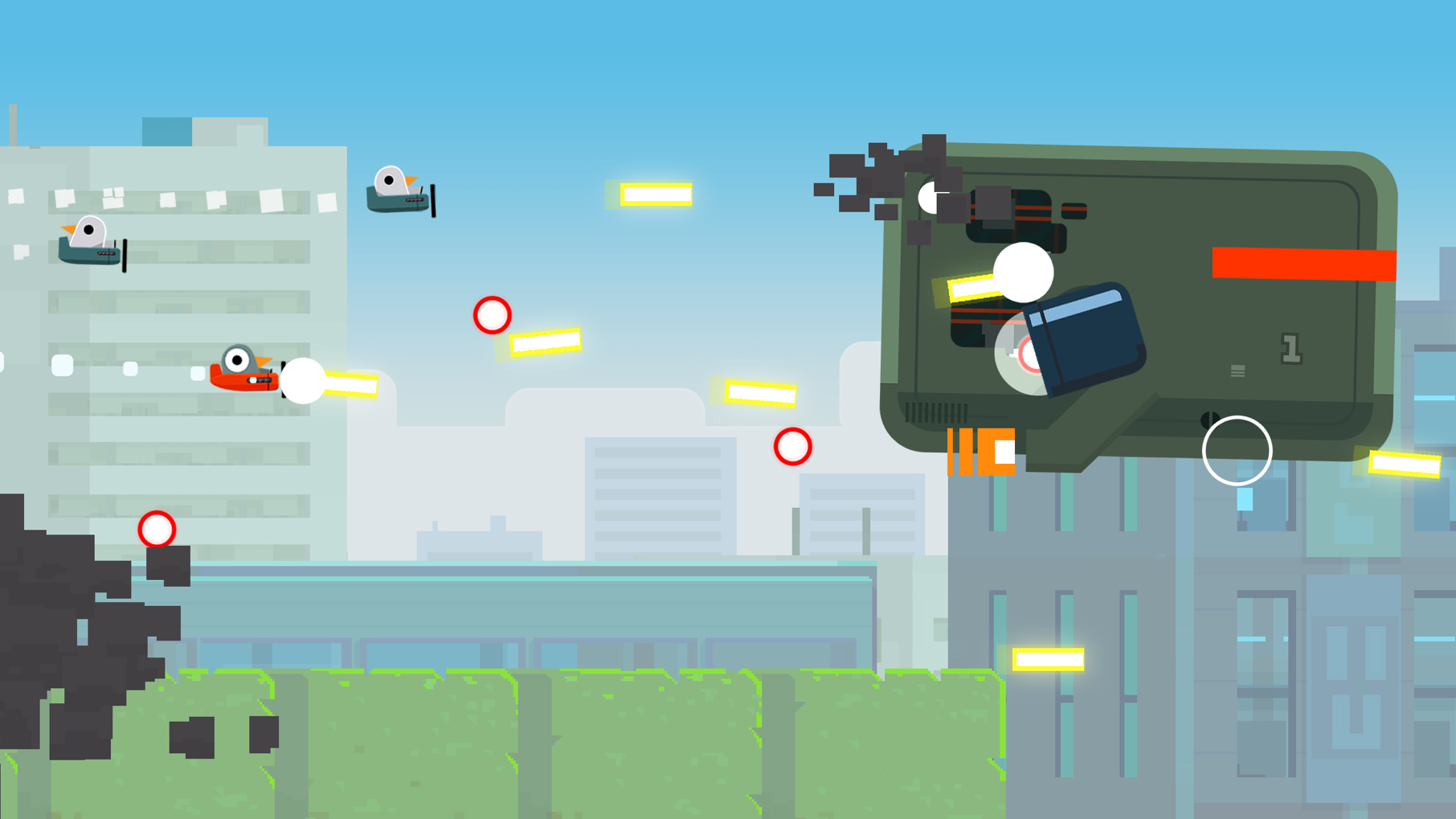
Pigeon Wings Strike
Pigeon Wings Strike is an endless flyer. It’s set in a world that – for whatever reason – has decided the best way to defeat evil bad guys with deadly drones and massive flying fortresses is to kit out birds and other tiny critters with biplanes that shoot massive lasers.
Prior to your inevitable meeting with a brick wall or a bullet, you zip about the place, zig-zagging through tunnels and buildings, before getting all shooty, in order to down some adversaries.
The game’s vertical tilt controls are a tad more unwieldy on iPad than iPhone, although the weight of the device adds some tactile solidity to proceedings as you escape death by the skin of your beak. In all, this is a fast, fluid, high-octane arcade game of the very best kind.
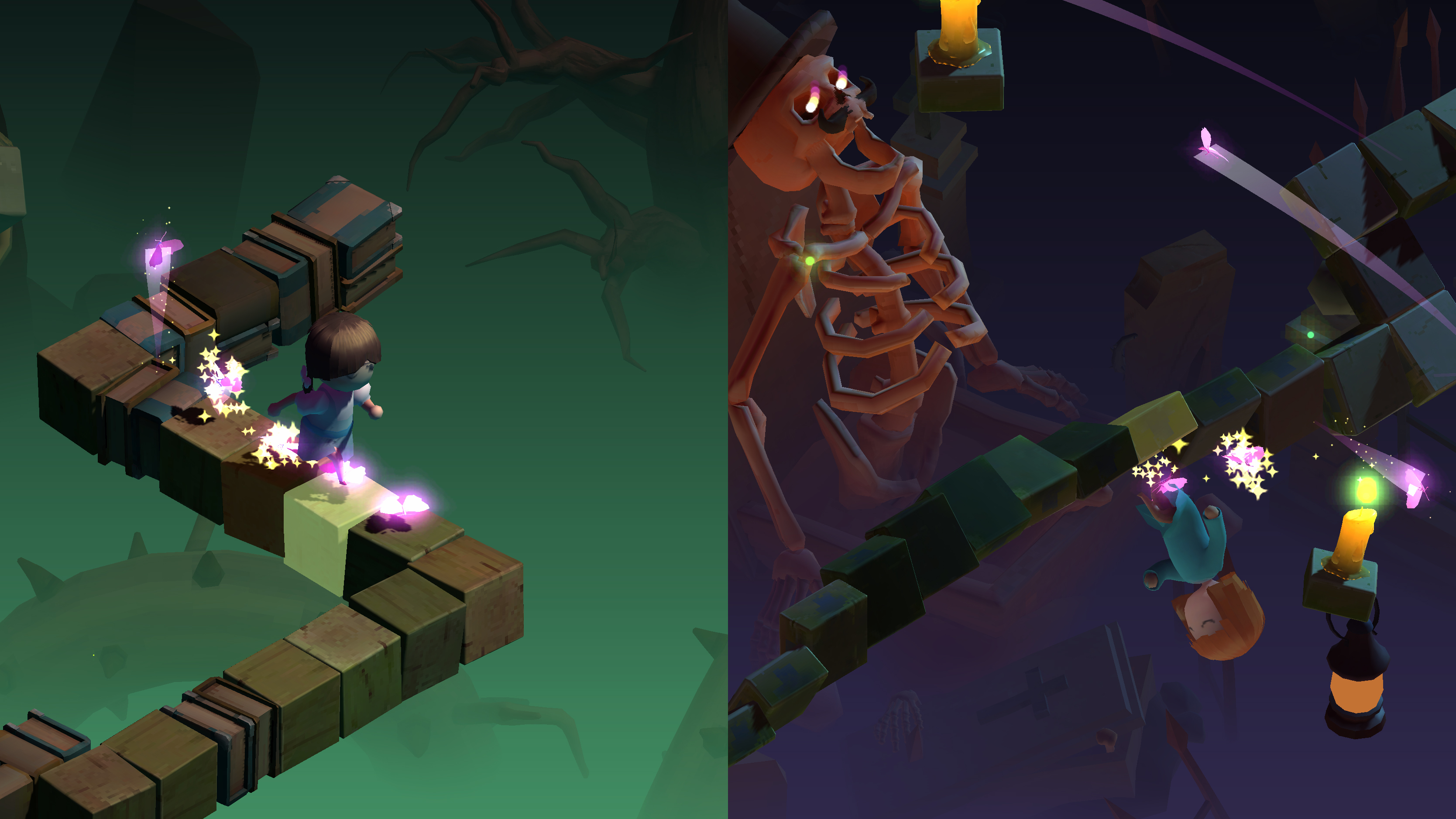
Dream-Walker
Dream-Walker is a timing-based auto-runner. Your character walks along a pathway, with perilous drops either side. Whenever they’re at a corner, you prod the screen to ensure they don’t fall to their doom. Over time, things speed up, making prolonged success tricky.
So far, so familiar. But where Dream-Walker vastly betters its contemporaries is with visuals and atmosphere. As you progress, the game tries to distract you, abruptly opening new pathways, spinning blocks around, and sometimes going a bit Monument Valley with Escher-like constructions.
On iPad, the lush visuals really get a chance to shine, and the game’s ambience is further augmented by excellent audio. So although you might have had your fill of the genre, this one should not be missed, because it plays, well, like a dream.
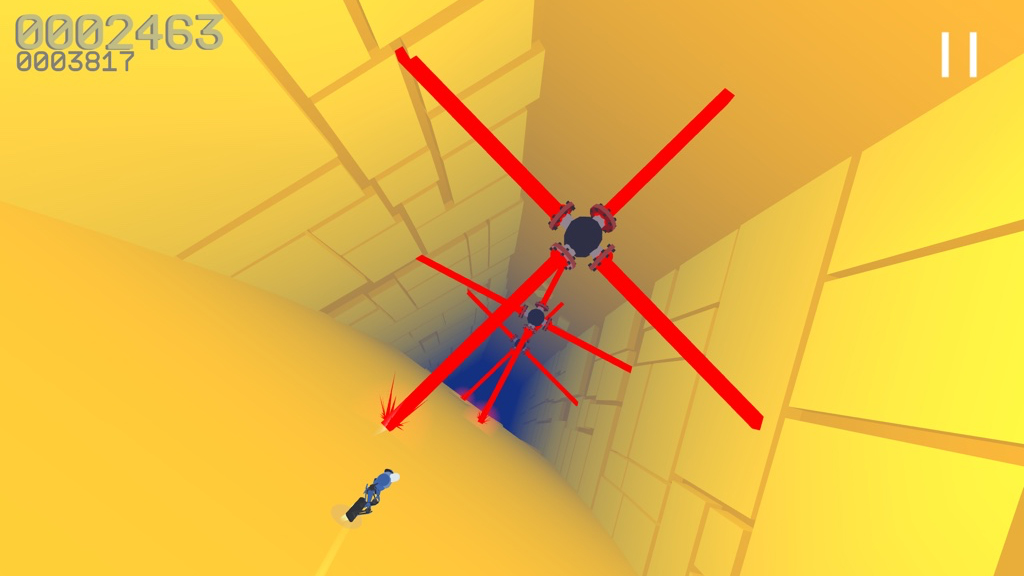
Power Hover: Cruise
Power Hover: Cruise is an endless arcade treat loosely based on the boss levels from the superb Power Hover. Your little robot gets to tackle four distinct environments on his hovering board, weaving between hazards. The aim is to last as long as possible before being smashed into scrap metal when you inevitably mess up and fly head-on into an obstacle at insane speed.
The game is visually stunning on the iPad’s large display, whether descending into Dive’s hazardous underwater tunnel, or zooming along Air’s tubular road that winds snake-like through the clouds.
But controls make or break this kind of game, and Power Hover: Cruise is blessed with a simple left/right system with plenty of inertia. Initially, it feels unresponsive, but before long you’ll be scything through levels like nobody’s business, in one of the most beguiling endless games on iPad.

Dashy Crashy
With Dashy Crashy, the iPad shows bigger (as in, the screen) really can be better. The basics involve swiping to avoid traffic while hurtling along a road. New vehicles are periodically won, each of which has a special skill (such as the UFO abducting traffic, and the taxi picking up fares); and there are also random events to respond to, such as huge dinosaurs barreling along.
On iPad, the gorgeous visuals are more dazzling than on the smaller iPhone, and in landscape or portrait, it’s easier to see what’s in front of you, potentially leading to higher scores.
Also, the game’s multi-touch aware, so you can multi-finger-swipe to change several lanes at once – fiddly on an iPhone but a cinch on a tablet, making for an addictive, just-one-more-go experience.

Mars: Mars
There’s a delightful and elegant simplicity at the heart of Mars: Mars. The game echoes iPad classic Desert Golfing, in providing a seemingly endless course to explore. But rather than smacking a ball, you’re blasting a little astronaut between landing pads.
The controls also hark back to another game – the ancient Lunar Lander. After blast-off, you tap the sides of the screen to emit little jets of air, attempting to nudge your astronaut in the right direction and break their fall before a collision breaks them.
Smartly, you can have endless tries without penalty, but the game also tots up streaks without death. Repeat play is further rewarded by unlocking characters (also available via IAP), many of which dramatically alter the environment you’re immersed in.
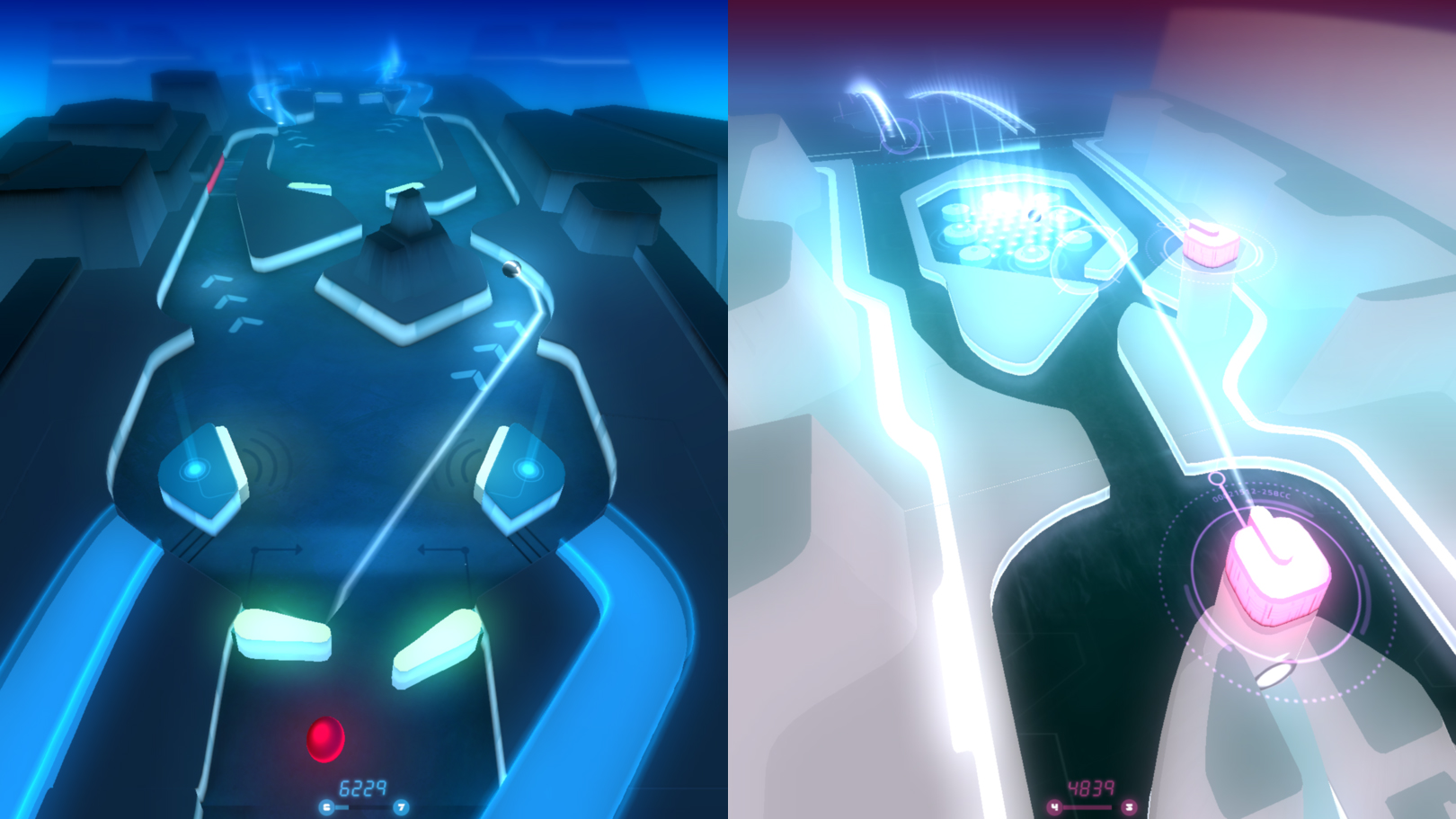
PinOut!
The BAFTA-winning INKS rethought pinball for mobile, breaking it down into bite-sized simple tables that were more like puzzles. Precision shots – and few of them – were the key to victory. PinOut! thinks similarly, while simultaneously transforming the genre into an against-the-clock endless runner.
The idea is to always move forwards, shooting the ball up ramps that send it to the next miniature table. Along the way, you grab dots to replenish the relentlessly ticking down timer, find and use power-ups, and play the odd mini-game, in a game that recalls basic but compelling fare once found on the LED displays of real-life tables.
PinOut! is gorgeous – all neon-infused tables and silky smooth synth-pop soundtrack. And while the seemingly simplified physics might nag pinball aficionados, it makes for an accessible and playable game for everyone else.
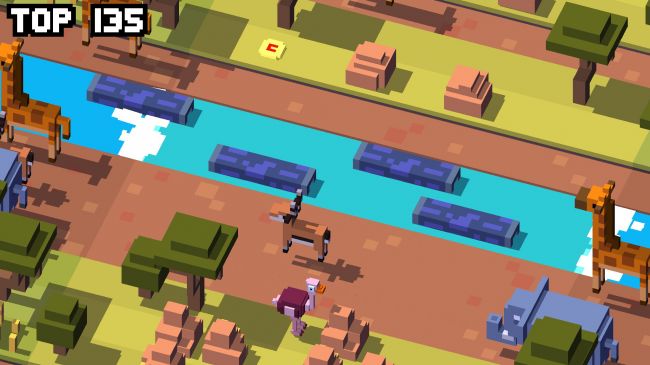
Disney Crossy Road
Tie-ins between indie game companies and major movie houses often end badly, but Disney Crossy Road bucks the trend. It starts off like the original Crossy Road — an endless take on Frogger. Only here, Mickey Mouse picks his way across motorways, train lines and rivers, trying to avoid death by drowning or being splattered across a windscreen.
But unlock new characters (you'll have several for free within a few games) and you open up further Disney worlds, each with unique visuals and challenges.
In Toy Story, Woody and Buzz dodge tumbling building blocks, whereas the inhabitants of Haunted Mansion are tasked with keeping the lights on and avoiding a decidedly violent suit of armour.
Elsewhere, Inside Out has you dart about collecting memories, which are sucked up for bonus points. And on the iPad, the gorgeous chunky visuals of these worlds really get a chance to shine.
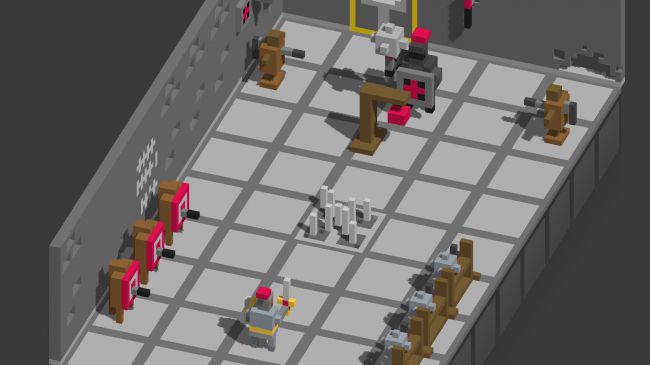
Looty Dungeon
At first glance, Looty Dungeon comes across like a Crossy Road wannabe. But you soon realise it's actually a very smartly designed endless dungeon crawler that just happens to pilfer Crossy Road's control method, chunky visual style, and sense of urgency.
You begin as a tiny stabby knight, scooting through algorithmically generated isometric rooms. You must avoid spikes and chopping axes, outrun a collapsing floor, and dispatch monsters. The action is fast-paced, lots of fun, and challenges your dexterity and ability to think on the move.
As is seemingly law in today's mobile gaming landscape, Looty Dungeon also nags at the collector in you, offering characters to unlock. But these aren't just decorative in nature — they have unique weapons, which alter how you play. For example, an archer has better range than the knight, but no defensive shield when up against an angry witch or ravenous zombie.
Our favorite free iPad gem-swap, tile-match, and rhythm action games.
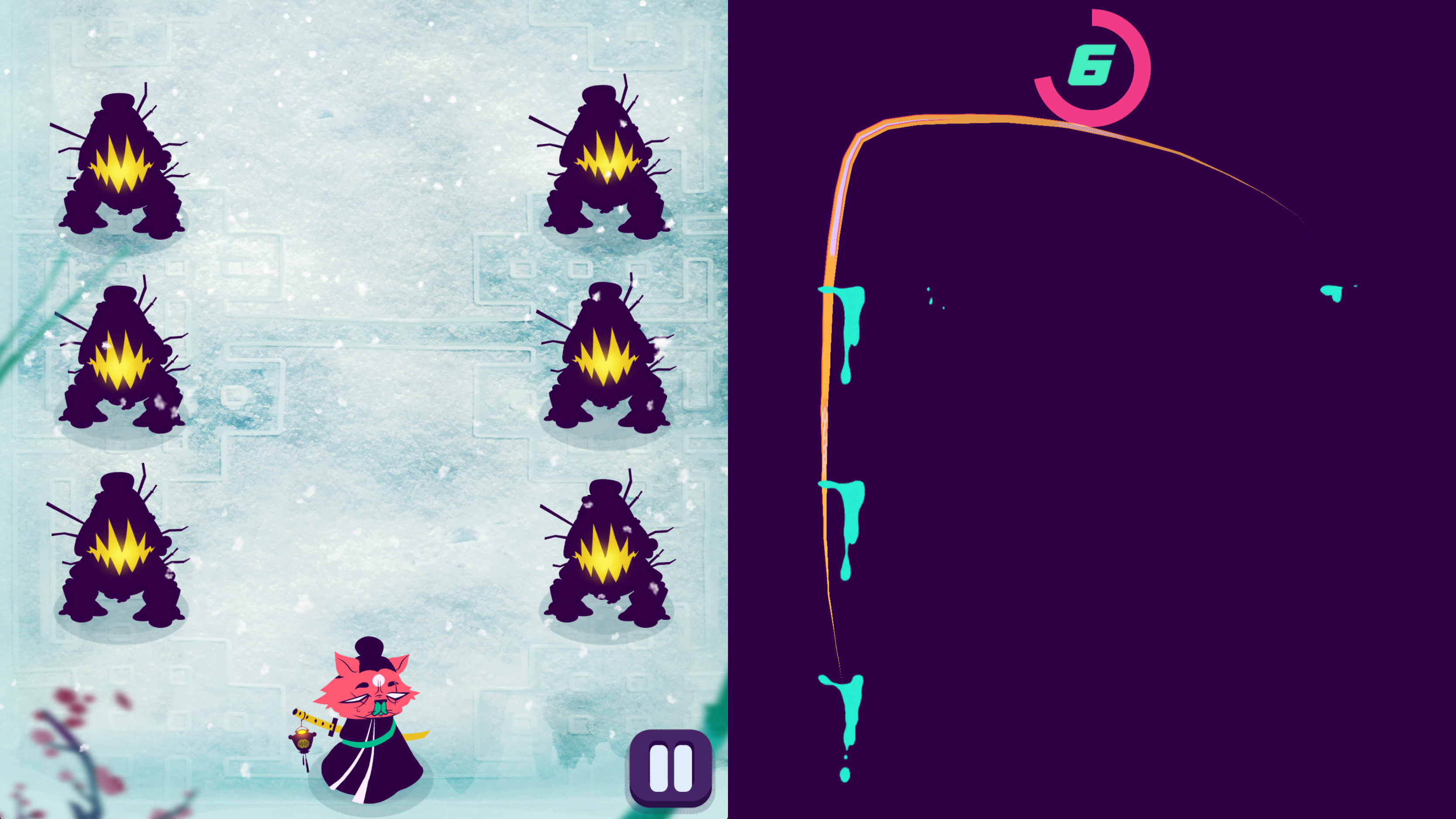
The Ninja in the Dark
The Ninja in the Dark finds evil forces amassing, and threatening to take over the world. Fortunately, they’re a bit dim, meaning in each of the game’s several hundred stages, you get a free swipe at them. The tiny snag: while you do so, the lights go out.
Quite why this happens, we’ve no idea. Perhaps the titular ninja is a show-off and just wants to boast about not even having to see his targets to hack them in half. Still, this makes your life harder, having to memorize everything on the screen before unleashing your finger of doom, swiping across where you believe baddies to be lurking.
Do well and you accrue points, unlock characters, and get to yell ‘HI-YAAAA!’ a lot. Hit a bomb and, well, your ninja’s days will have permanent darkness.
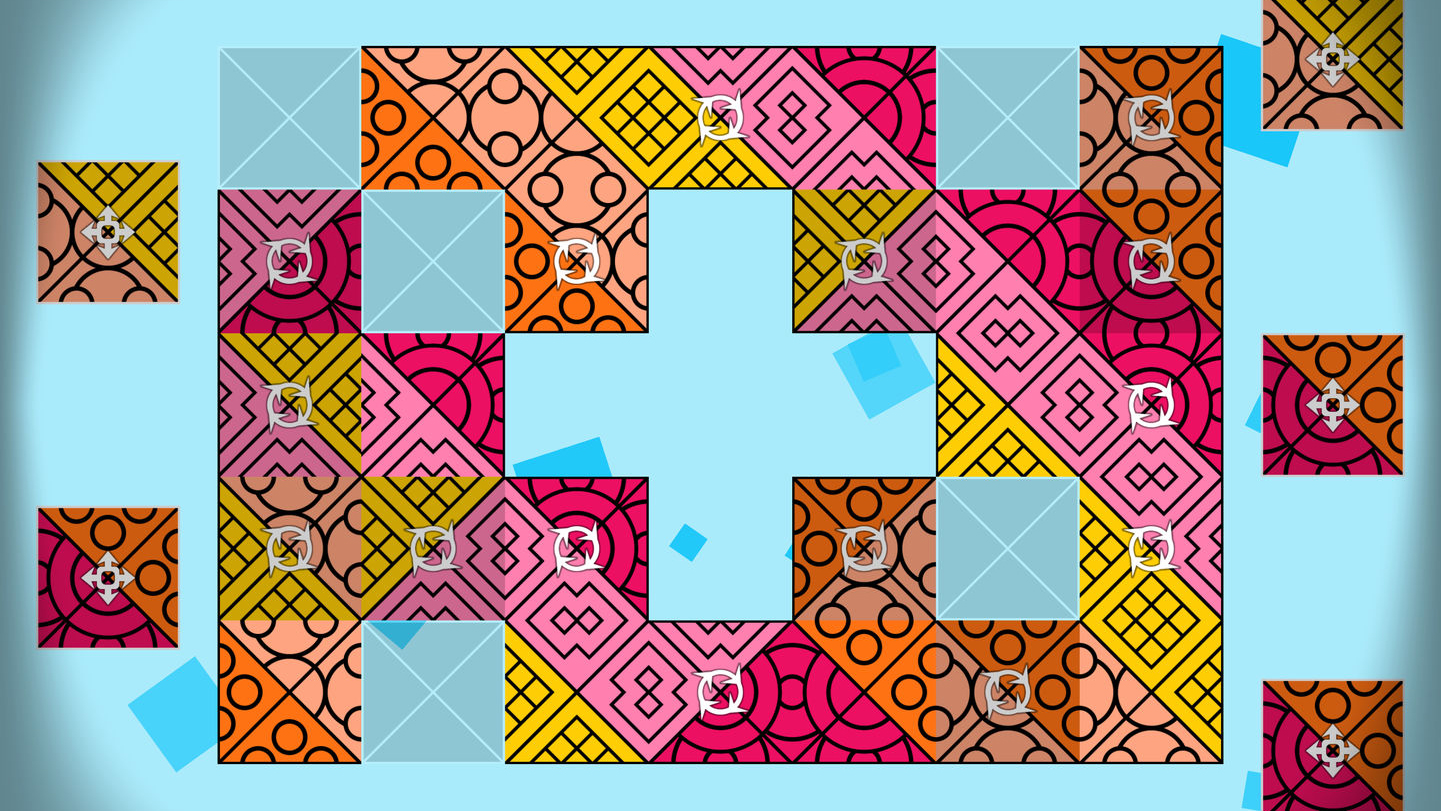
AuroraBound
AuroraBound is a puzzle game that’s all about matching patterns. Each level provides you with a tiled board, onto which you place colorful pieces. The aim is to ensure that all the lines and colors join up.
This isn’t the kind of puzzler designed to smash your brains out – for the most part, it’s a rather relaxing experience. But as the boards increase in size, with patterns on each tile that are only very slightly different, you may eventually find your ego and complacency handed back to you.
Even so, AuroraBound never becomes frustrating. There are no time limits, and you can experiment by shifting pieces around at will. Neatly, the level select screen is a tiny puzzle to complete as you go, too.
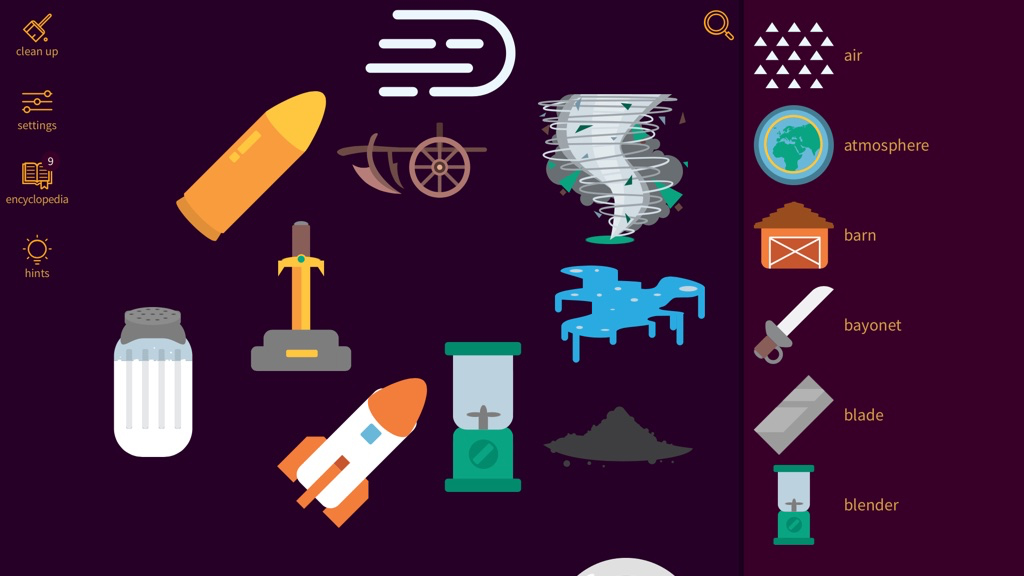
Little Alchemy 2
Little Alchemy 2 is an exploratory logic game. You start off with a small number of items, which can be dragged to the central canvas. Items are then merged to create new ones.
At least that’s the theory. If you just set about randomly shoving items together, nothing happens. Instead, you must utilize rational thinking – or a little whimsy. For example, combine a couple of puddles and you’ll get a pond. Obvious, really. But also you can create a blender from a blade and ‘motion’, and a rocket from ‘metal’ and ‘atmosphere’.
In all, there are over 600 items to discover, and although Little Alchemy 2 can irk if you hit a brick wall, you can always pay for hints via IAP if you get stuck. Alternatively, tough it out and feel like a genius when you hit upon a suitably clever combination.
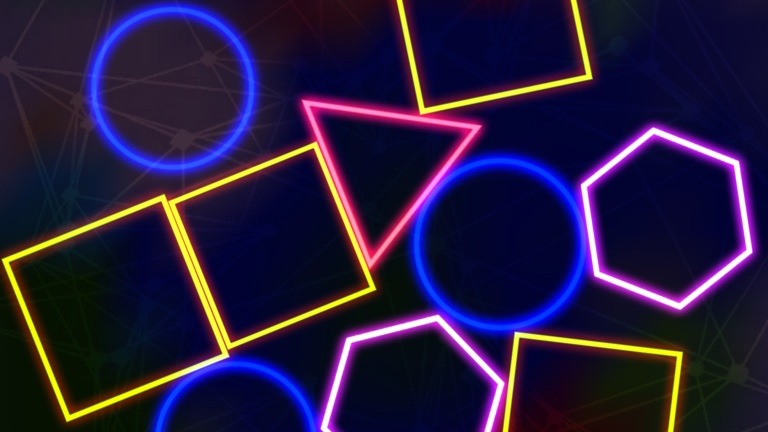
Estiman
This one’s all about counting really quickly. That admittedly doesn’t sound like much – but stick with it, because Estiman is actually a lot of fun.
It begins by displaying a bunch of neon shapes. The aim is to prod a shape that belongs to the most numerous group, and work your way to the smallest. Do this rapidly and you build a combo that can seriously ramp up your score. Now and again shapes also house credits, which can be used to buy new themes.
On iPad, the game looks great, and although some themes (such as gloopy bubbles) make the game easier, that at least gives you a choice if the minimal original theme proves too tricky.
And despite Estiman’s overt simplicity, its odd contrasting mix of relaxation (chill-out audio; zero-stress timer) and urgency (if you want those combos) proves compelling.
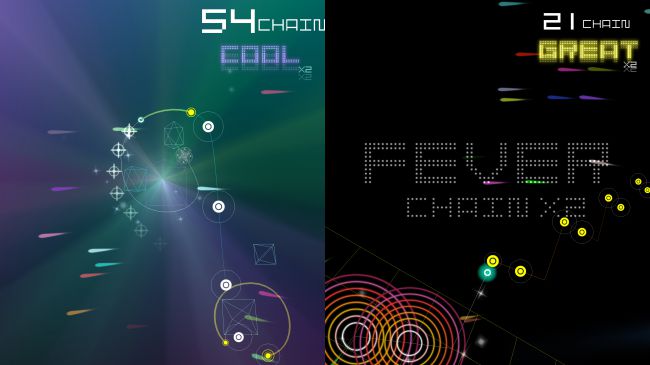
Groove Coaster 2 Original Style
Like a simulation of having a massive migraine while on a stomach-churning roller-coaster, Groove Coaster 2 Original Style is a rhythm action game intent on blasting your optics out while simultaneously making your head spin.
It flings you through dizzying, blazing-fast tracks, asking you to tap or hold the screen to the beat of thumping techno and catchy J-Pop.
The game looks superb – all retro-futuristic vector graphics and explosions of color that are like being stuck inside a mirror ball while 1980s video games whirl around your head.
Mostly you'll stick around for the exhilarating tap-happy rhythm action, which marries immediacy with plenty of challenge, clever choreography tripping up the complacent on higher difficulty levels.
It never becomes a slog though – tracks are shortish and ideal for quick play; and for free, you can unlock plenty of them, but loads more are available via in-app purchase.

Imago
With its numbered sliding squares and soaring scores, there's more than a hint of Threes! about Imago. In truth, Threes! remains the better game, on the basis that it's more focussed, but Imago has plenty going for it. The idea is to merge pieces of the same size and colour, which when they get too big explode into smaller pieces that can be reused.
The clever bit is each of these smaller pieces retains the score of the larger block. This means that with smart thinking, you can amass colossal scores that head into the billions. The game also includes daily challenges with different success criteria, to keep you on your toes.

Planet Quest
Having played Planet Quest, we imagine whoever was on naming duties didn't speak to the programmer. If they had, the game would be called Awesome Madcap Beam-Up One-Thumb Rhythm Action Insanity — or possibly something a bit shorter. Anyway, you're in a spaceship, prodding the screen to repeat beats you've just heard.
Doing so beams up dancers on the planet's surface; get your timing a bit wrong and you merely beam-up their outfits; miss by a lot and you lose a life. To say this one's offbeat would be a terrible pun, but entirely accurate; it'd also be true to say this is the most fun rhythm action game on iPad — and it doesn't cost a penny.
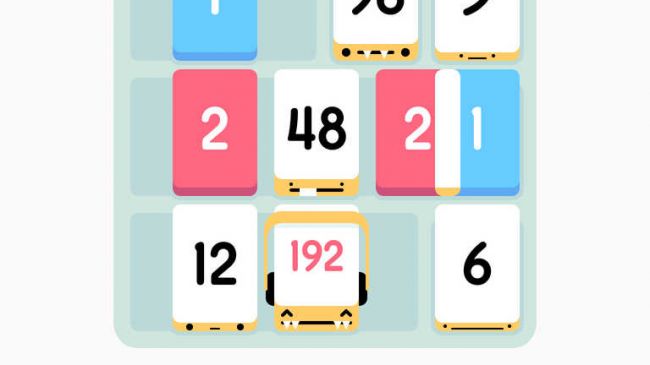
Threes! Freeplay
The best puzzle game on mobile, Threes! has you slide cards about a grid, merging pairs to create ever higher numbers. The catch is all cards slide as one, unless they cannot move; additionally, each turn leads to a new card in a random empty slot on the edge you swiped away from. It's all about careful management of a tiny space.
On launch, Threes! was mercilessly cloned, with dozens of alternatives flooding iTunes, but 2048 and its ilk lack the charm and fine details that made Threes! so great in the first place. And now there's Threes! Freeplay, where you watch ads to top up a 'free goes' bin, there's no excuse for going with inferior pretenders.
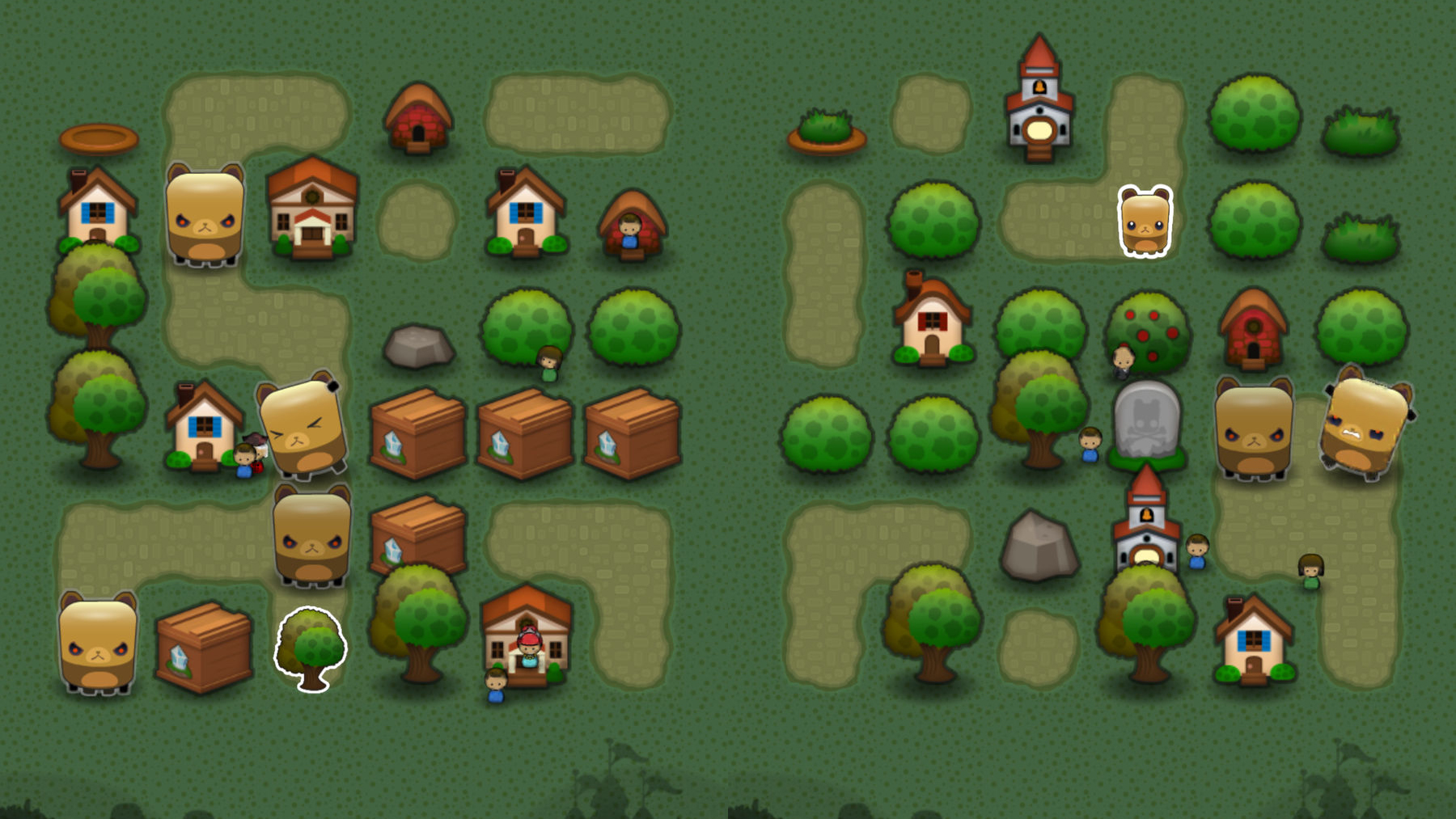
Triple Town
Triple Town is a match game where you merge cartoonish plant life and buildings. But don’t be fooled by the cute facade – this is a brilliantly designed brain-smashingly tough puzzler where you must think many moves ahead to succeed.
In this game, trios of things combine to make other things – for example, three bushes become a tree, and three trees become a hut. Such merges then give you space on the tiny board to evolve your town – especially when one particularly cunning move chains several merges together.
All the while, roaming bears and ninjas complicate matters, blocking squares on the board. At times surreal, Triple Town is also challenging and addictive. Note that free moves are on a replenishing timer, but if you can’t wait for another go, there’s an unlimited moves IAP.
Our favorite free iPad platform games, from classic side-on 2D games to ambitious console-style adventures.
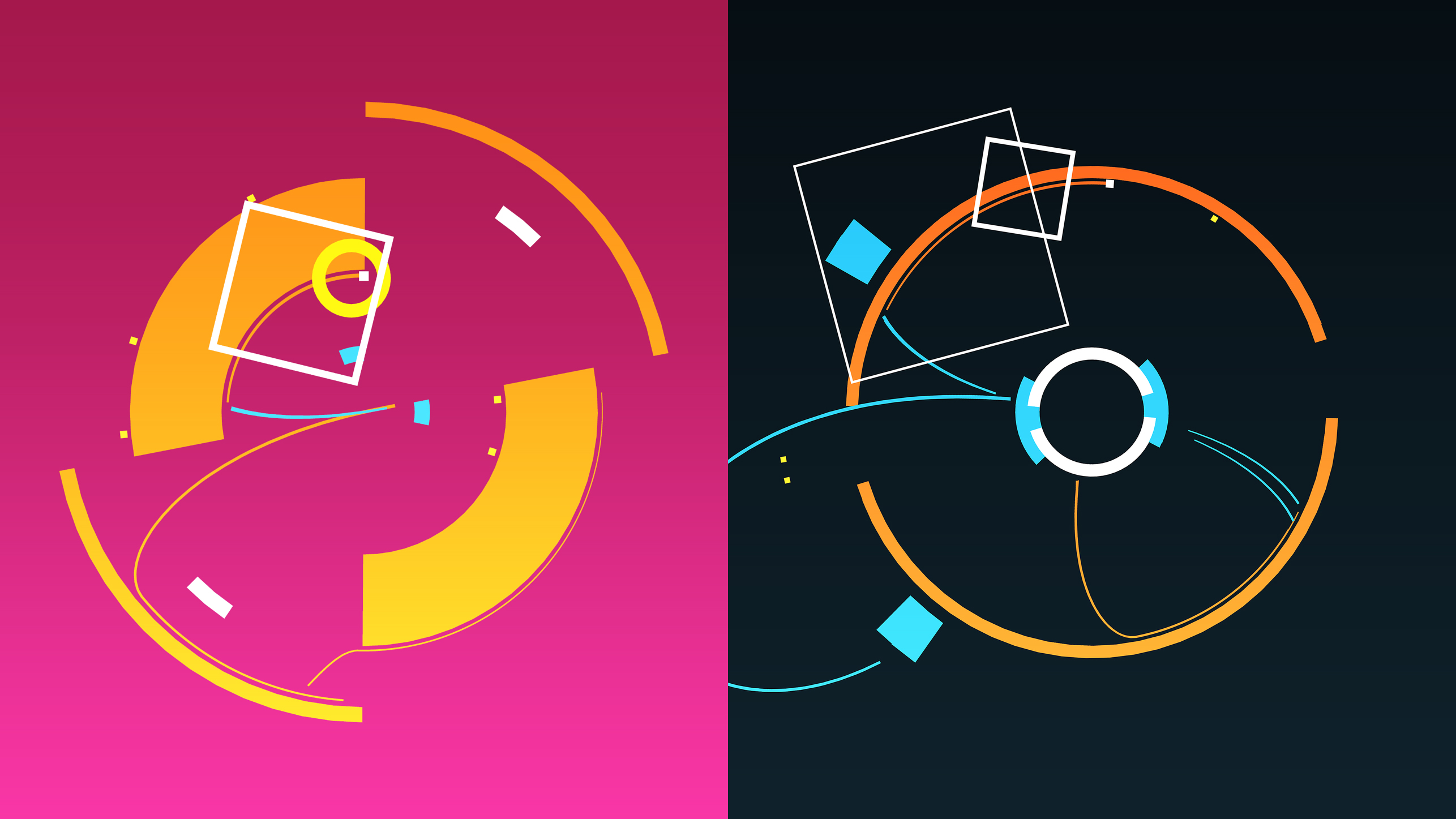
OCO
OCO strips back platform gaming and combines it with minimal modern art. Each single-screen level is based around a circular design. Your polygonal protagonist automatically moves, and you prod the screen to leap, aiming to scoop up collectables before making your way to the goal.
The trick is in figuring out how to get to your targets, which often requires rebounding off of walls, and making use of jump mats and other objects. As you play, OCO provides a treat for your eyes, your pathways simultaneously building a dazzling visual spectacle and procedurally generated soundtrack. And when you’ve beaten all 135 levels, you can make your own in an editor.
With console-like platform games on iPad, you might reason there’s no space for one-thumb contenders. OCO suggests otherwise.
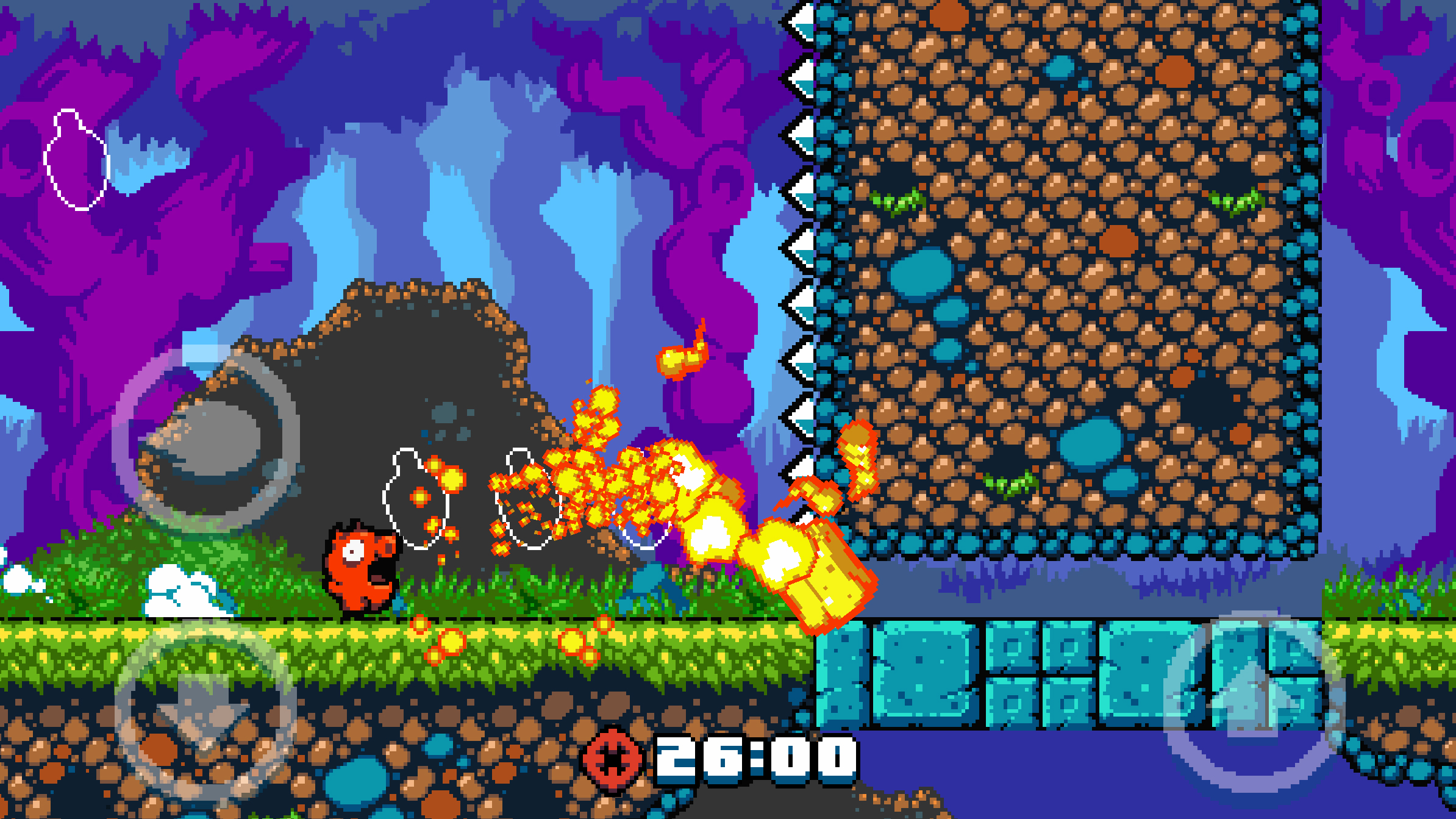
Spicy Piggy
Spicy Piggy is a hardcore auto-running platformer, featuring the porcine winner of a chilli-eating contest desperate to down something cool and refreshing.
Between pig and drink are screens full of hazards, including deadly saw blades, roaming zombies and massive pits. As the screen scrolls, you must tap buttons that make you jump, slide, and belch burps fiery enough to obliterate enemies or even entire walls.
This game is bruising. You’ll need to commit an entire level to memory, and then get your timing just so, in order to get to the end. And although restart points exist, each requires you watch an ad to unlock (unless you plump for an IAP).
Still, if you’ve got what it takes, mastery here feels deeply rewarding each time you successfully get the rotund hero to the juice bar.
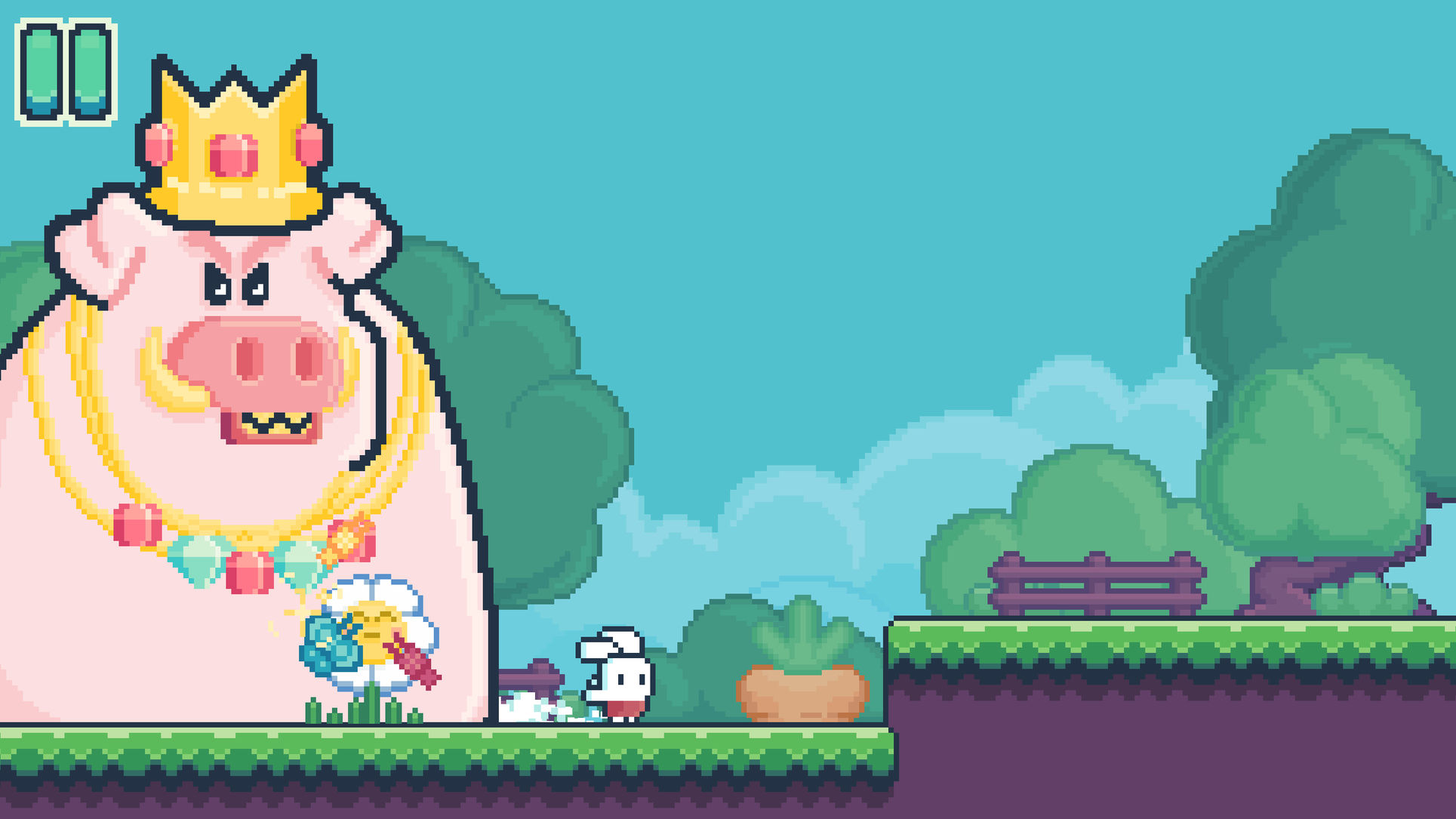
Yeah Bunny 2
Yeah Bunny 2 is a one-finger platformer. Instead of you getting directional controls and a jump button, you can only tap the screen to make the titular bunny jump into the air – or away from a wall it’s precariously clinging to.
Your aim is to roam levels, leaping on enemies, grabbing bling and finding trapped chicks. Because of the inability to turn – unless you bounce off of a wall – getting somewhere specific can be quite complicated.
Sometimes backtracking gets old, but for the most part Yeah Bunny 2 is a fast-paced, colorful treat. Its chunky visuals really click on the iPad, which also affords you a larger viewing area. And there’s plenty of variety in what you face, from pinball-like bumpers that ping you around to a ferocious screen-high pig king in hot pursuit.
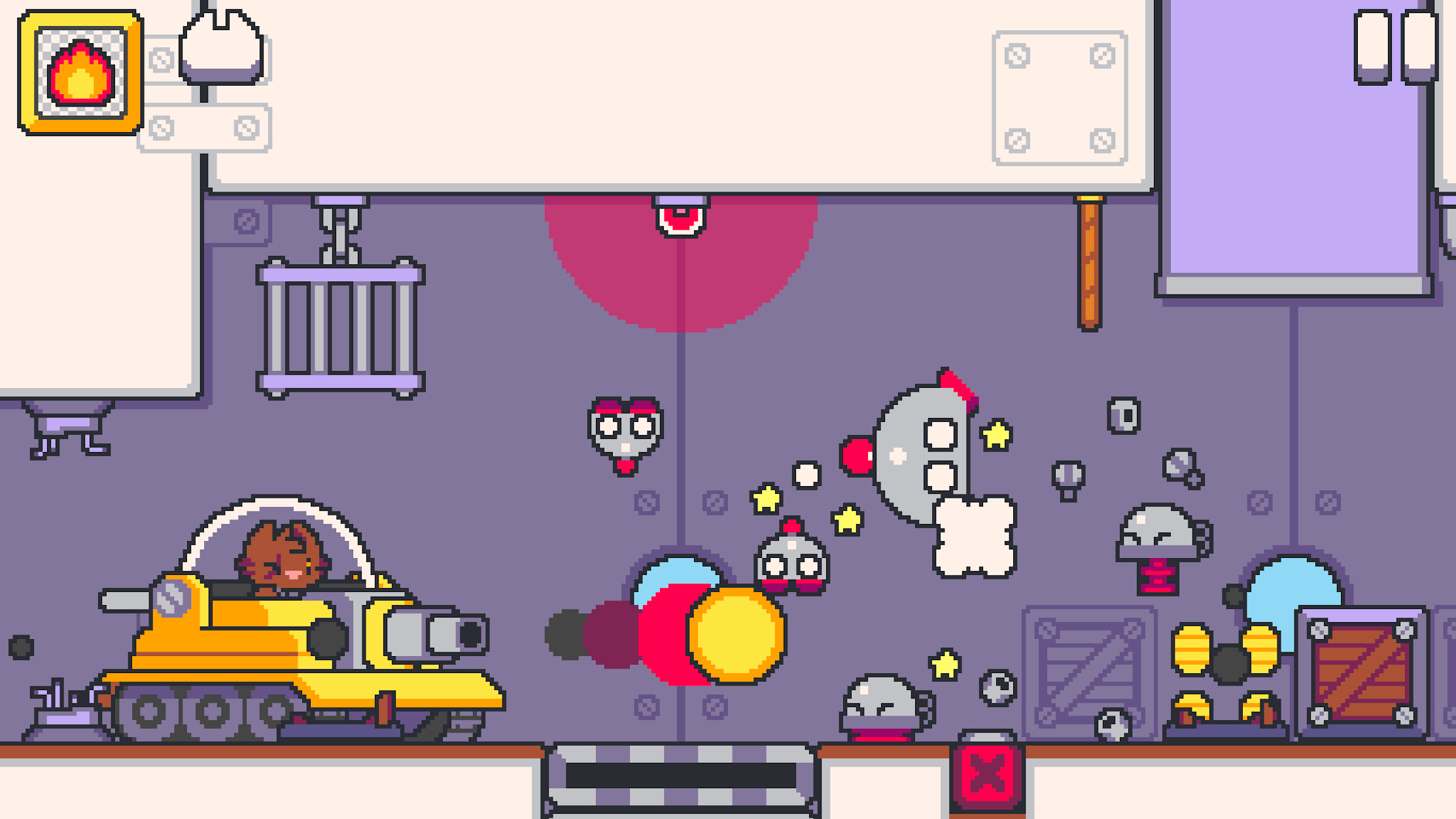
Super Cat Tales 2
Super Cat Tales 2 is a platform game that requires just two of your thumbs. Tap and hold the left or right of your iPad’s display, and you can make your on-screen heroes – cats with unique super powers – walk, dash, leap, and wall-jump like kitty ninjas.
Naturally, there’s a point to all this activity: the cats are trying to save their world from an alien invasion. They must therefore scoot about, avoid enemies, find hidden secrets, and grab the bling that’s oddly left lying about in this kind of game. Also, for some reason, they can sporadically jump into huge yellow tanks to dish out serious destruction.
With a smartly written script, superb level design, and vibrant retro-infused visuals, Super Cat Tales 2 is one of the best platformers on iPad. That it’s free makes it a steal.
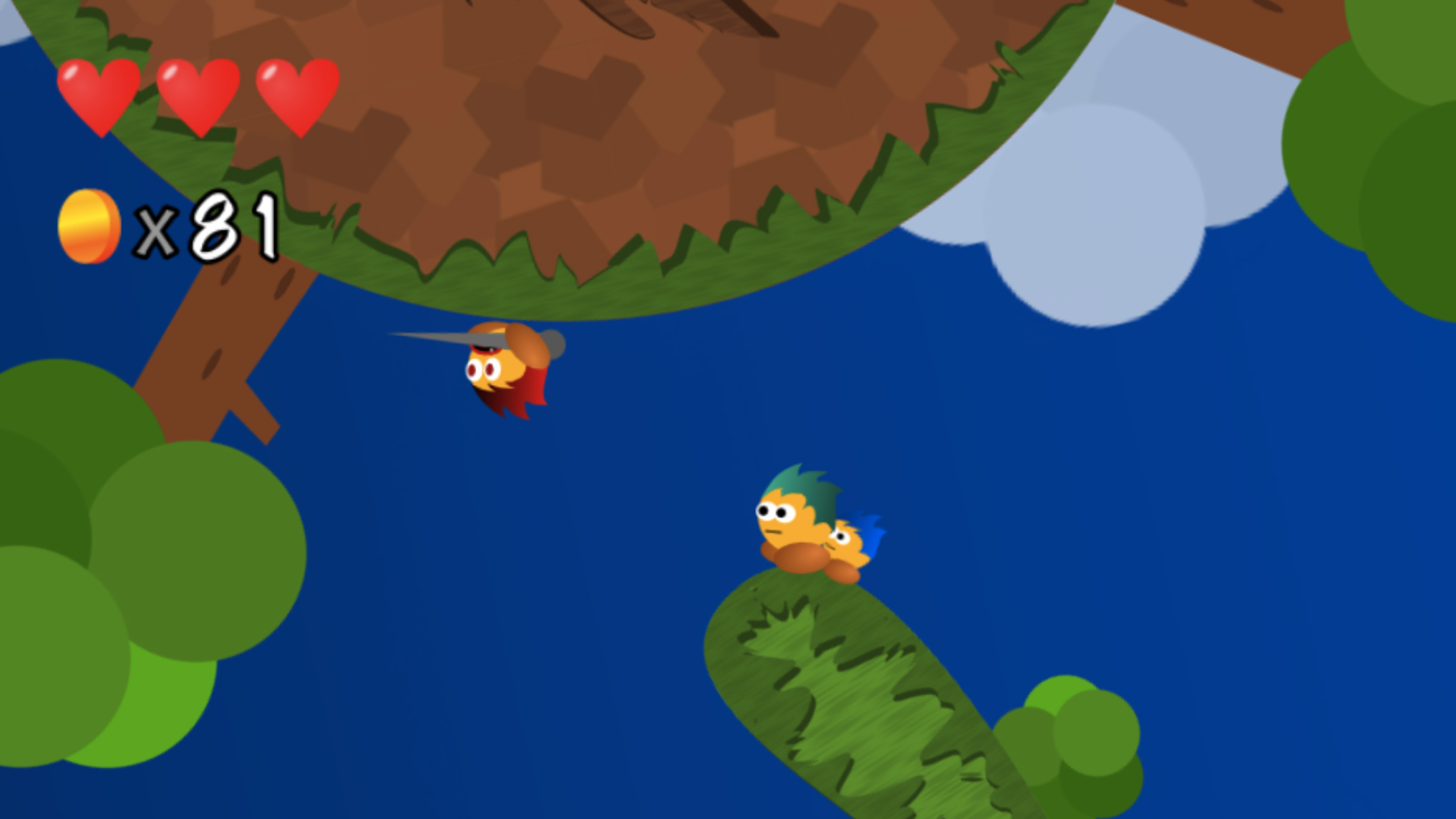
Soosiz
Soosiz is a fun platforming adventure which features a blobby protagonist, who in traditional platformer fashion runs left and right, leaps into the air, grabs gold coins, and jumps on enemies to dispatch them.
The twist? The world of Soosiz is based around tiny circular islands hanging in space, each of which has its own gravitational pull, adding an exciting new twist to a tried and tested format.
As you sprint from left to right, the screen spins and whirls, disorienting you as you figure out a route to the exit – and how not to leap from a floating island into oblivion. After a recent refresh, the game represents a great spin on an age-old concept.
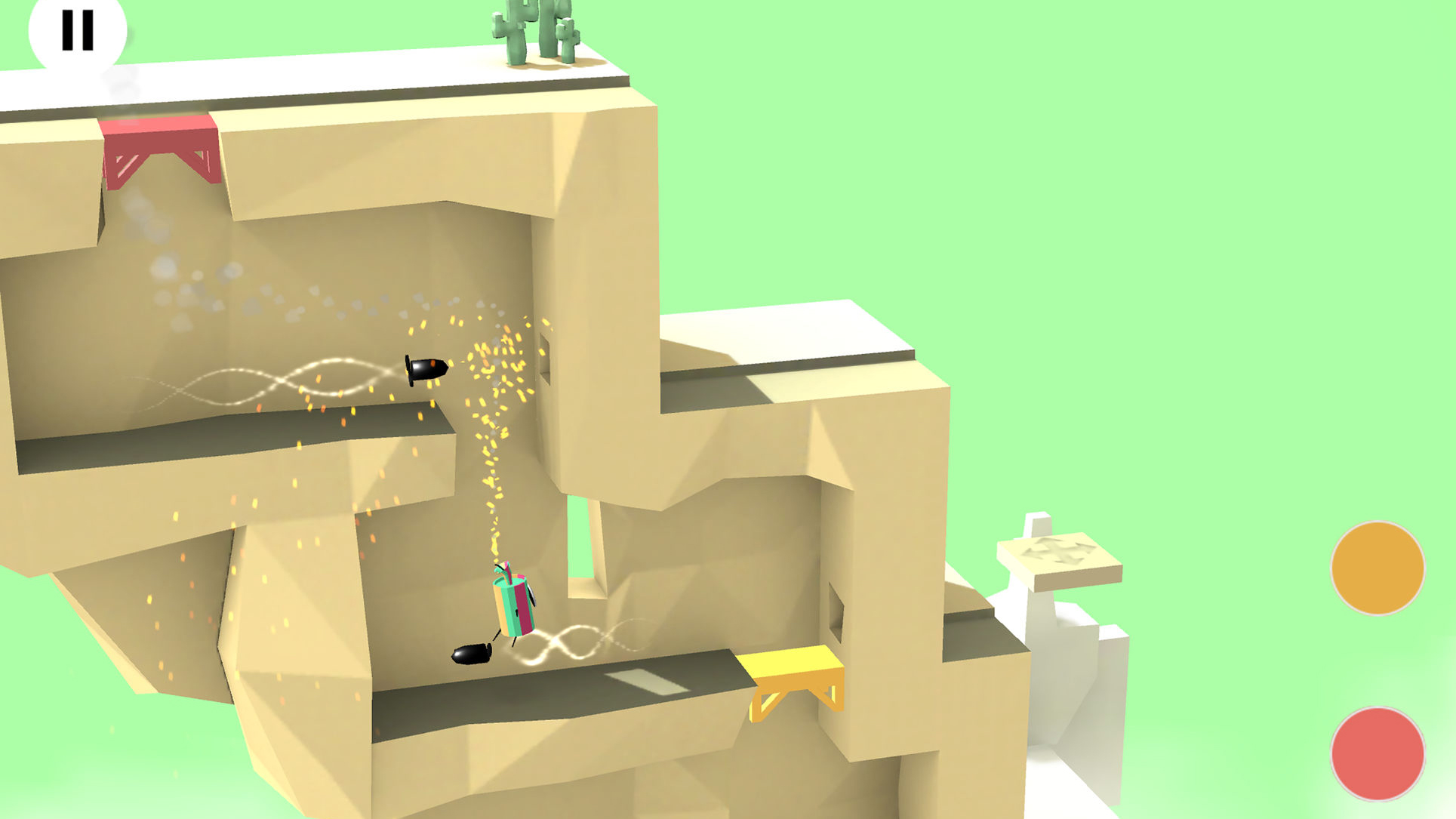
It’s Full of Sparks
It’s Full of Sparks is a platform game in a world where firecrackers are cruelly aware they’re about to explode – and are desperate to find water to extinguish their sparks.
Each side-on level is an urgent sprint to the finish line. The first is literally just that, but – inevitably – you’re soon dealing with platforms and hazards, many being triggered by a trio of colored buttons that enter the equation.
This thumb choreography adds another level to It’s Full of Sparks. It’s not enough just to be fast and know your way to the exit – you’re also frantically tapping buttons on and off, all too aware that your firework is about to go out in a blaze of glory.
It’s frustrating when that happen moments before watery bliss, but short, smartly designed levels keep you running, jumping and splashing, even when you’re occasionally gnashing.
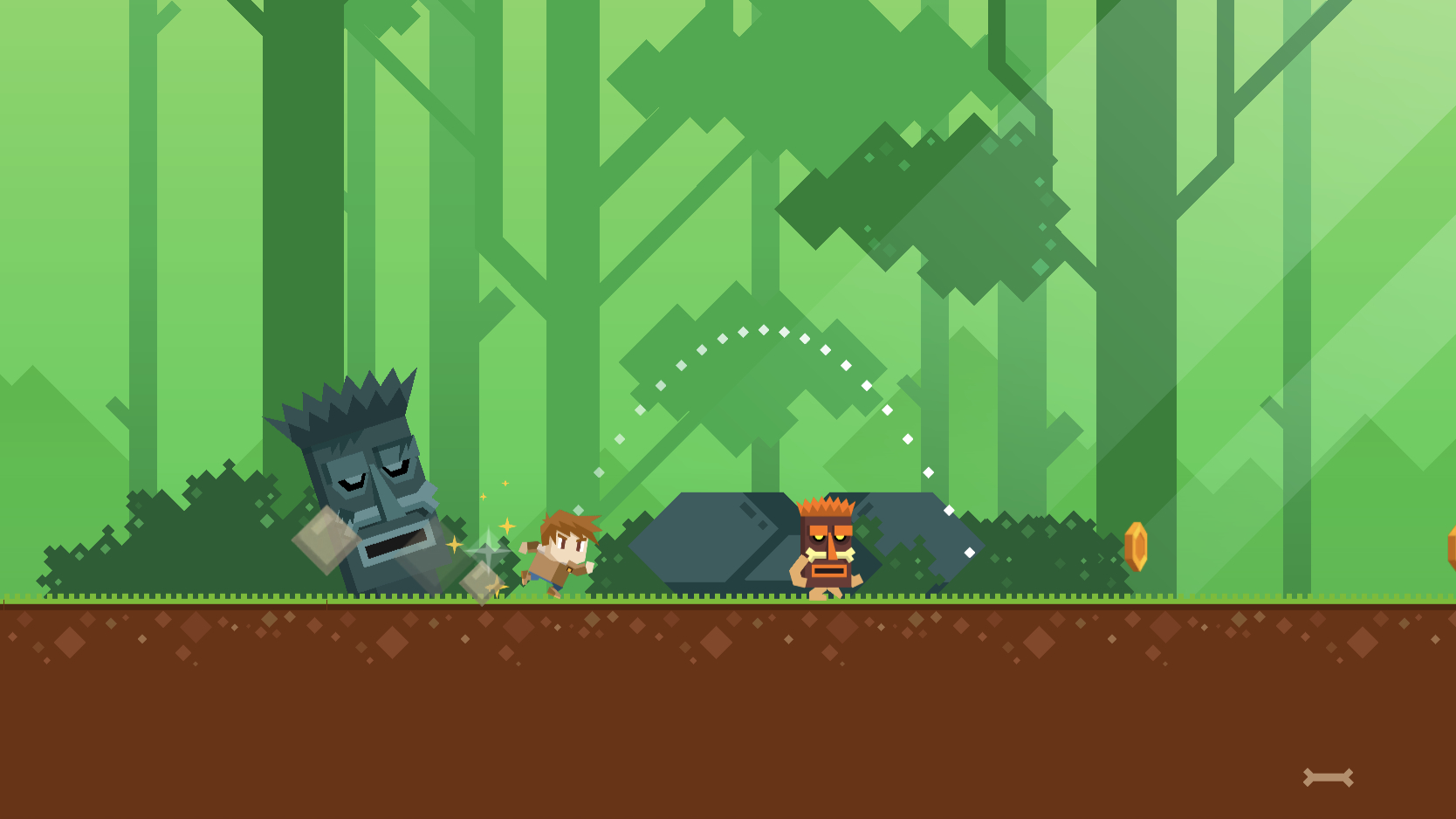
Runventure
Runventure is a streamlined platform game that finds your little hero darting through trap-laden jungles, temples and castles. However, rather than use a traditional D-pad or have you auto-run and tap to jump, Runventure tries something new.
At the foot of the screen is the run-jumping bar. Drag across it and the hero runs, and the game previews the jump you’ll make on lifting your finger. With deft timing, you’ll leap on enemy heads, rope-swing across deadly ravines, and totally not die by falling into a spike-filled pit like an idiot.
That’s the theory. Initially, you’ll fail often as you get to grips with what seems like a needlessly awkward control system. But stick around, discover the nuance in the leapy action, and Runventure proves compelling. If nothing else, grab if if you’re tired of the same old thing.

Cally’s Caves 4
Cally’s Caves 4 is a free game that appears so generous that you wonder what the catch is. The Metroid-style run-and-gun shenanigans find you leaping about, shooting anyone in your path. However, the hero is a girl with pigtails and a surprising arsenal of deadly weapons, neatly subverting convention.
The plot’s a tad more mundane - something about finding a cure for a curse. But the game retains its oddball credentials with a gaggle of strange enemies - everything from footballers to cleaver-lobbing chefs.
The jumping, blasting, and exploring is compelling stuff, which is just as well, because this is a big game, with hundreds of sprawling levels, 11 bosses, and stints where you temporarily control a psychotic ninja bear. No, that last bit isn’t a typo; and, yes, those bits are particularly great.
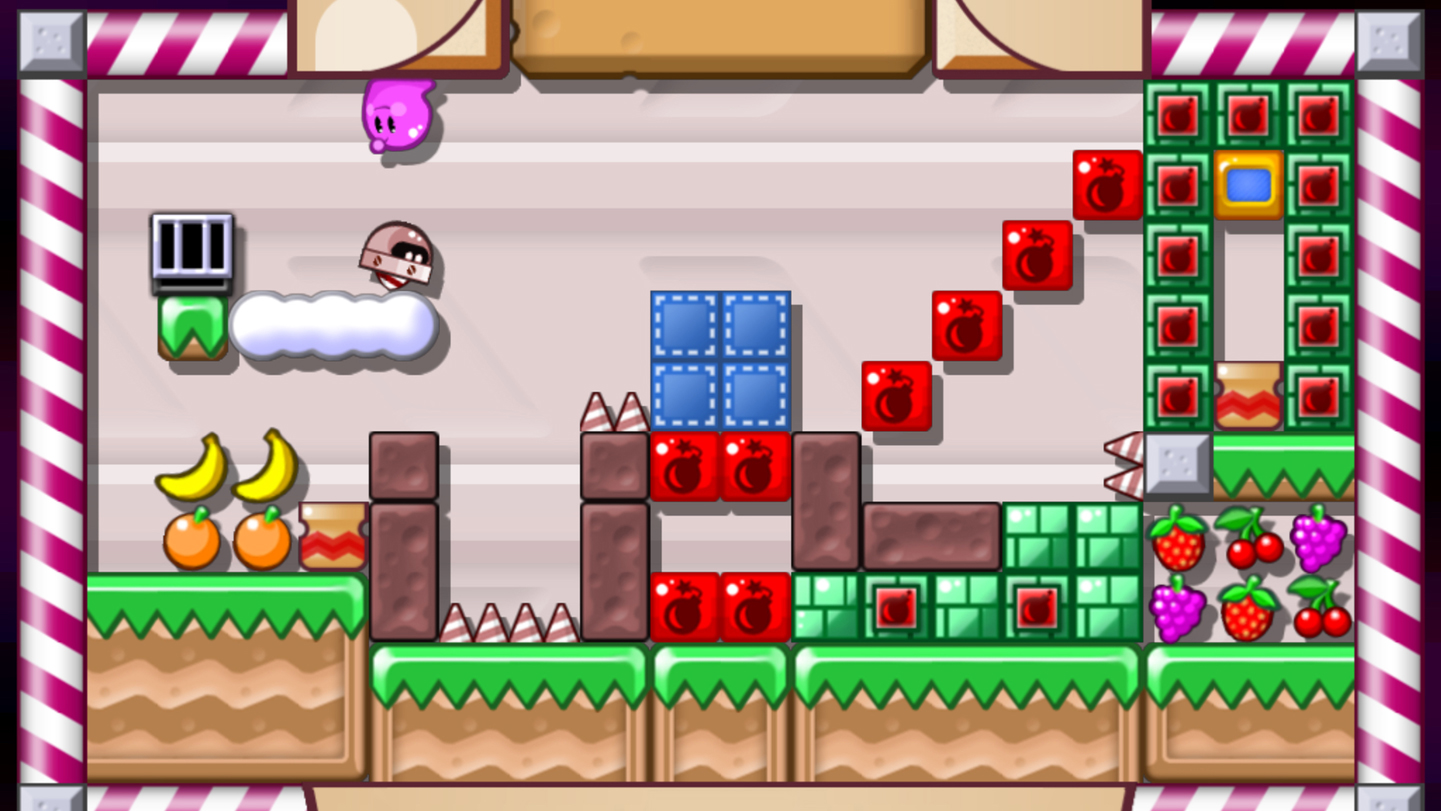
Hoggy 2
Hoggy 2 is a platform puzzler, with a firm emphasis on the puzzling. It features some cartoon slime molds, who’ve got on the wrong side of the villainous Moon Men. These rogues have taken the heroes’ kids, and so parents Hoggy and Hogatha vow to get them back.
The Moon Men’s fortress is a huge maze peppered with jars. Within each jar is a room filled with platforms, enemies, hazards, and fruit. Eat all the fruit and you get a key. Get enough keys and you can venture further into the maze.
The snag is that getting at the fruit can be tricky. Hoggy 2’s levels are cunningly designed, often requiring you perform actions in a specific order and manner, making use of power-ups that transform the protagonists into trundling granite squares or screaming infernos.
Add in lush console-style visuals and a level editor, and you’ve got one of the biggest bargains on mobile.
Our favorite free iPad logic tests, path-finding challenges, bridge builders, and turn-based puzzlers.
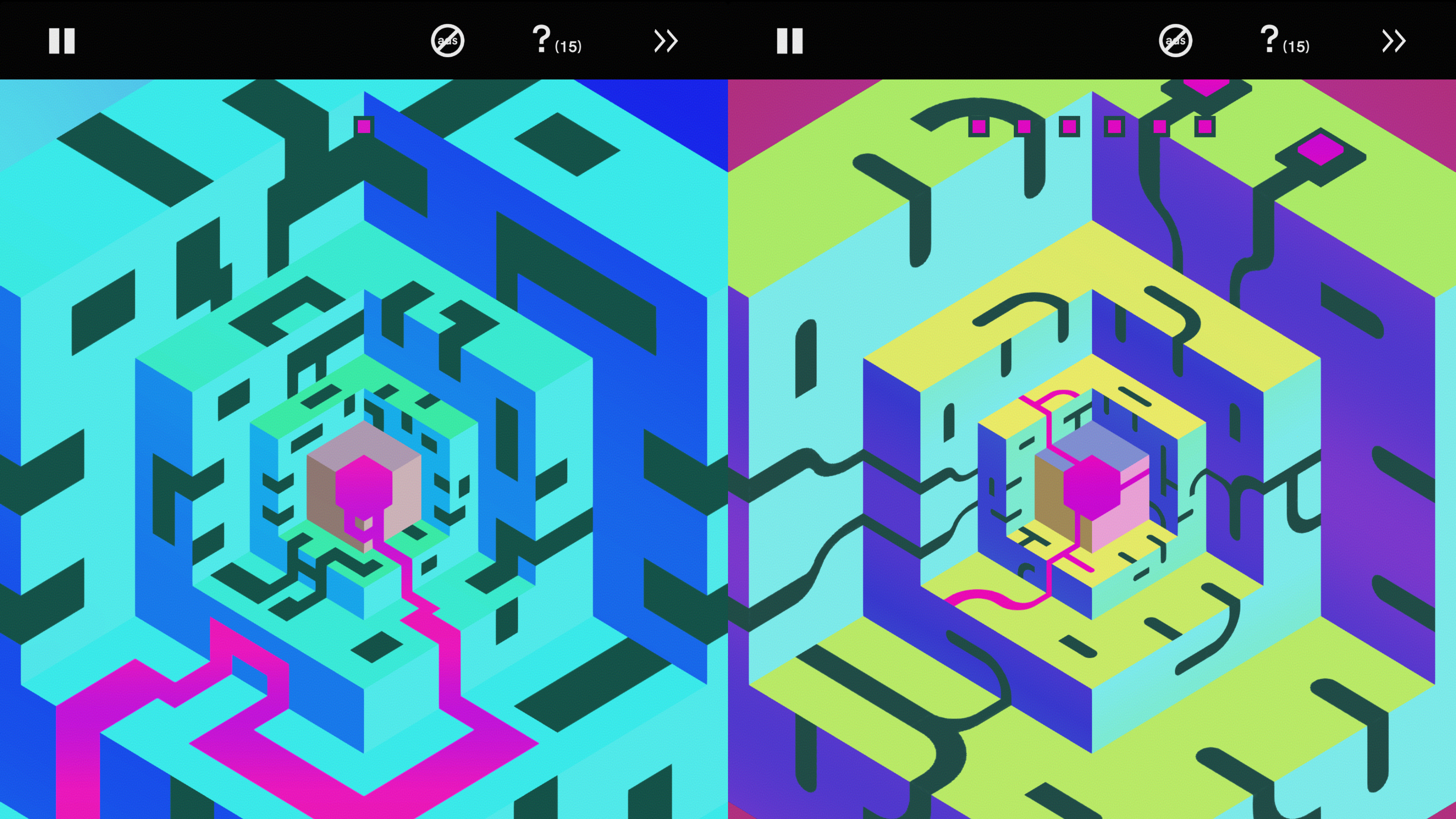
Kubrix
Kubrix sits part way between puzzler, meditative experience, and plain weird. First, the puzzling: this involves linking the center of the puzzle to square nodes, often (although not always) situated towards its edges. To achieve your goal, you rotate patterned sections of the puzzle, aiming to create unbroken pathways.
The meditative side comes from is free iPad game’s zero-stress nature. It’s the sort of thing you can play in a state of zoned-out bliss, working your way to a solution by fiddling around with what’s in front of you.
What really sells the game is its strange presentation. The center of the puzzle creepily beats like a heart, and other sound effects include mechanical scrapes and gruesome squelches. You work through each level feeling like you’re manipulating a techno-organic construct – some kind of living being, even if Kubrix is of course never anything other than abstract.
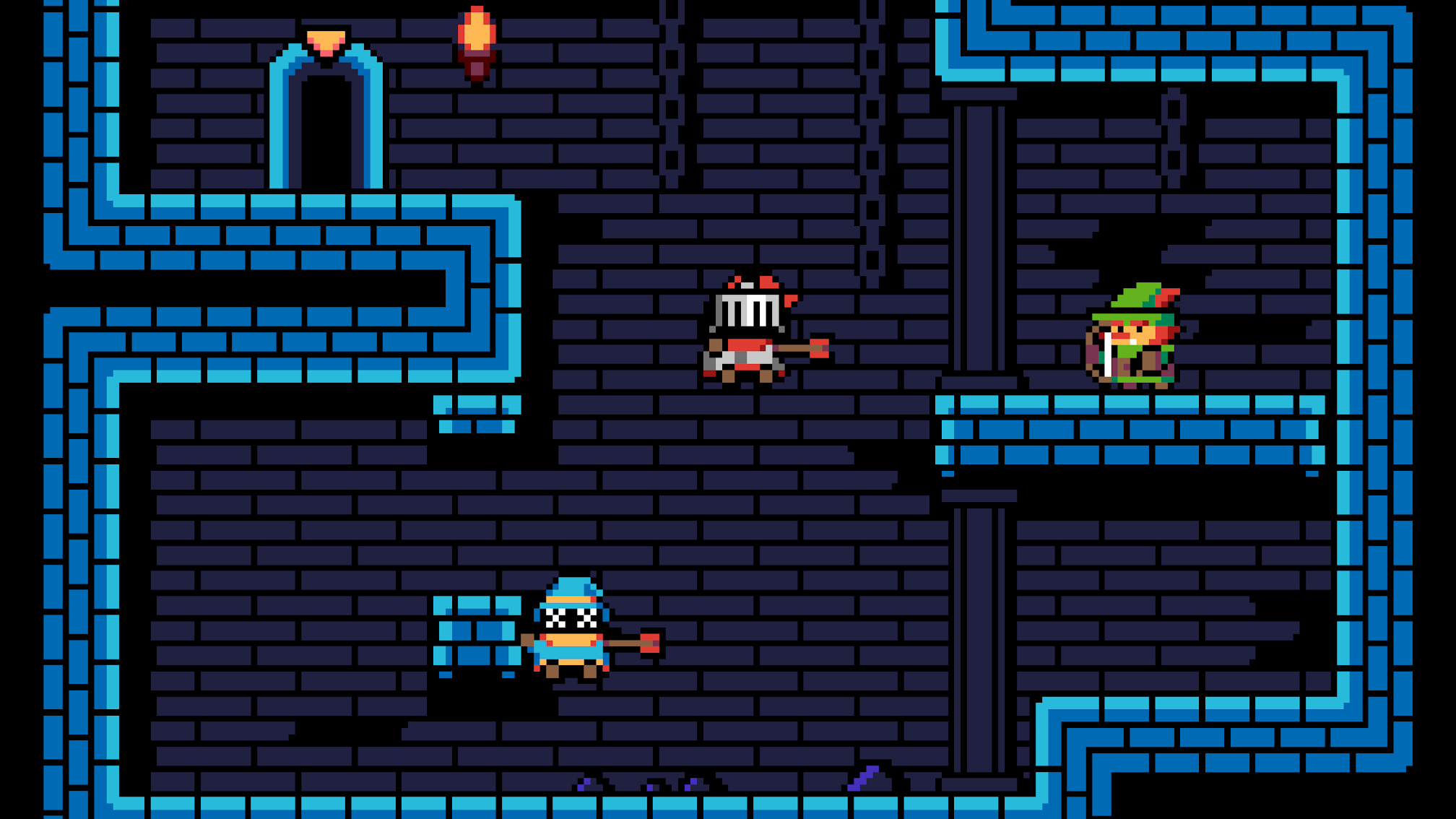
Total Party Kill
Total Party Kill upends any gaming conventions you’d expect when a heroic party enters a dungeon. Usually, each member would help the others survive. But here, the knight, mage, and ranger use their powers to ‘sacrifice’ team-mates, and use their corpses as stepping stones to tricky-to-reach exits.
Early on, it’s simple enough to figure out what to do. But as you reach the later dungeons, figuring out the precise order in which to dispatch your colleagues – and precisely how to do so – can be a serious challenge.
The black humor is appealing, as your ranger leaps on a cross-eyed mage pinned to the wall, before doing a little dance on reaching the exit. But the mechanic also freshens up what could otherwise have just been yet another entry in the single-screen puzzler sub-genre.
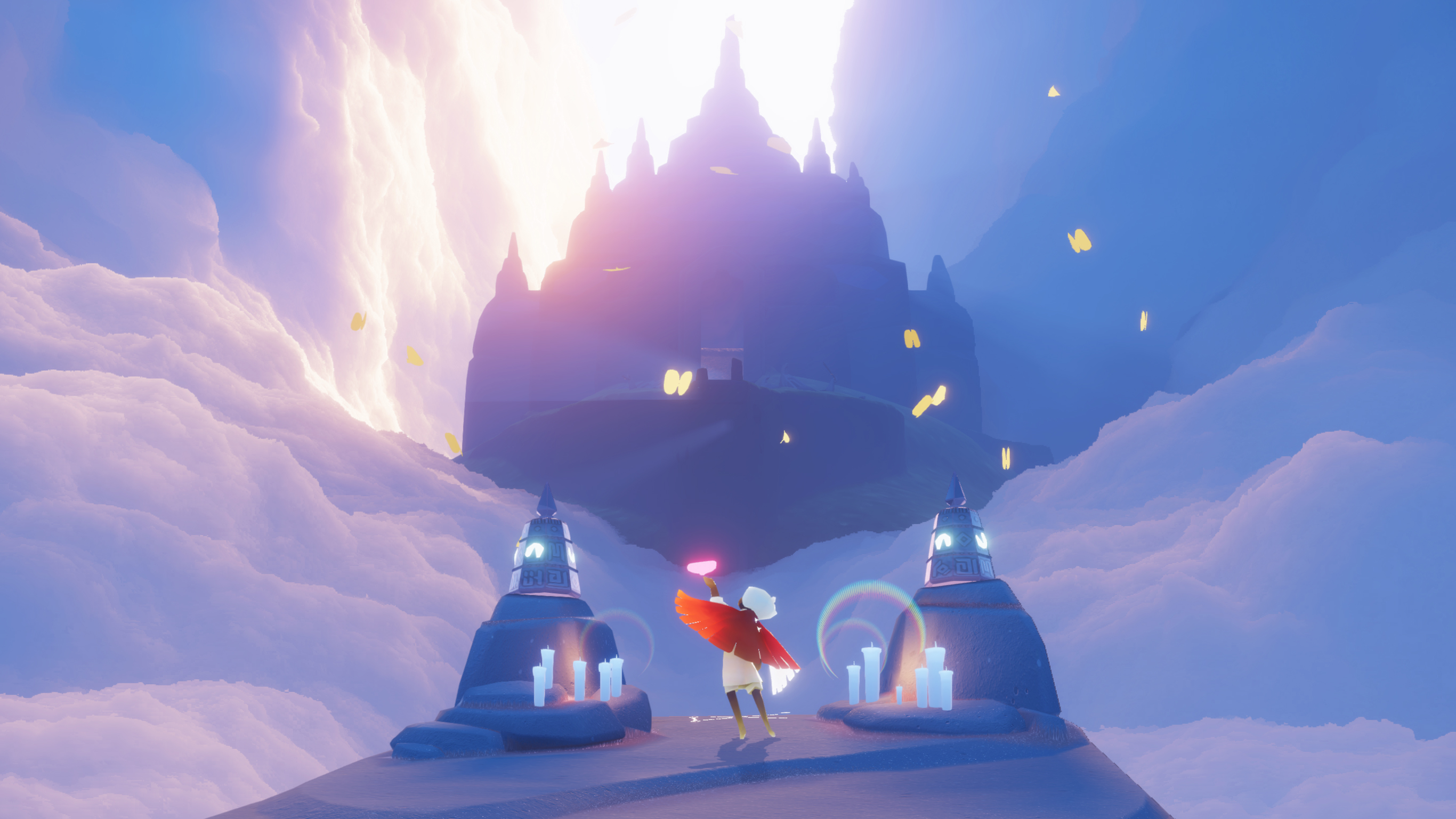
Sky: Children of the Light
Sky: Children of the Light is a multiplayer online adventure. Created by the brains behind console classic Journey, Sky is a visually dazzling game, which often finds your winged protagonist gliding above lush landscapes and skidding down hillsides.
Your aim is to spread hope through a kingdom by returning fallen stars to the skies. This means plenty of exploration to find objects that unlock further progress. Most puzzles barring your way are quite simple, but they often require the help of friends – temporary or permanent – you can make in-game.
From the eye-popping visuals to the smartly conceived social interactions, Sky is a must-install. There are odd moments of frustration, but these are easily forgotten when you’re reveling in the experience, lost to one of the most beautiful game worlds imaginable.
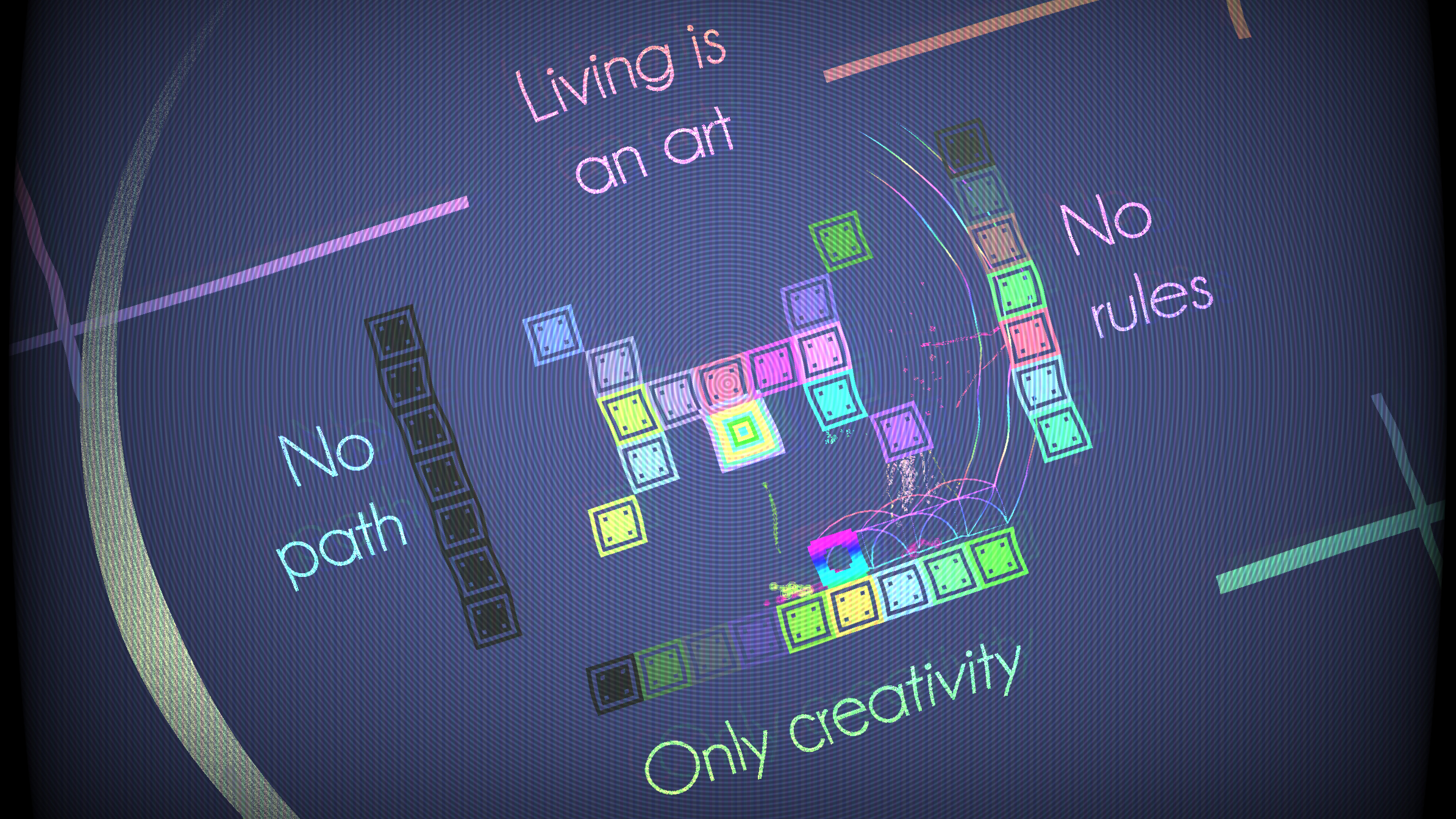
XOB
XOB is a precision platform game that’s heavy on the path-finding and puzzling – and even heavier on the psychedelics. The gameplay primarily involves tilting a play area comprising square blocks. The aim is to nurse a trundling square to an exit, grabbing pick-ups along the way.
Fall over an edge and the entire level flips accordingly. Similarly, you can leap to a ceiling to turn everything upside down. As you progress, routes become increasingly labyrinthine.
All this plays out alongside a gorgeous old-school CRT aesthetic, which feels perfectly at home on the TV-like display of an iPad. As a freebie, the game’s also got the kind of business model we wish others would steal – you’ll only ever see 24 ads, and if you want, you can watch them all at once. Top stuff.
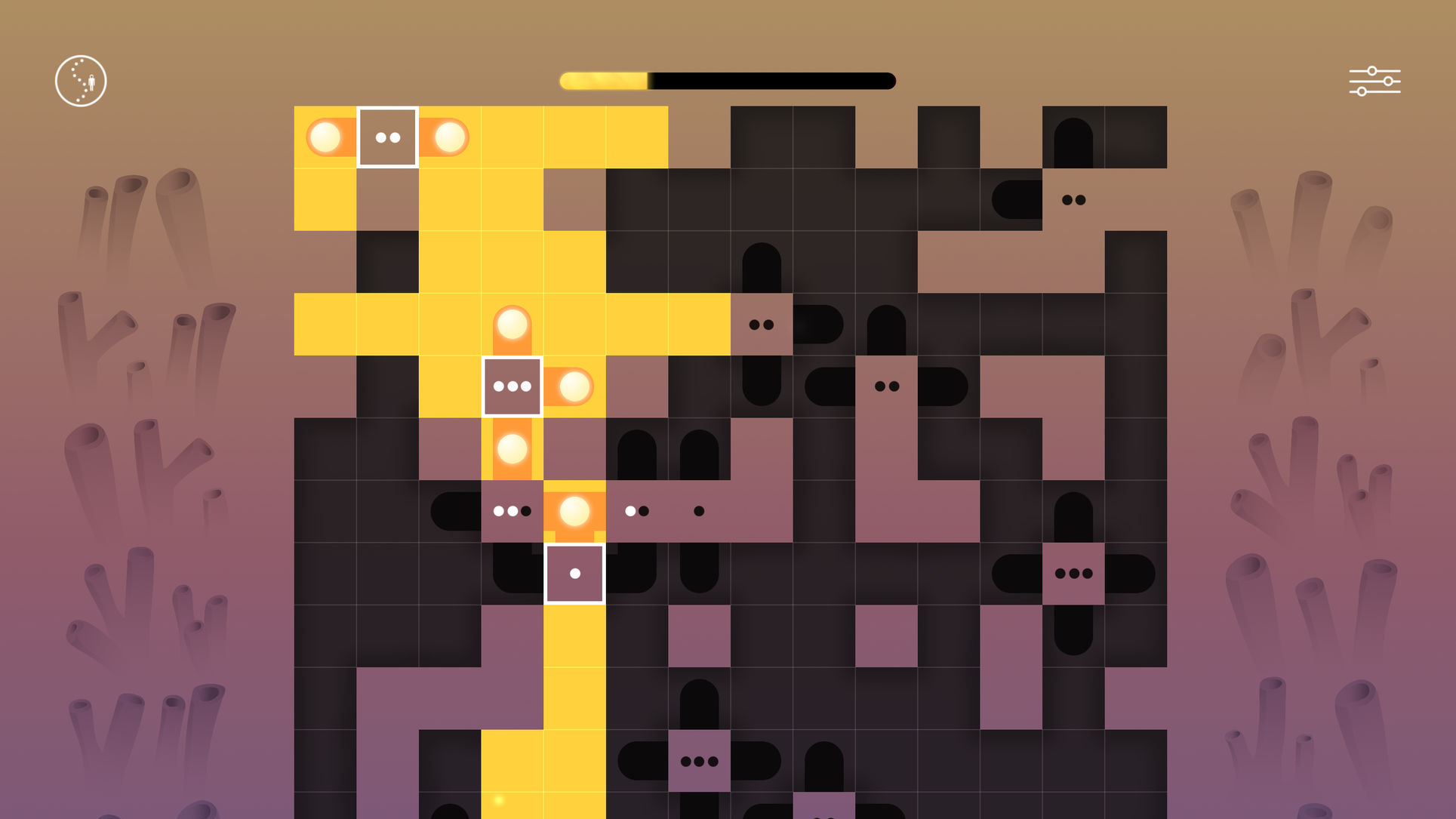
Ilu
Ilu is a puzzler that wants you to illuminate the darkness with a combination of lights and logic.
A light can be placed anywhere on the board, at which point beams head vertically and horizontally until they reach a wall. What complicates matters is, in a ruleset vaguely reminiscent of Minesweeper, the board has nodes that indicate how many lights must be placed next to that point.
Put too many lights by a node, or shine two lights into each other, and a yellow energy bar starts turning red. Too much red and all your lights fizzle out. Your best bet, then, is to think your way methodically towards the single unique solution for each board, in what’s an engaging and, yes, illuminating slice of iPad puzzling.
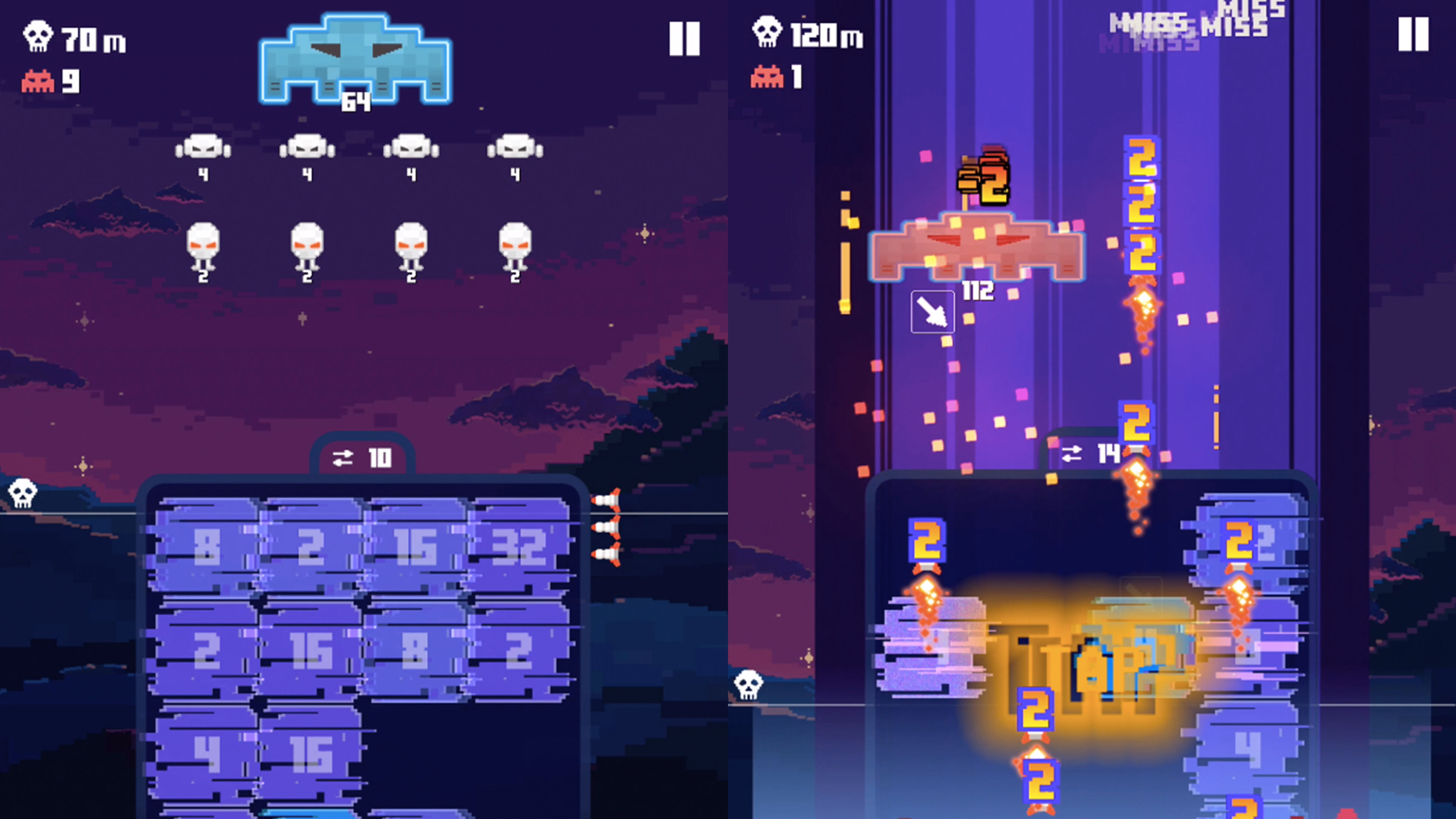
Invaders 2048
Invaders 2048 smashes the classic arcade shooter into relatively recent cult hit 2048. Rather than firing lasers at descending alien craft, you merge pairs of tiles together, doubling their face value.
Chain a bunch of merges and you can tap the screen like a maniac during ‘fever time’, to unleash missile death. Otherwise, you bide your time, until you have sufficient face values to trigger a manual missile attack and defeat your foes.
Vanilla 2048 never really cut it, being a low-rent rip-off of Threes! – and the same goes for most games that built on that basic design. Invaders 2048 is an exception, not least because of its varied and bite-sized levels – a new one’s always waiting for a few entertaining minutes of puzzling and blasting.
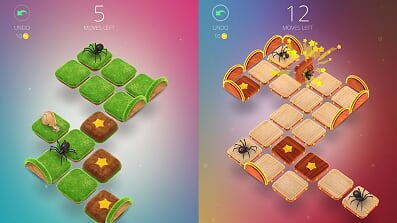
Humbug
Humbug is a sweet-natured puzzler that has loads of bugs. Not in the computers-go-wrong sense, but creepy crawlies – spiders, ladybirds, snails, and so on.
Each isometric level is based on a tiled grid, atop which are pathways, barriers, gaps, and stars. The idea is to get a creature to each star, thereby flipping that tile over. The trick is to do this within a moves limit, also taking into account how each creature moves.
For example, snails slowly move one space when swiped, but spiders dart along until they hit something. Grasshoppers, meanwhile, leap over barriers, or merrily bounce on the backs of other critters.
In terms of mechanics, this still isn’t anything substantially new, but the presentation and smart puzzles make this bug worth grabbing.

Turn Undead 2: Monster Hunter
Turn Undead 2: Monster Hunter is an odd beast. Its framework echoes Ghosts ’n’ Goblins – run-and-gun platforming as you mow down zombies, skeletons, and vampires. But unlike that arcade classic, Turn Undead 2 is turn-based.
The end result is a curious mix of action and puzzling, where you make your move and the game responds. Like excellent premium title Lara Croft GO, Turn Undead 2 infuses a surprising amount of tension in its clockwork mechanics – not least when foes are in hot pursuit, and you know you can’t put a foot wrong.
It’s compelling stuff, but can be brain-smashingly tough too. So when failing often, take a breather to make sure the brains getting smashed are those of the undead – and not your own.

Slydris 2
Slydris 2 subverts Tetris by rethinking and expanding on that basic framework, transforming the result into a tactical turn-based puzzler. Shapes still fall into a well, but several appear at once – and during each go, you can only move one of them (either a hanging shape, or one already in the well).
In order to keep the well from filling up, you must therefore ‘shatter’ larger pieces by using part of them to complete lines, whereupon cut off bits rain down and create chain reactions. Immovable shapes make progress tougher, but power-ups come to your aid, including a two-by-two block that smashes anything it lands on.
This is smart, cerebral, neon-infused endless puzzling magnificence – one of the best games of its kind on any platform.
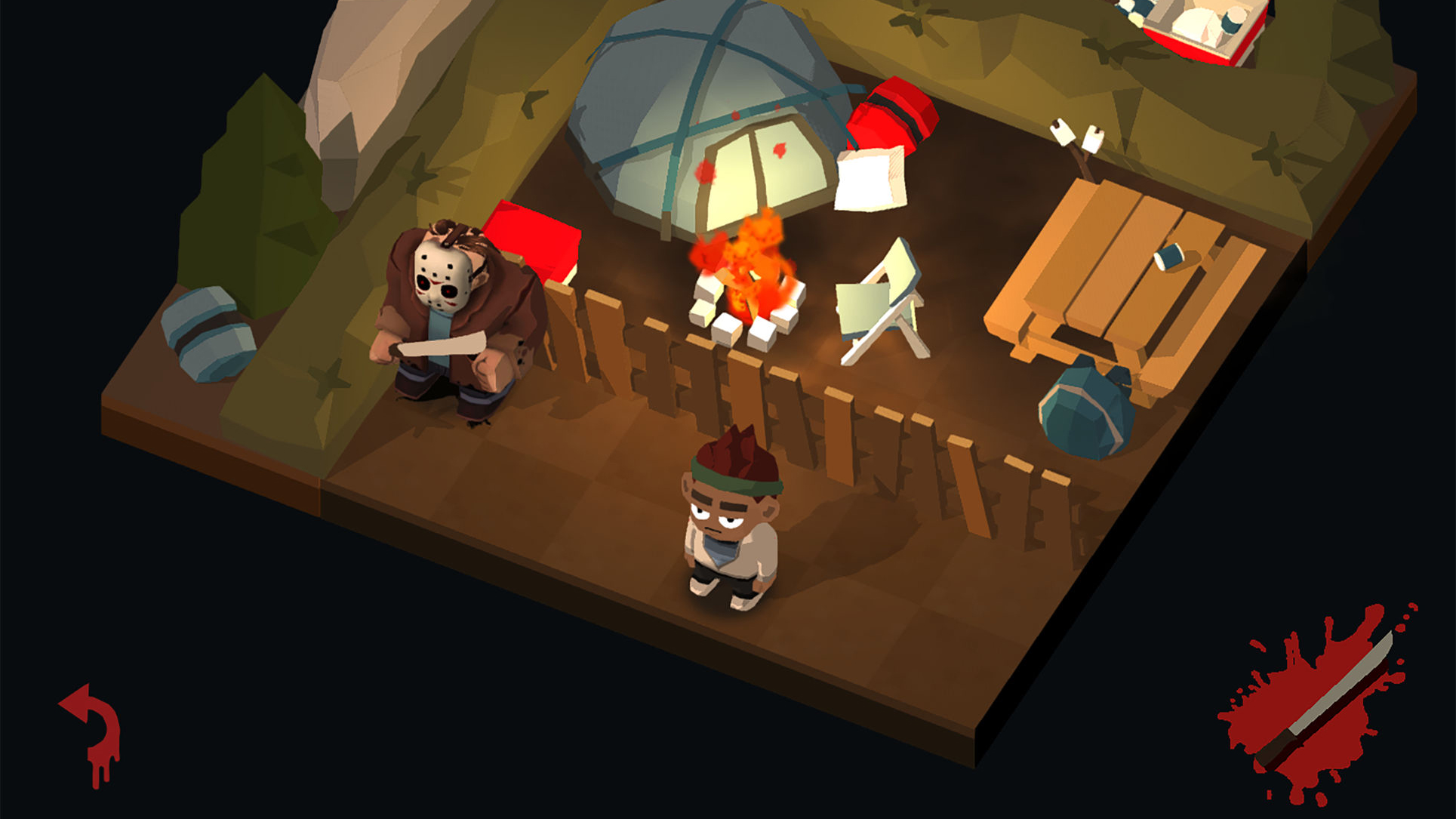
Friday the 13th: Killer Puzzle
Friday the 13th: Killer Puzzle is a sliding puzzler with lashings of gore. That’s not a combination you hear too often, but Killer Puzzle is unique. Set broadly in the world of Friday the 13th, it features horror icon Jason Voorhees on a mission to chop up anyone in his immediate vicinity.
That might sound horrific, but Killer Puzzle is more South Park than splatter flick. The chunky visuals present everyone as colorful but gormless cartoon characters, and the more bloody (and ridiculous) cut scenes can be skipped entirely.
Really, it’s the puzzling bits that will make you stick around. Across the game’s many levels, your brains are given a beating as you figure out labyrinthine routes to get to your final targets. (Still, that’s a nicer ‘brain beating’ than the targets end up getting…)
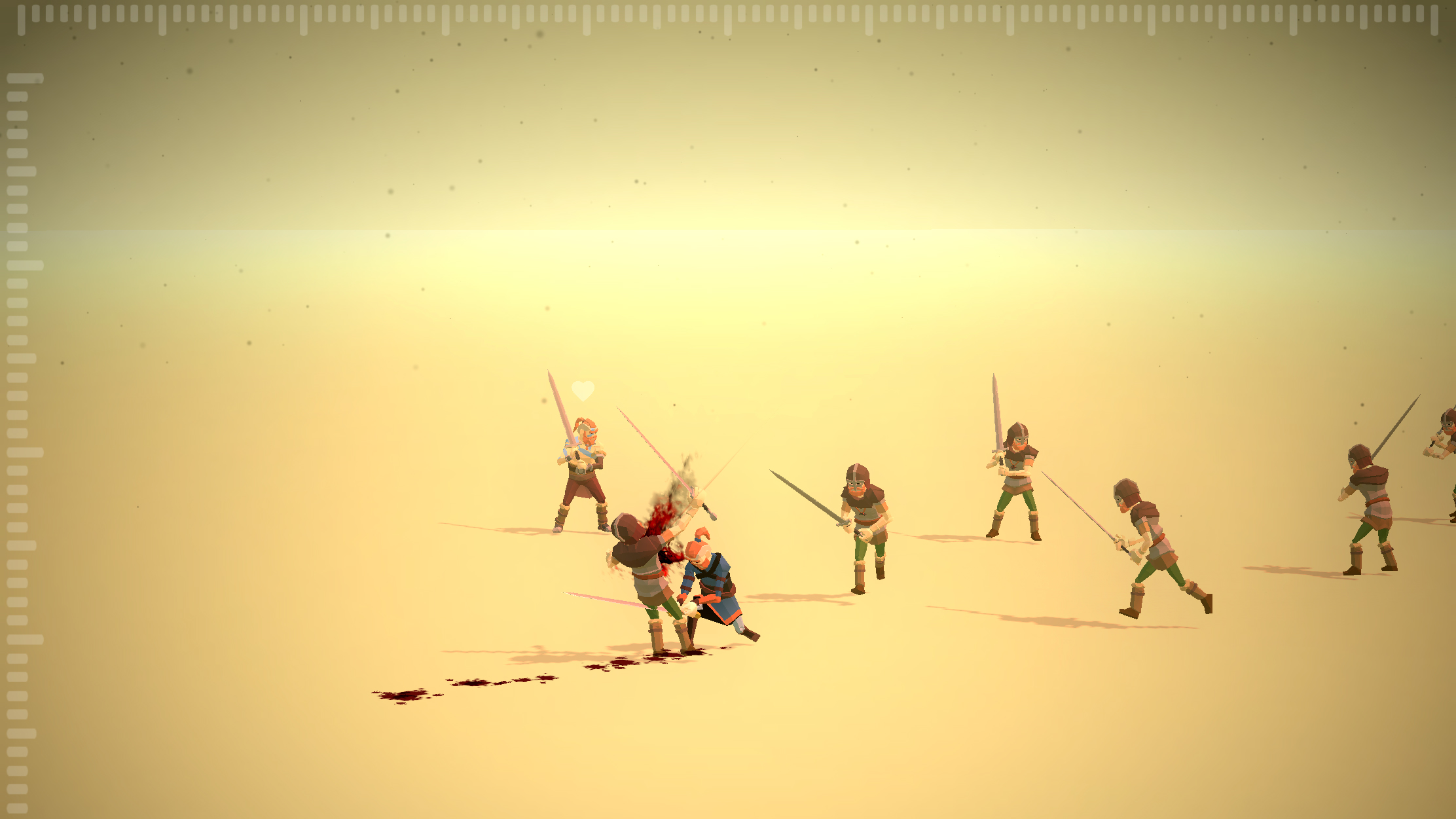
A Way To Slay – Bloody Fight
A Way To Slay – Bloody Fight is a series of epic sword fights reimagined as turn-based strategy. You start each bout surrounded by weapon-wielding foes eager to take your head off. Double-tap one and you almost instantly appear before them, for a swift bit of ultra-violence. But then enemies get their turn. End up too near one of them and it’s curtains for you.
Assuming you can deal with liberal amounts of videogame blood being sprayed about, A Way To Slay is an excellent puzzler. Parked halfway between action and strategy, it feels fresh; and it’s enhanced further by the clever way you can adjust the zoom and panning of what you see before you, as if directing a very stabby movie.
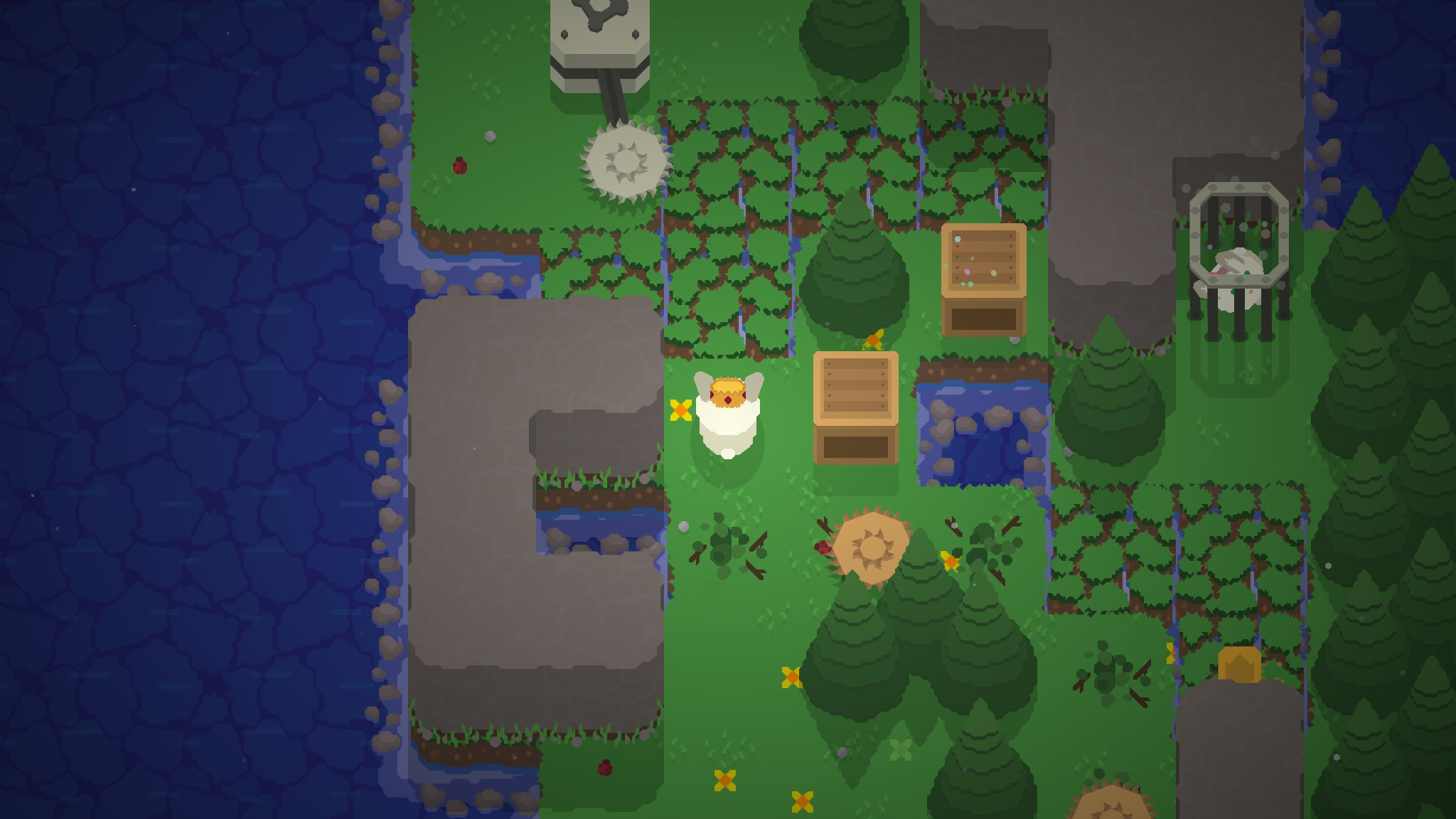
King Rabbit
There's not a lot of originality in King Rabbit, but it's one of those simple and endearing puzzle games that sucks you in and refuses to let go until you've worked your way through the entire thing.
The premise is hackneyed — bunnies have been kidnapped, and a sole hero must save them. And the gameplay is familiar too, where you leap about a grid-like landscape, manipulating objects, avoiding hazards, finding keys, unlocking doors, and reaching a goal.
But the execution is such that King Rabbit is immediately engaging, while new ideas keep coming as you work through the dozens of puzzles. Pleasingly, the game also increases the challenge so subtly that you barely notice — until you realise you've been figuring out a royal bunny's next moves into the wee small hours.

Does Not Commute
Time travel weirdness meets the morning rush hour in Does Not Commute. You get a short story about a character, and guide their car to the right road. Easy! Only the next character's car must be dealt with while avoiding the previous one. And the next. Before long, you're a dozen cars in and weaving about like a lunatic, desperately trying to avoid a pile-up.
For free, you get the entire game, but with the snag that you must always start from scratch, rather than being able to use checkpoints that appear after each zone. (You can unlock these for a one-off payment of $2.99/£2.99/AU$4.49.)
Our favorite free iPad on-rails, 3D and 2D racers, and trials games.
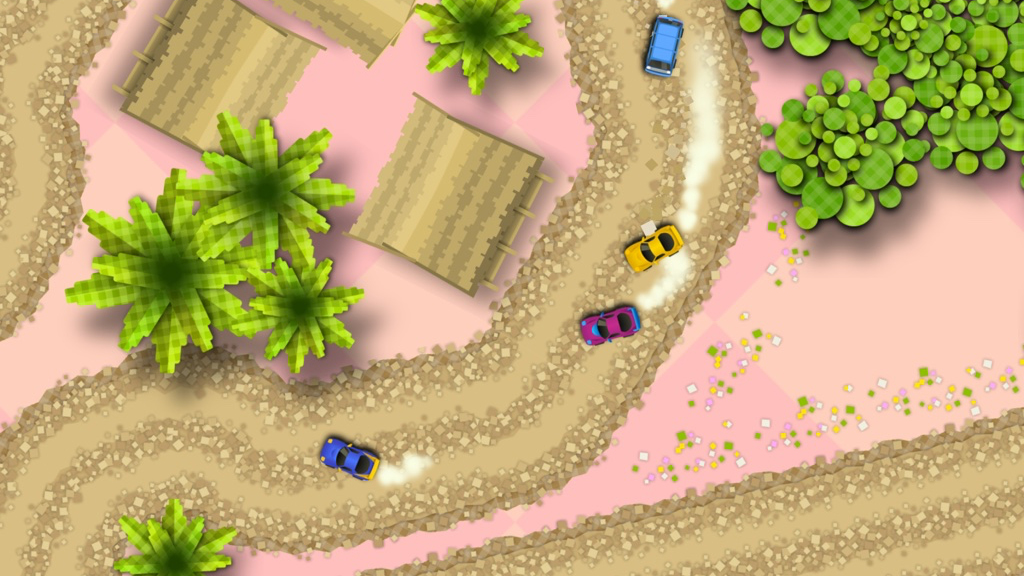
Pico Rally
Pico Rally is a high-octane racer controlled with a single thumb. In short, hold down on the screen, and you get a burst of speed; raise your digit and you slow down a bit. Steering is taken care of, and so victory is about learning the twists and turns in each circuit, and not losing speed by smashing into barriers and other cars, or grinding across the dirt.
In essence it’s more or less slot racing, in terms of the basic nature of the controls, and the behavior of the cars. But the way Pico Rally keeps shaking things up with its varied track design, races, and pursuits, ensures it blazes through the checkered flag as one of the iPad’s premier racers, despite being a million miles away from traditional fare.
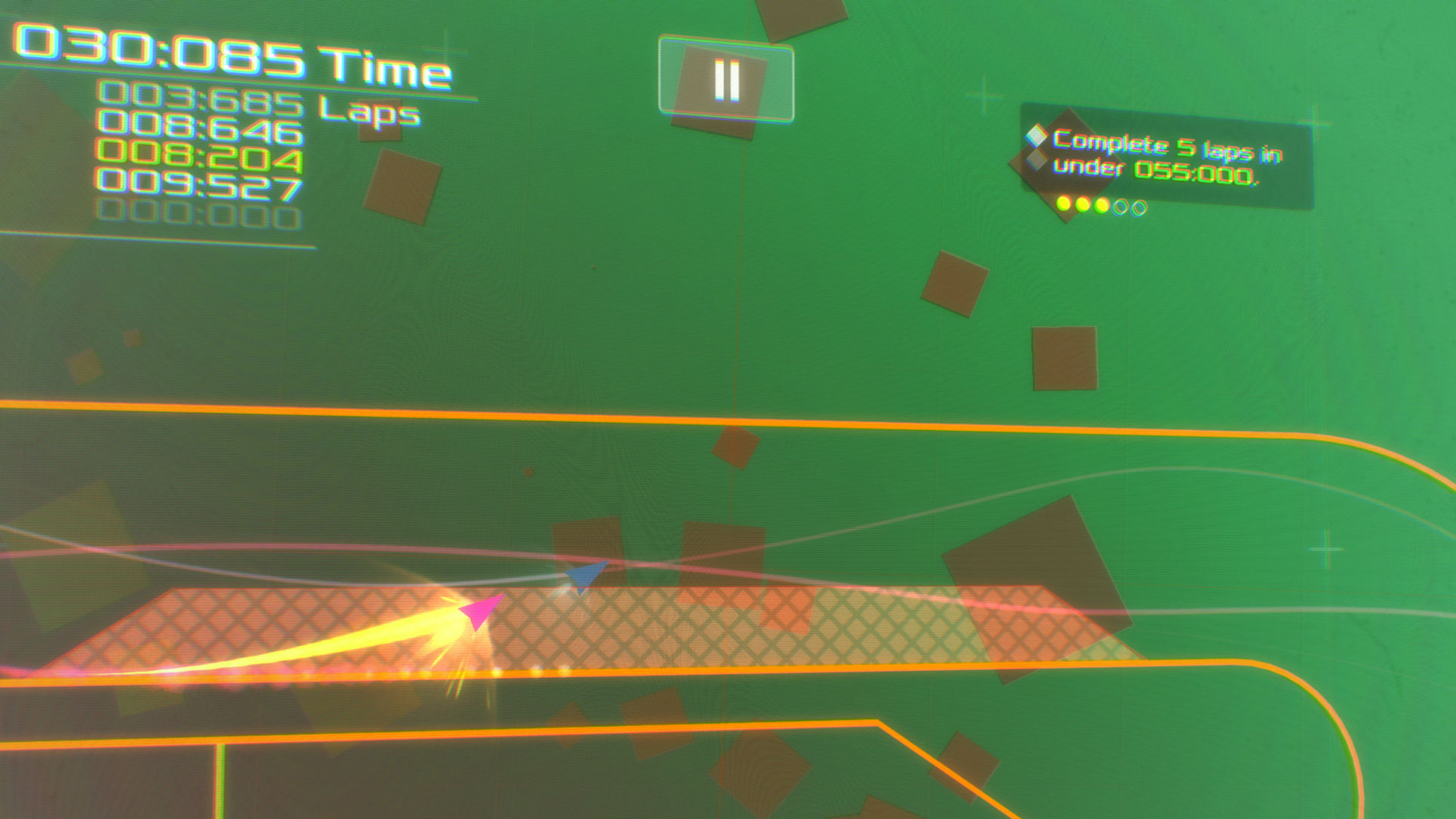
Data Wing
Data Wing is a speedy but elegant neon-clad top-down racer. It’s also an intriguing narrative based around an irrational artificial intelligence’s attempts to escape its lot.
The racing bit is superb as you pilot your tiny craft, scraping track edges for boosts of speed during time trials. New challenges are slowly unlocked, such as races, and levels that flip everything on it side, pitting you against gravity and forcing you to use boost pads to reach a high-up exit.
A simple two-thumb control system ensures the game works brilliantly on every size of iPad, and as game and story alike unfold there are plenty of surprises in store. But perhaps the biggest is that a production this polished is entirely free. Get it!

Asphalt 9: Legends
Asphalt 9: Legends is a brash arcade racer with such a scant regard for physics and reality it almost makes its bonkers predecessor look like a simulation.
You blaze along hyper-real road circuits, having pimped-up sports cars do things no manufacturer’s warranty had ever considered. 360-degree turns off of massive ramps to pinwheel through the air! Nitro-boosting through skyscraper windows! Playing chicken with massive trains! We’re not in conventional racing territory here…
Like all Asphalt games, this one scrapes a key along its pristine bodywork in the form of IAP and grind; also, some players may be irked by a default control scheme that has you swipe and tap to time actions rather than actually steer. But despite its shortcomings, Asphalt 9: Legends remains a glorious and compelling oddball arcade racer.
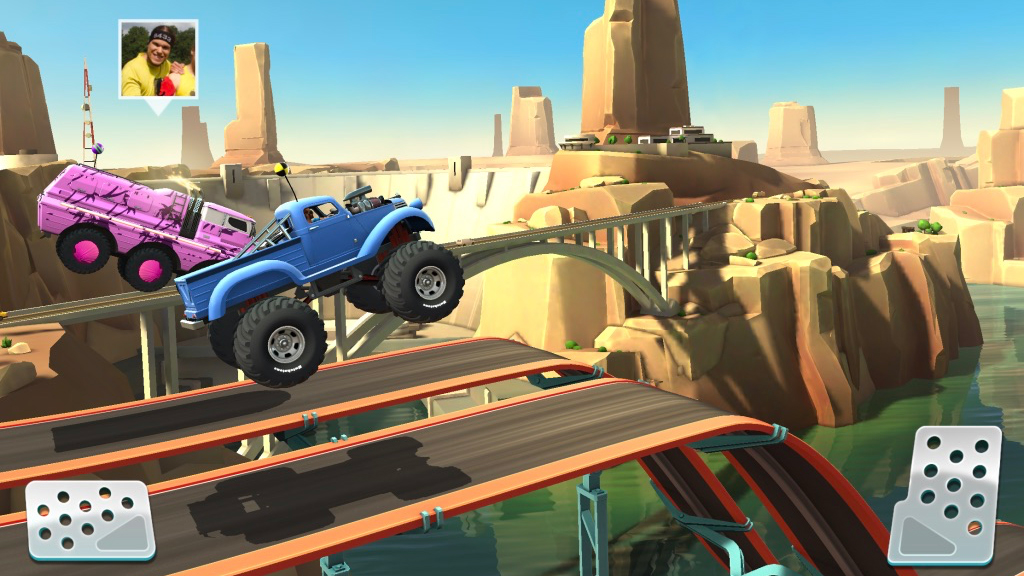
MMX Hill Dash 2
MMX Hill Dash 2 is a one-on-one monster truck racer, with tracks akin to roller coasters, full of unlikely peaks and crazy dips. Helpfully, then, the physics is so bouncy vehicles often feel like they’ll bound off of the screen, never to be seen again.
At first, this makes for an off-putting experience. It can feel like you’re fighting the physics with the two-button control system that deals both with braking and also rotation when a vehicle’s airborne. But grab vehicle upgrades and properly plan how to tackle a track, and you start making progress.
The game then becomes strangely absorbing – almost puzzle-like as you gradually figure out the choreography and upgrades required to crack a track. It is, however, best for players with a slightly masochistic streak, since you’re often hitting the same track time and again, until you get the kit and brainwave to defeat it.
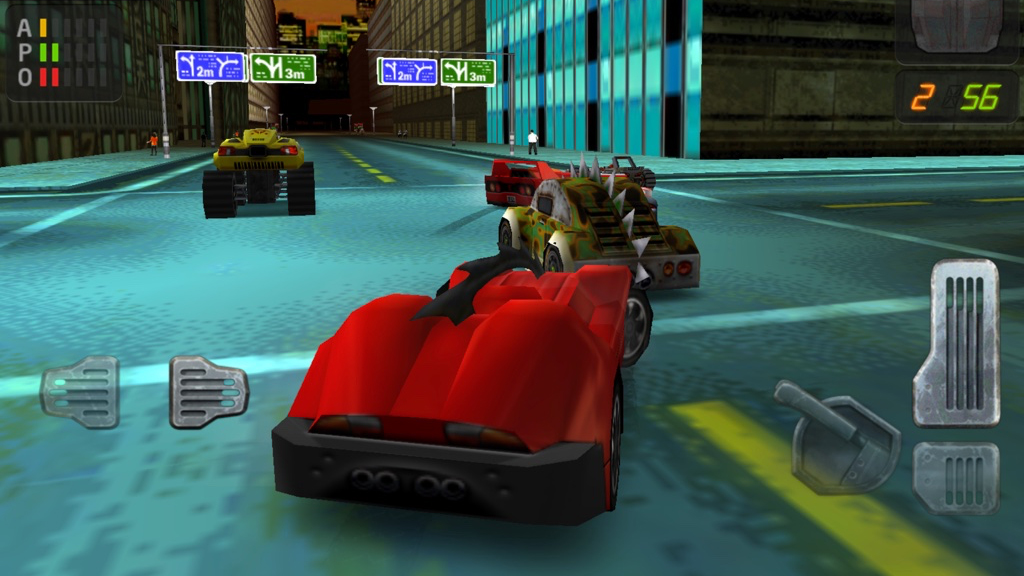
Carmageddon
Carmageddon is in theory a racing game, but is really more a demolition derby set in a grim dystopia where armored cars smash each other to bits and drivers gleefully mow down ambling pedestrians and cows.
It’s a game of questionable taste and a brains-free approach. You may not be surprised to hear it ended up banned in several countries when originally released on PC back in 1997. These days, though, its low-res over-the-top feel seems more cartoonish than gory – and the freeform driving is a lot of fun.
The maps are huge, the physics is bouncy, and your opponents are an odd mix of braindead and psychotic. There’s no nuance, but loads of laughs to be had – assuming you’re not the type to get offended when a game congratulates you for power-sliding a startled cow into a wall.
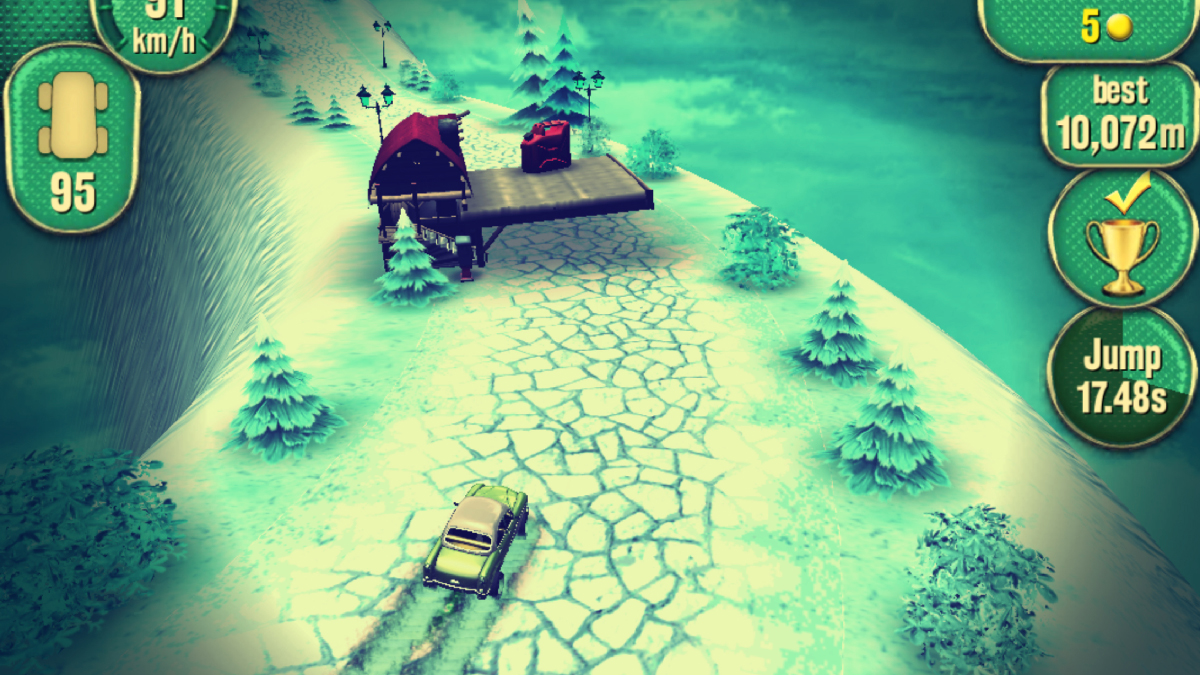
Vertigo Racing
Vertigo Racing is a sort-of rally game. We say sort-of, because although you’re pelting along a twisty-turny track, it happens to be at the top of a wall so high its base is lost in the clouds below.
Also, you’re barreling along in old-school muscle cars, to a classic guitar rock soundtrack, and you can’t steer.
Instead, the game does the steering for you, leaving you merely able to prod the accelerator or slam on the brakes, to stop your car plunging into the abyss. This transforms the game into a decidedly oddball take on slot racing, reimagined as a roller-coaster. Or possibly the other way around.
Either way, it’s fun, even if handling and camera issues make progress in later tracks tough. Still, the upgrade path is smart (with a generous dishing out of virtual coins to upgrade your cars and buy new tracks), making for hours of grin-inducing arcade action.
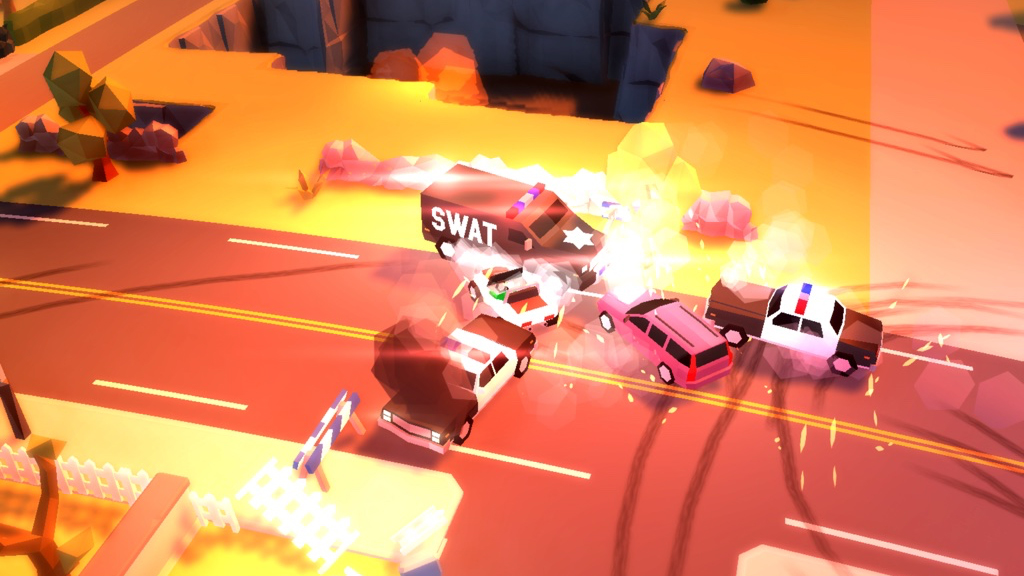
Reckless Getaway 2
If you’ve ever played the last level of PC classic Driver, with its psychotic police vehicles, you’ll have an inkling what you’re in for in Reckless Getaway 2. You pick a car and barrel about a little wraparound city, driving around like a maniac, until your inevitable arrest.
Well, we say ‘arrest’, but these police are crazed. SWAT vans will hurl themselves at your vehicle, oblivious to the carnage around them. Eventually, airstrikes will be called in, at which point you might question if the law’s applying a bit too much zeal towards grand theft auto these days.
Over time, the game’s repetitive nature palls a bit, and the physics is a bit floaty; but otherwise it’s a great fun freebie for virtual joyriders armed with an iPad.
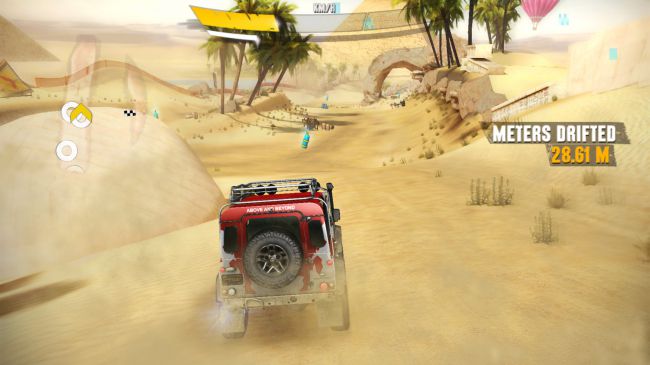
Asphalt Xtreme
Instead of blazing through larger-than-life takes on real-world cities, Asphalt Xtreme takes you off-road, zooming through dunes, drifting across muddy flats, and generally treating the great outdoors in a manner that will win you no favors with the local authorities.
As per other entries in the series, this is ballsy arcade racing, with bouncy physics, simple controls, an obsession with boosting, and tracks designed to make you regularly smash your car to bits.
It’s also, sadly, absolutely riddled with freemium cruft: timers; currencies; nags – the lot. But if you can look past that and dip in and out occasionally to allow the game to ‘recharge’, there’s a lot to like in this racer that’s decided roads and rules are so last season.
Our favorite free iPad scrolling blasters, FPS games, precision shooters, twin-stick blasters, and vertically scrolling shoot ’em ups.
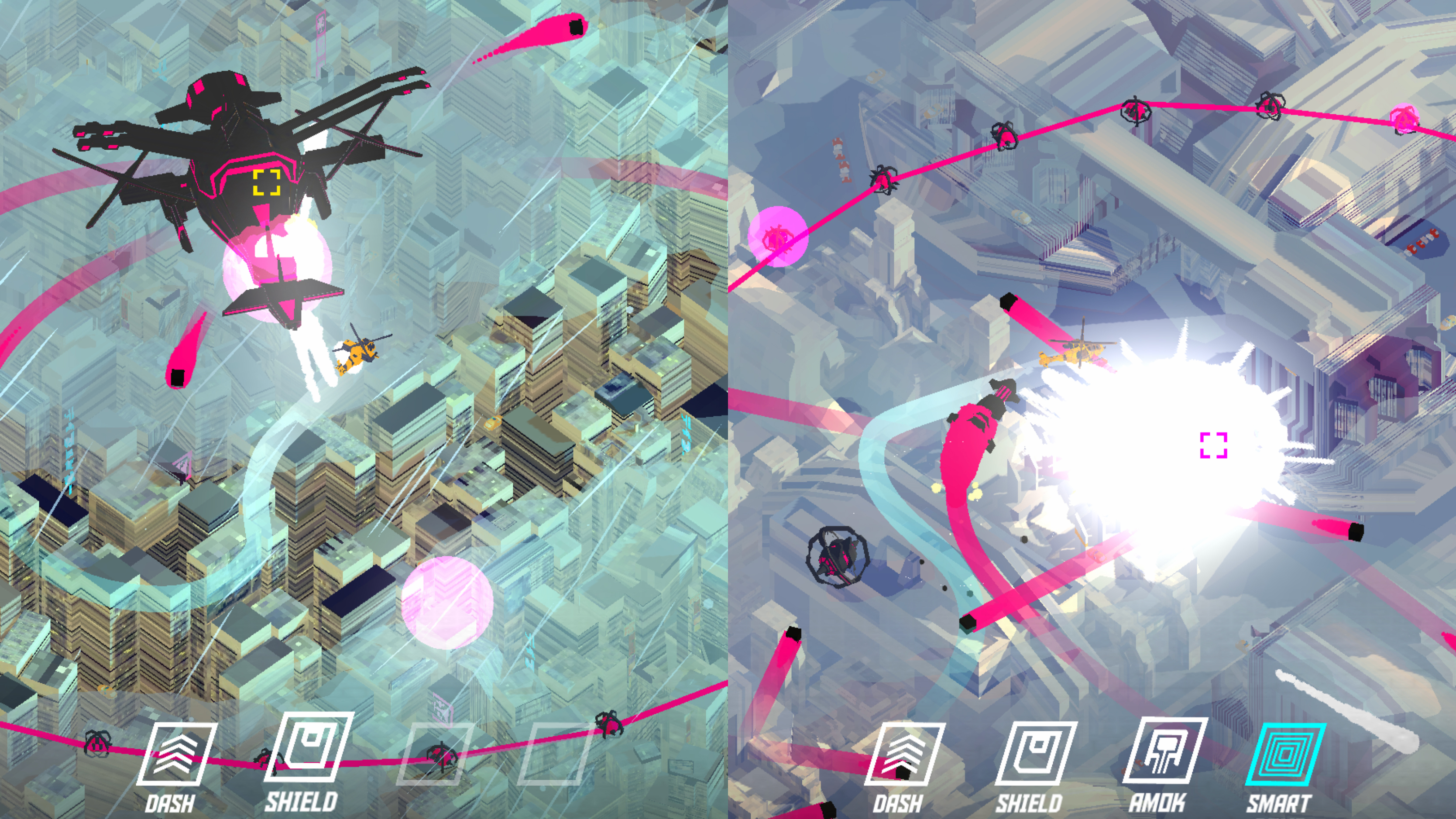
HELI 100
HELI 100 is an arena shooter that is thin on story but big on blasting. For some reason, you’re high above a city, attempting to obliterate flying alien armies, but the battlefield is restricted to a ring of airspace within an impassable barrier.
At first, the game’s quite sedate. You weave left and right, your guns automatically aiming and blasting the opposition to bits. But around the tenth of 100 levels, the pace ramps up. Suddenly, the arena walls start rapidly closing in, and enemies spew more bullets than is entirely necessary.
Fortunately, you can fight back with powerful weapon pick-ups – even if on larger iPads they are slightly awkward to reach unless you’ve got banana thumbs. Still, what’s a little discomfort when you’re saving the world?
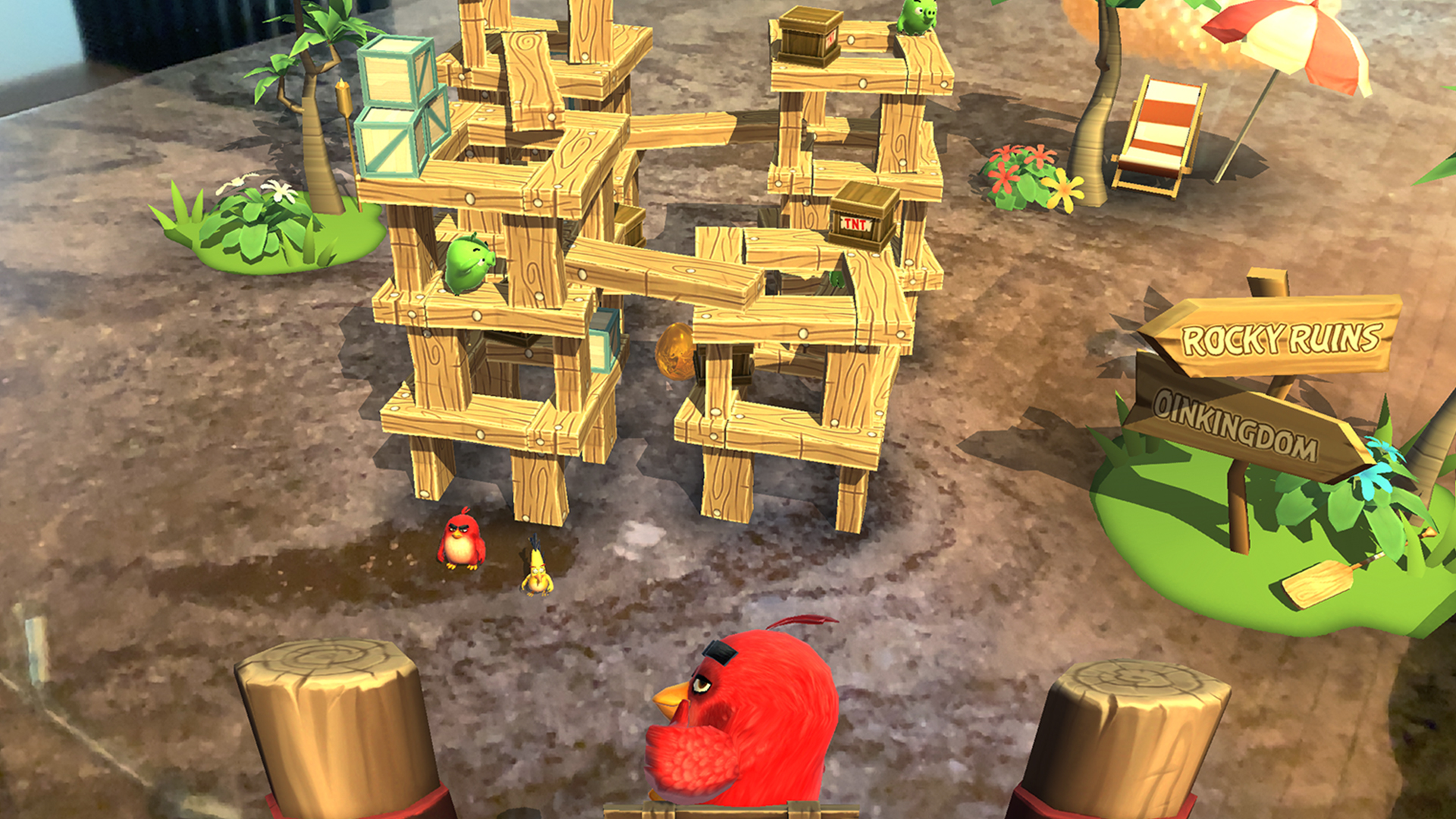
Angry Birds AR: Isle of Pigs
Angry Birds AR: Isle of Pigs moves the long-running Angry Birds saga into the third dimension. Rather than a side-on view as you catapult deranged birds at ramshackle buildings barely shielding kleptomaniac swine, you get a first-person viewpoint.
Given the iPad’s AR smarts, setting up the game on a table or floor is almost instantaneous. From then on, you get a new perspective (many, in fact) on your bird-flinging antics; you can explore levels from every angle, looking to set up shots that will hit sneakily hidden boxes of TNT for maximum destruction.
The few dozen levels may be completed in short order, but that doesn’t really matter. There’s plenty of fun to be had in this freebie that for the first time in years manages to add freshness to the Angry Birds formula.
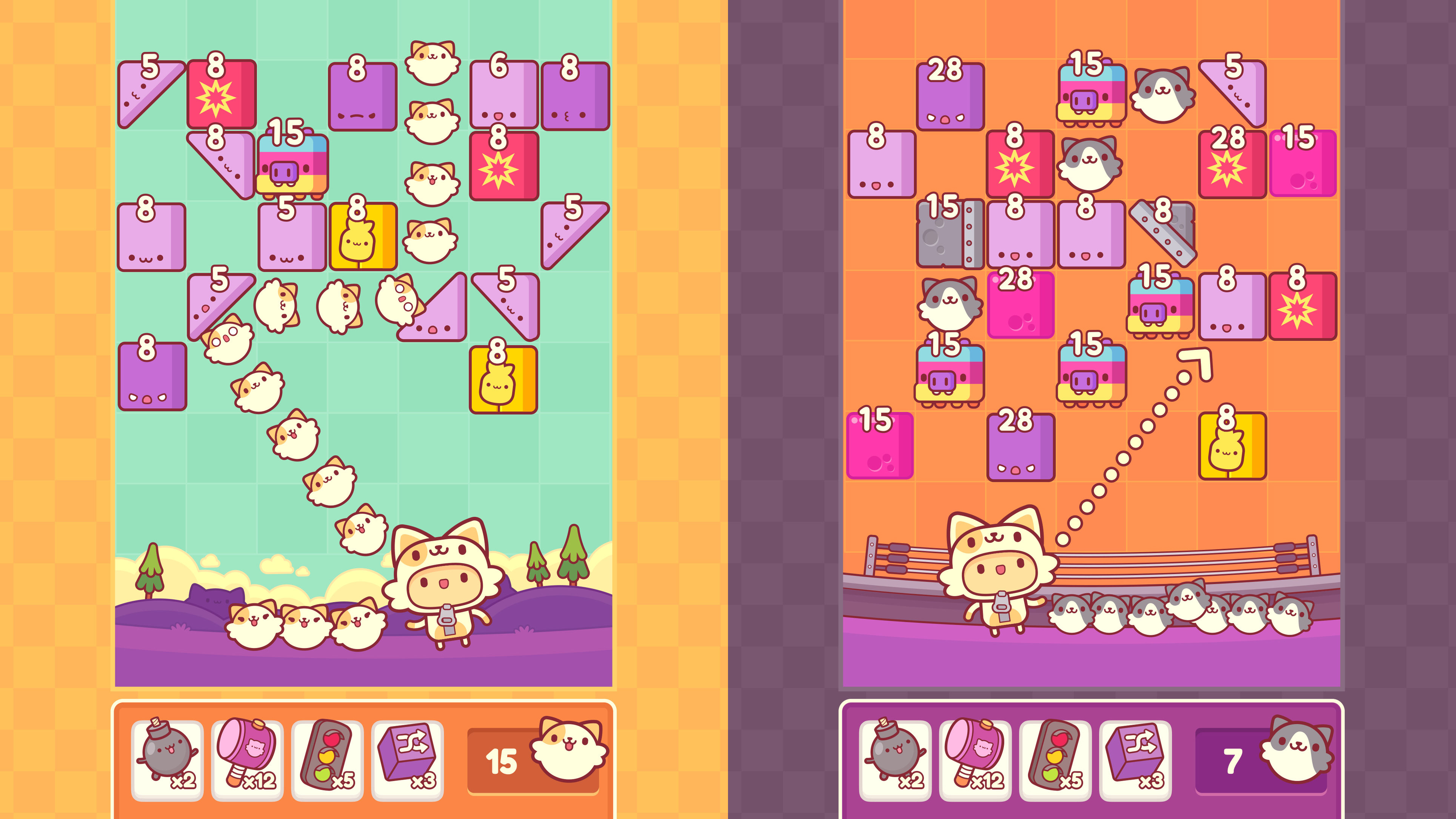
Piffle
Piffle is another entry in an expanding sub-genre of shooters. You blast a string of ricocheting bullets at bricks, until the numbers on said bricks run down, causing them to explode.
As you gather more ammunition and powers, things become entertainingly chaotic, your screen becoming a sea of ammo and explosions. Here, said ammo appears to be limbless, bouncy cats, which face off against encroaching walls of smiling blocks. Because levels are finite, you can approach each one in strategic fashion.
There is some grind, with later levels being very tough to complete without power-ups. Still, there’s a premium sheen here reminiscent of Holedown – only instead of cool minimalism, you get vibrant colorful visuals, no price-tag, and a pile of furry critters to stave off a ‘cat-astrophic’ game over.
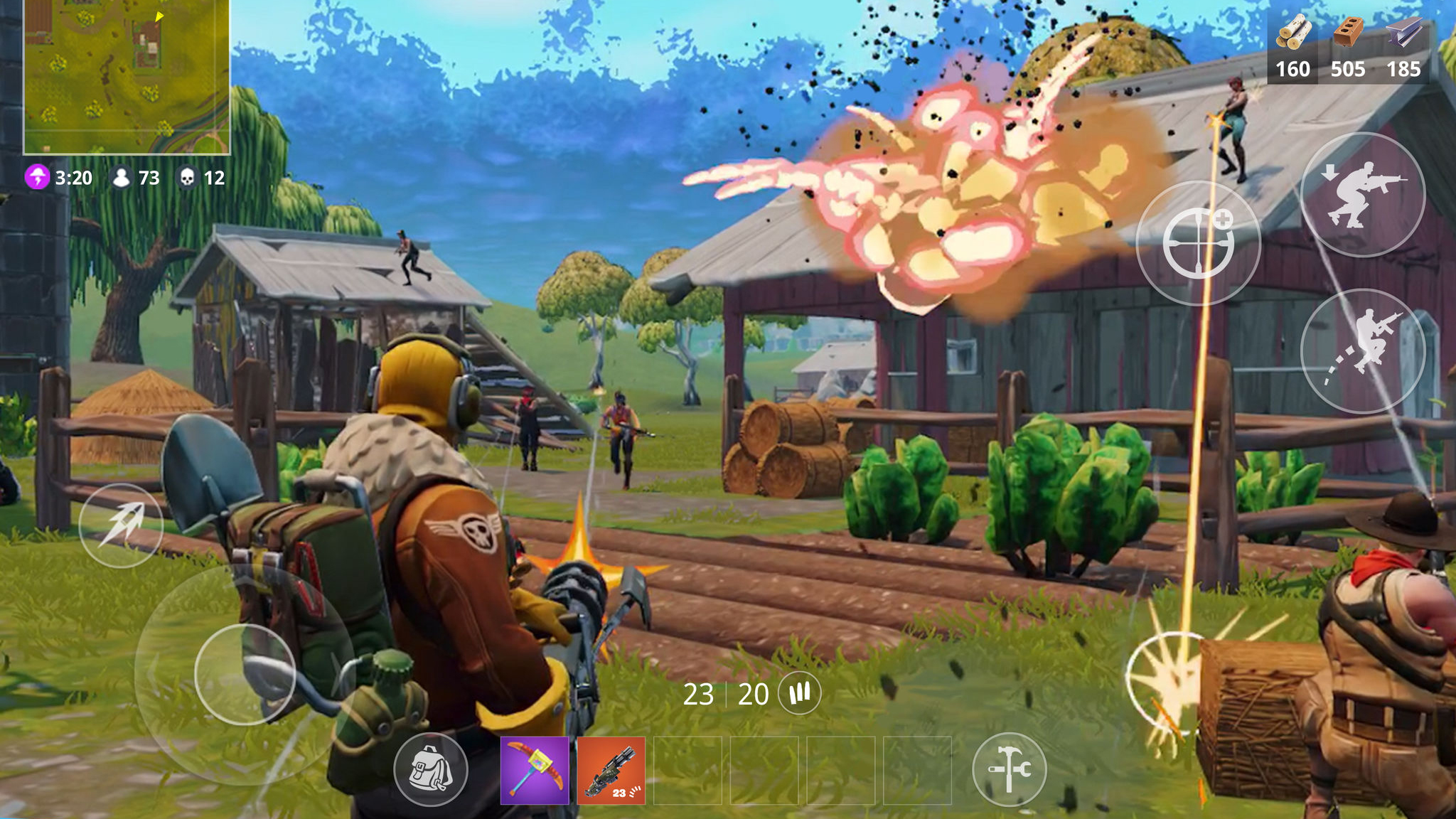
Fortnite
Fortnite parachutes 100 players on to an island, with the simple task of being the last person standing. Okay, so it’s not that simple, given that everyone wants to kill you.
The road to survival initially involves realizing that your pickaxe isn’t going to cut it, and therefore locating weapons with which to dish out wanton violence. Over time, the area in which players can survive shrinks, at which point you might consider building a defensive fortress.
The mix of building, scavenging, exploration and action mixes perfectly to create unique scenarios within every game, and the game is kept fresh with regular content updates.
Fortnite’s origins on platforms with physical gamepads are somewhat betrayed by complex virtual controls, however this is a much more minor issue on iPad given that there’s more than enough space for your fingers not to cover the action.
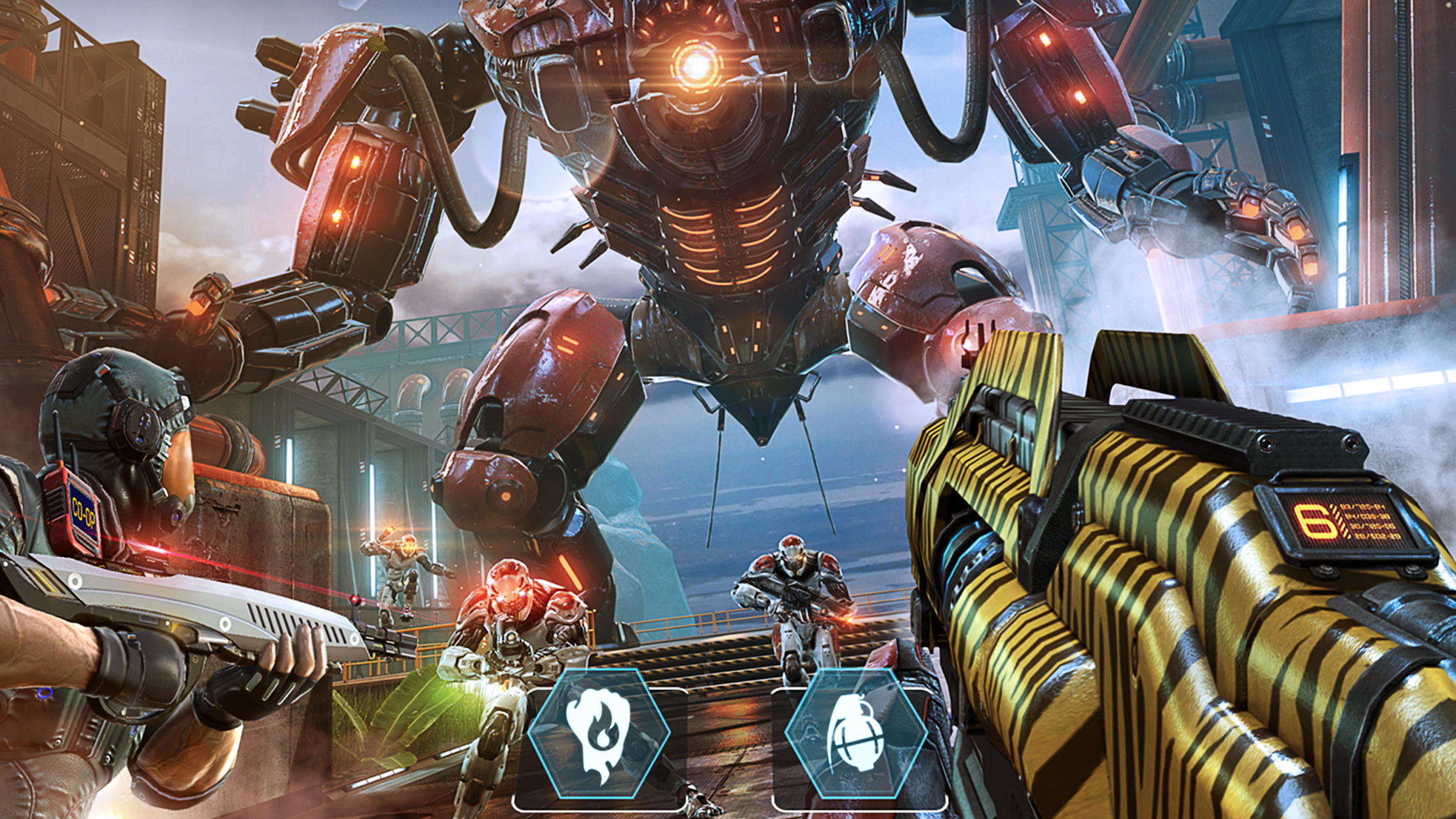
Shadowgun Legends
Shadowgun Legends gives you a big, dumb, brash first-person shooter for your iPad. It looks superb, whether you’re mooching about the neon-bathed central hub world, or merrily blasting hordes of evil aliens.
From a gameplay perspective, it’s no Call of Duty or Doom, but that’s fine for touchscreen play. After all, when you don’t have a gamepad in your hands, you’ll be glad you only need two thumbs to control movement and gaze, your guns discharging automatically when a foe’s in your sights.
But just because Shadowgun Legends is streamlined for mobile, don’t mistake it for being simple. There’s tons to do, a slew of power-ups to get you kitted out for tougher later missions, and an entertaining emphasis on ‘fame’ over character and story that if nothing else seems like savvy commentary on a great deal of modern media.
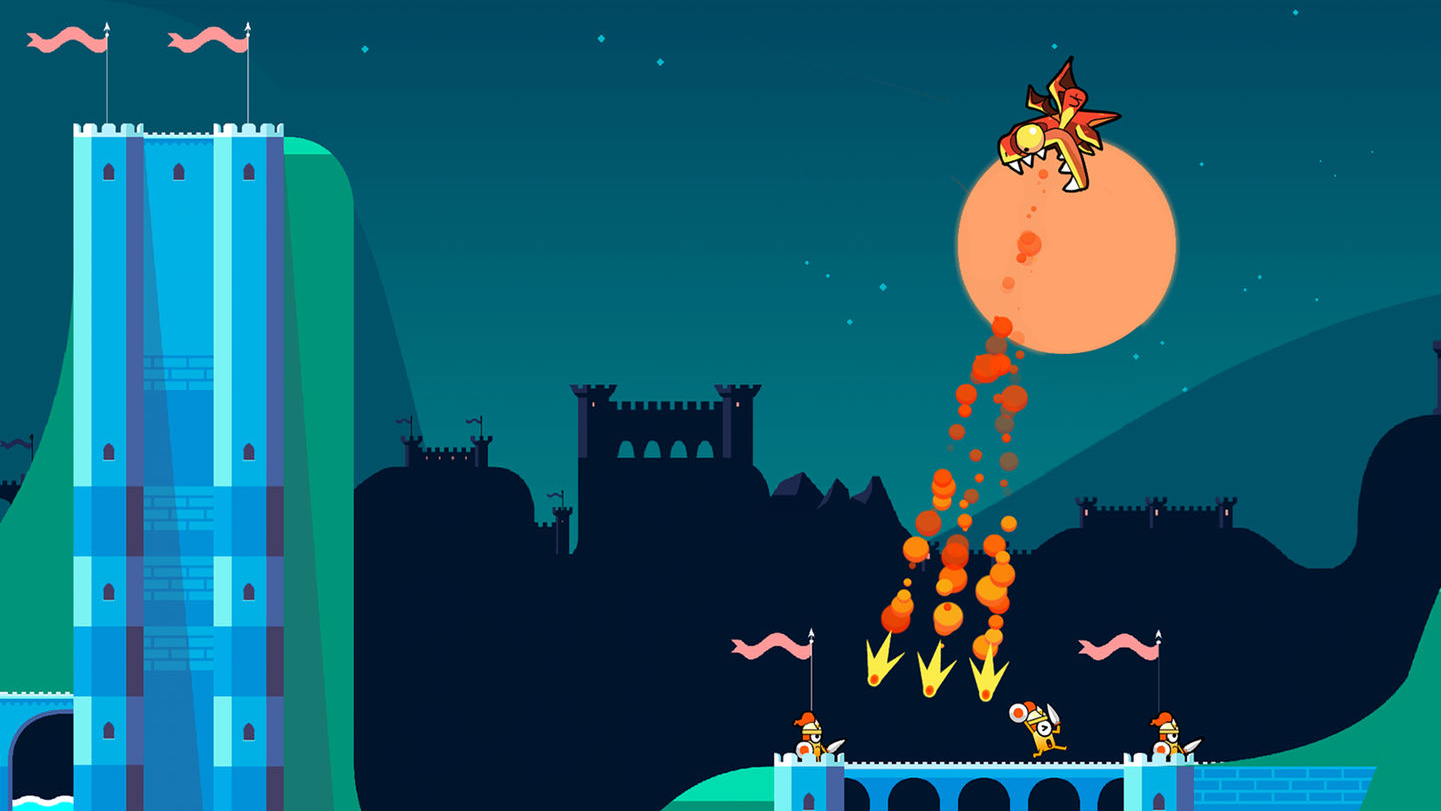
Drag’n’Boom
Drag’n’Boom is a breezy, fast-paced arcade game that marries Angry Birds, Tiny Birds, Sonic the Hedgehog, twin-stick shooters, dragons and The Matrix. No, really.
Each level finds your baby dragon zooming about hilly landscapes packed with castles and tunnels, roasting guards and grabbing coins. Movement and unleashing fiery breath alike happen by way of ‘drag and fling’ directional arrows, and everything slows down while you aim, Matrix-style.
This all makes for an interesting combination, enabling deliriously fast zooming about and violence across the tiny worlds, but precision when you need it. Over its 40 levels, Drag’n’Boom could perhaps do with more variety – there are scant few enemy types to defeat. But it’s an exhilarating thrill-ride while it lasts.
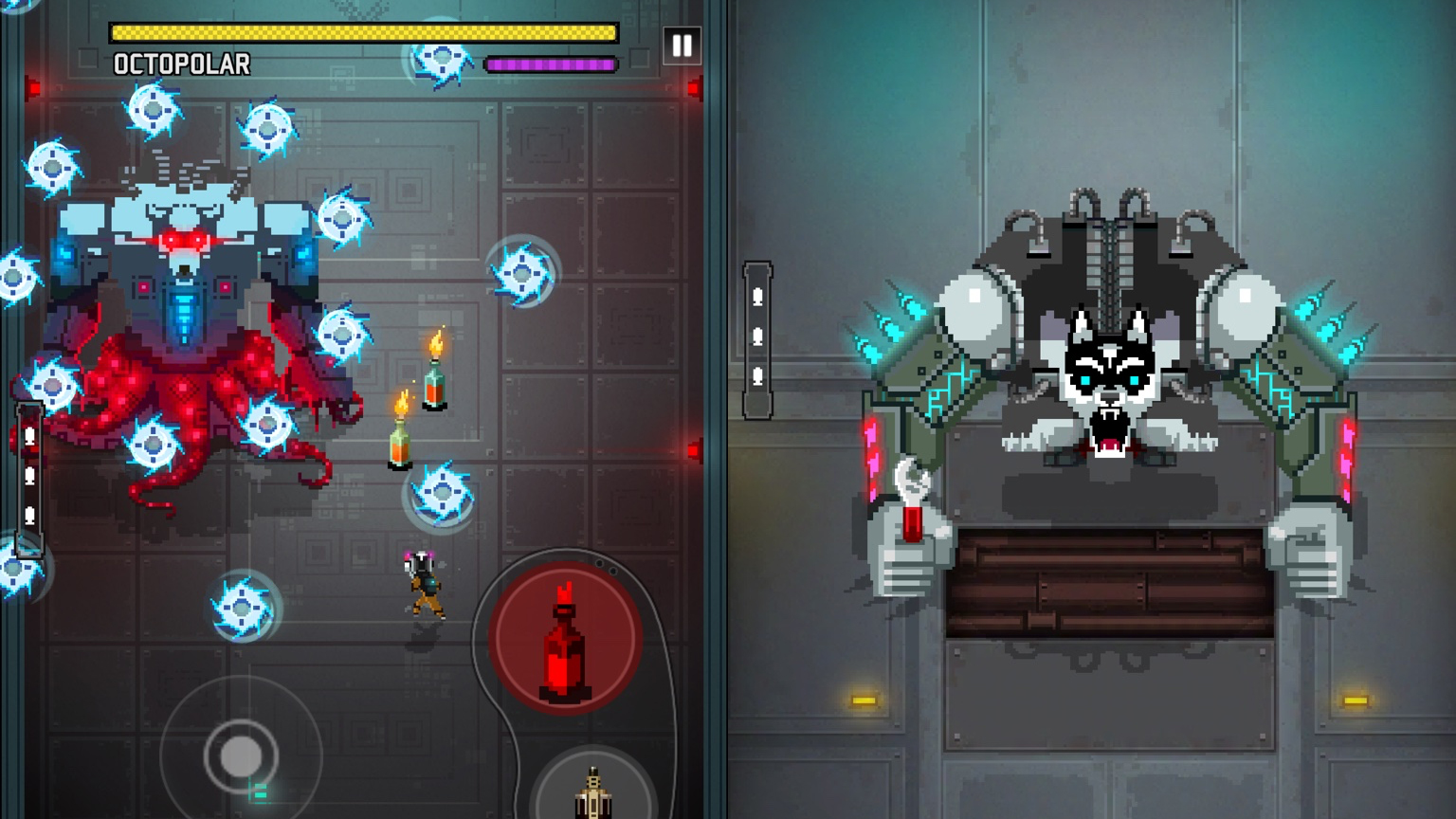
Evil Factory
You know a game’s not taking itself too seriously when it begins with the hero trudging through a blizzard, only to be faced by a giant heavily armed walrus guarding the fortress of a megalomaniacal genius.
But Evil Factory is just warming up, and subsequently revels in flinging all manner of mutated madness your way in its hard-nosed top-down arcade battles.
For each, you dart about using a virtual joystick, while two large on-screen buttons activate weapons. Unfortunately, your bosses are colossal idiots, and have armed you with the likes of dynamite and Molotov cocktails. Bouts often therefore involve dodging bullets to fling wares at a giant foe, before running away like a coward.
It’s silly, relentless arcade fun – or at least it would be relentless if the ‘fuel’ based freemium model didn’t butt up against one-hit-death and tough later levels. Still, if the stop-start nature of playing becomes irksome, fuel limitations can be removed with a $1.99/£1.99/AU$2.99 IAP.

Darkside Lite
With Darkside Lite, you rather generously get the entire arcade mode from superb blaster Darkside. What this means is a slew of fast-paced and eye-dazzling shooty action, where you blast everything around you to pieces, while trying very hard to stay in one piece yourself.
The twin-stick shenanigans echo the likes of Geometry Wars (or, if you’re really old, Robotron) in terms of controls, but the setup is more Asteroids, obliterating space rocks – and also the spaceships that periodically zoom in to do you damage.
The entire thing’s wrapped around planetoids floating in the void, making for a dizzying, thrilling ride as you attempt to locate the last bit of flying rock before some alien attacker swoops in and rips away the last of your shields.
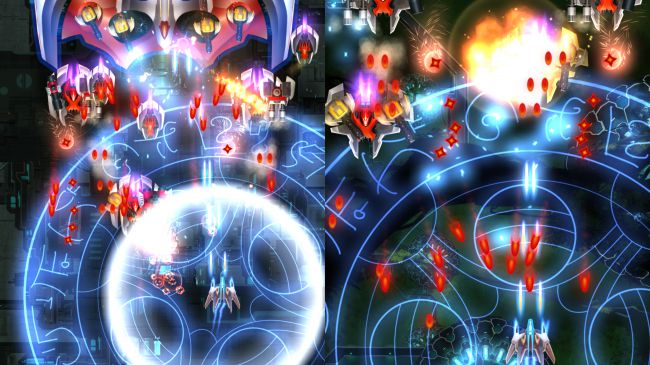
Phoenix II
In a marked departure from the impressive Phoenix HD and its procedurally generated bullet hell,Phoenix II shoves you through set-piece vertically scrolling shoot 'em up grinders. Every 24 hours, a new challenge appears, tasking you with surviving a number of waves comprising massive metal space invaders belching hundreds of deadly bullets your way.
A single hit to your craft's core (a small spot at its center) brings destruction, forcing you to memorize attack and bullet patterns and make use of shields and deflectors if you've any hope of survival. You do sometimes slam into a brick wall, convinced a later wave is impossible to beat.
To lessen the frustration, there's always the knowledge you'll get another crack at smashing new invaders the following day. Regardless, this is a compelling, dazzling and engaging shooter for iPad.
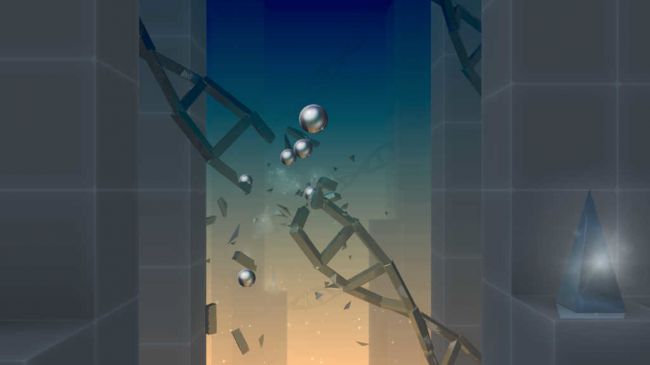
Smash Hit
We imagine the creators of Smash Hit really hate glass. Look at it, sitting there with its stupid, smug transparency, letting people see what's on the other side of it. Bah! Smash it all! Preferably with ball-bearings while flying along corridors! And that's Smash Hit — fly along, flinging ball-bearings, don't hit any glass face-on, and survive for as long as possible.
There are 50 rooms in all, but cheapskates start from scratch each time; pay $1.99/£1.99/AU$2.99 for the premium unlock and you get checkpoints, stats, iCloud sync, and alternative game modes.
Our favorite free iPad soccer, golf, tennis, basketball and other sports games.
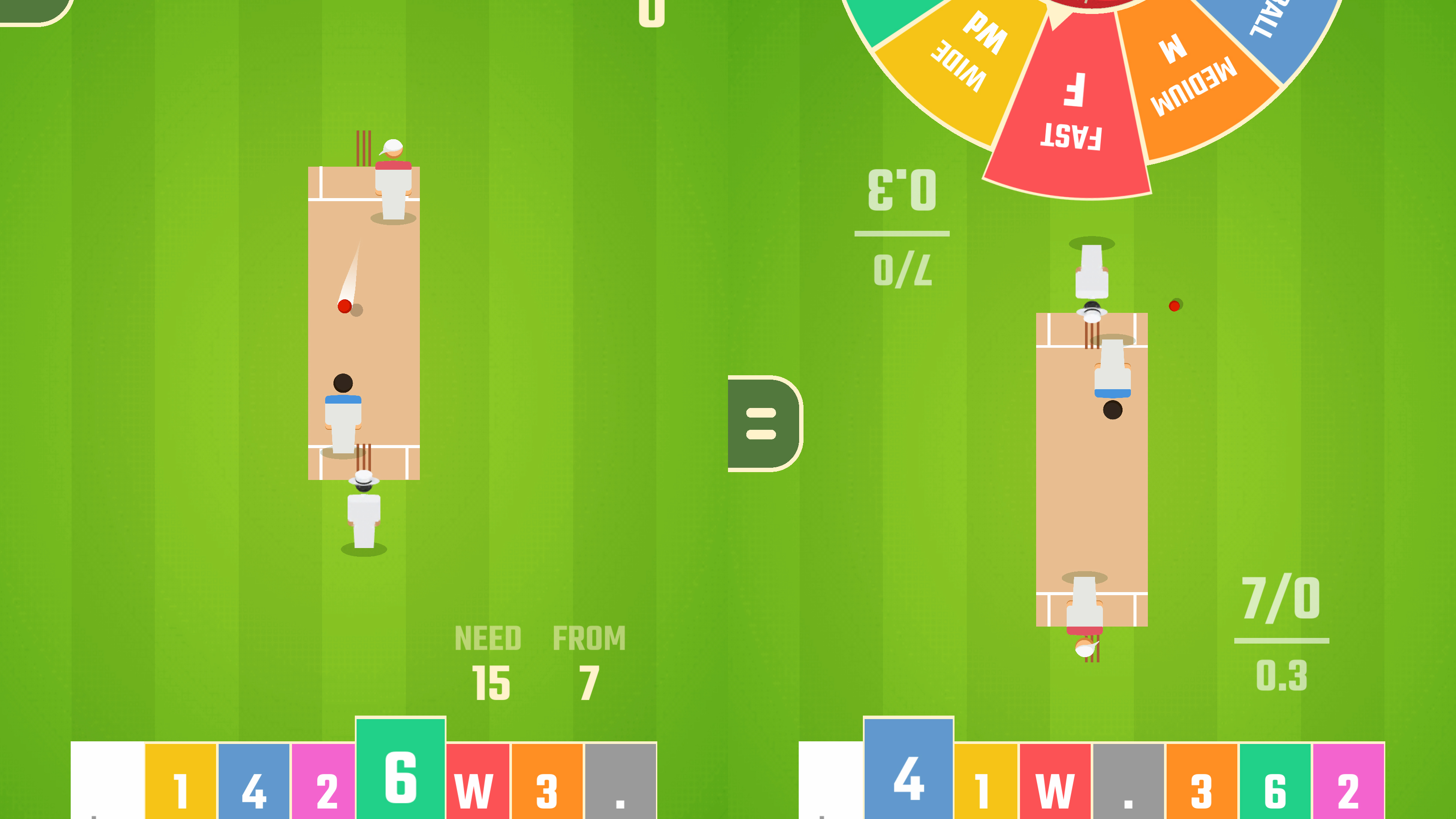
Super Over!
Super Over! starts with cricket, hits most of the rules for six, and transforms what’s left into a high-octane arcade-oriented take on a sport that, in the real world, has matches that can literally last for days.
Here, you chase a total from a limited number of balls. A cricket bat zooms back and forth, and tapping the screen stops it on a number or the dreaded W. In the former case, a chunk is lopped off of your total; in the latter, you’re out and instantly lose the match.
The breakneck pace extends brilliantly to a same-device two-player mode. There, you and a friend battle it out, one bowling while the other bats. You might argue this game’s just not cricket – but it’s all the better for it.
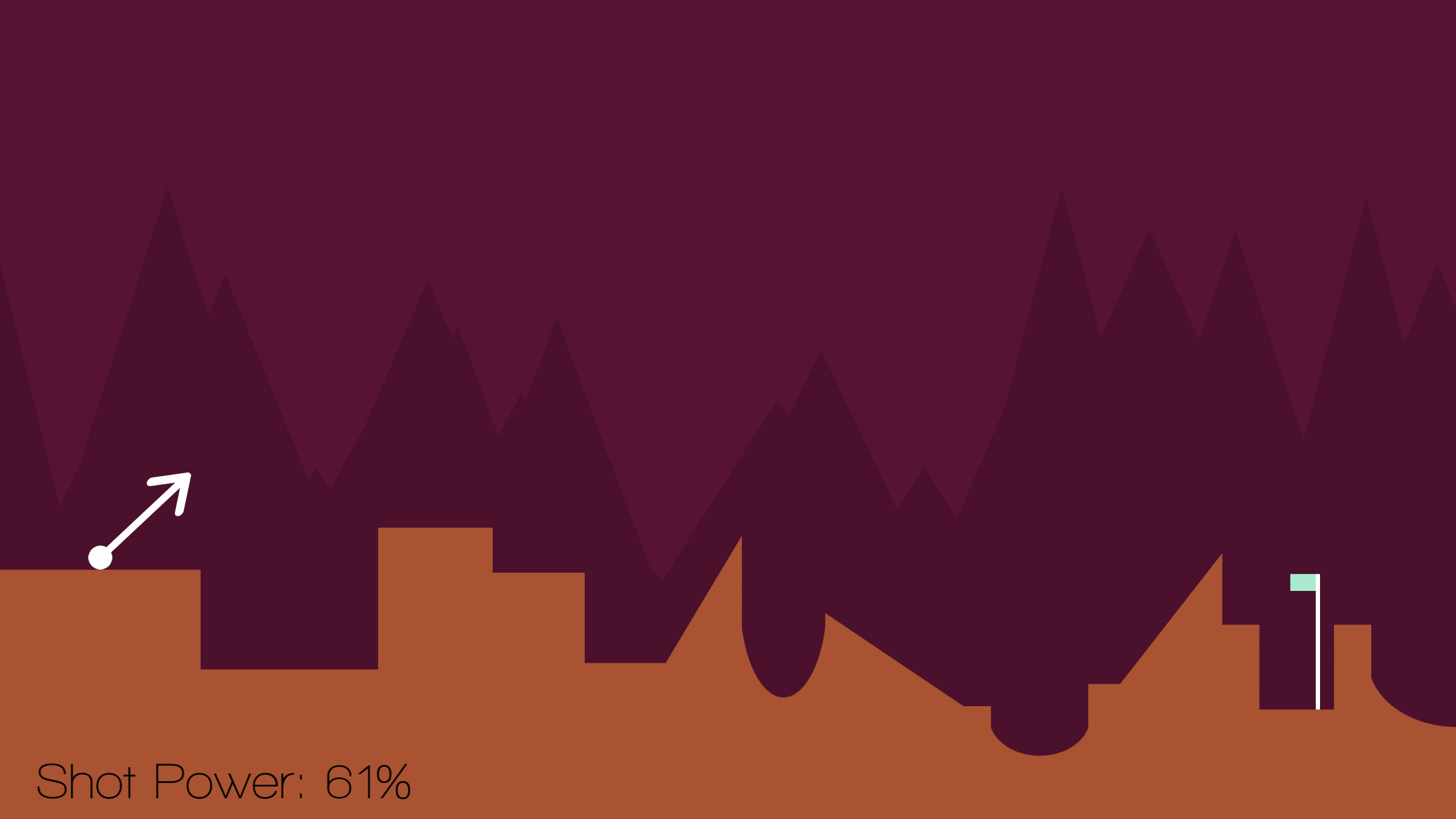
Image credit: Ellis Spice
Grow in the Hole
Grow in the Hole is a side-on minimalist golf game reminiscent of iOS classic Desert Golfing. As in that title, you drag to set each shot’s direction and power. The twist: for every shot that doesn’t make the hole, your ball grows.
Helpfully, the game keeps track of how many goes you have until your ball’s too big to putt – at which point, game over. Successfully putt, and the ball shrinks a little so you can continue your oddball golfing quest.
Grow in the Hole is visually crude, but gets things right in the gameplay stakes. The controls are precise, and there’s a decent selection of options, whether you fancy a quick nine-hole blast, or to pit your digits against a surprisingly intense (when you’re down to those last shots) endless mode.
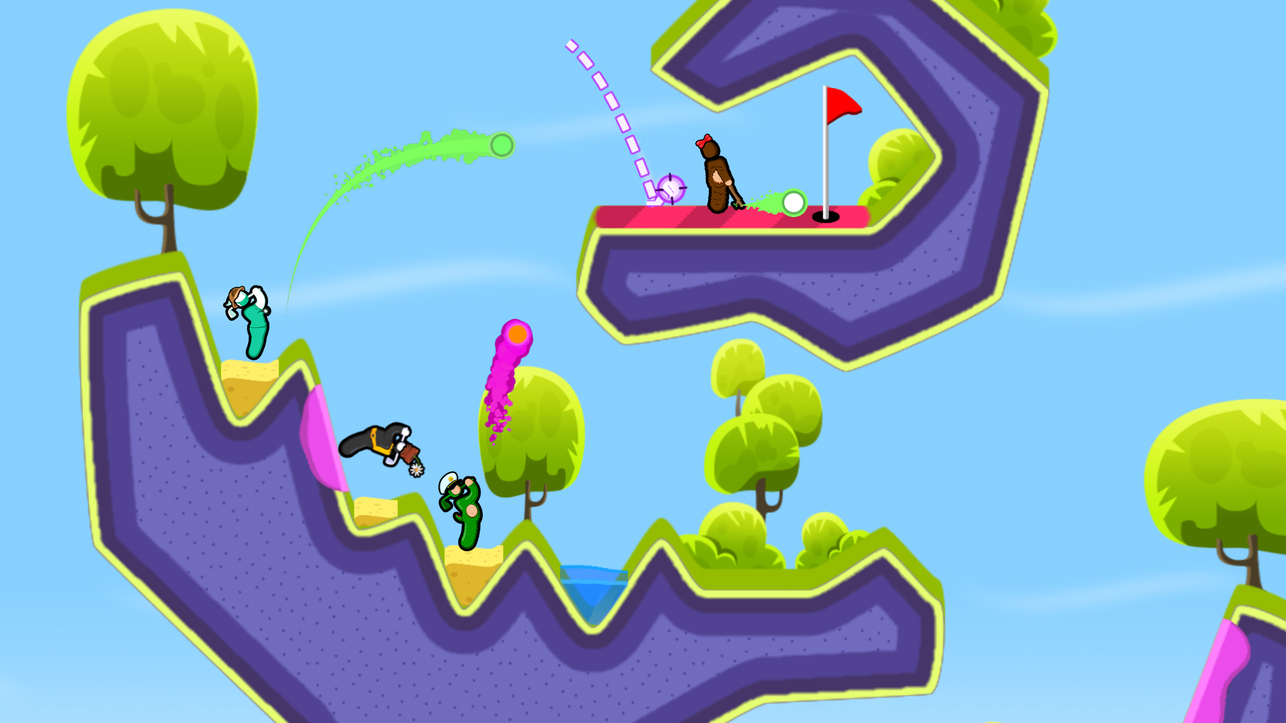
Golf Blitz
Golf Blitz is a side-on crazy golf game, with you racing to the hole against online competition. A spiritual sequel to the highly lauded Super Stickman Golf titles, the courses here are far from standard fare, often comprising levitating islands, or trap-laden caverns linked by narrow tunnels.
The game isn’t designed to reward speed alone. After each shot, there’s a countdown timer, and so you must think ahead and figure out the optimum path to the hole. Power-ups can help – and unsportingly blast rival balls away by way of a grenade or rocket-powered super ball.
There are quibbles: the slight randomness of shots that can rob you of wins; constant nudges towards IAP. But the game’s otherwise a blast, and repeat play gets you upgrades – without anyone taking a swing for your wallet.
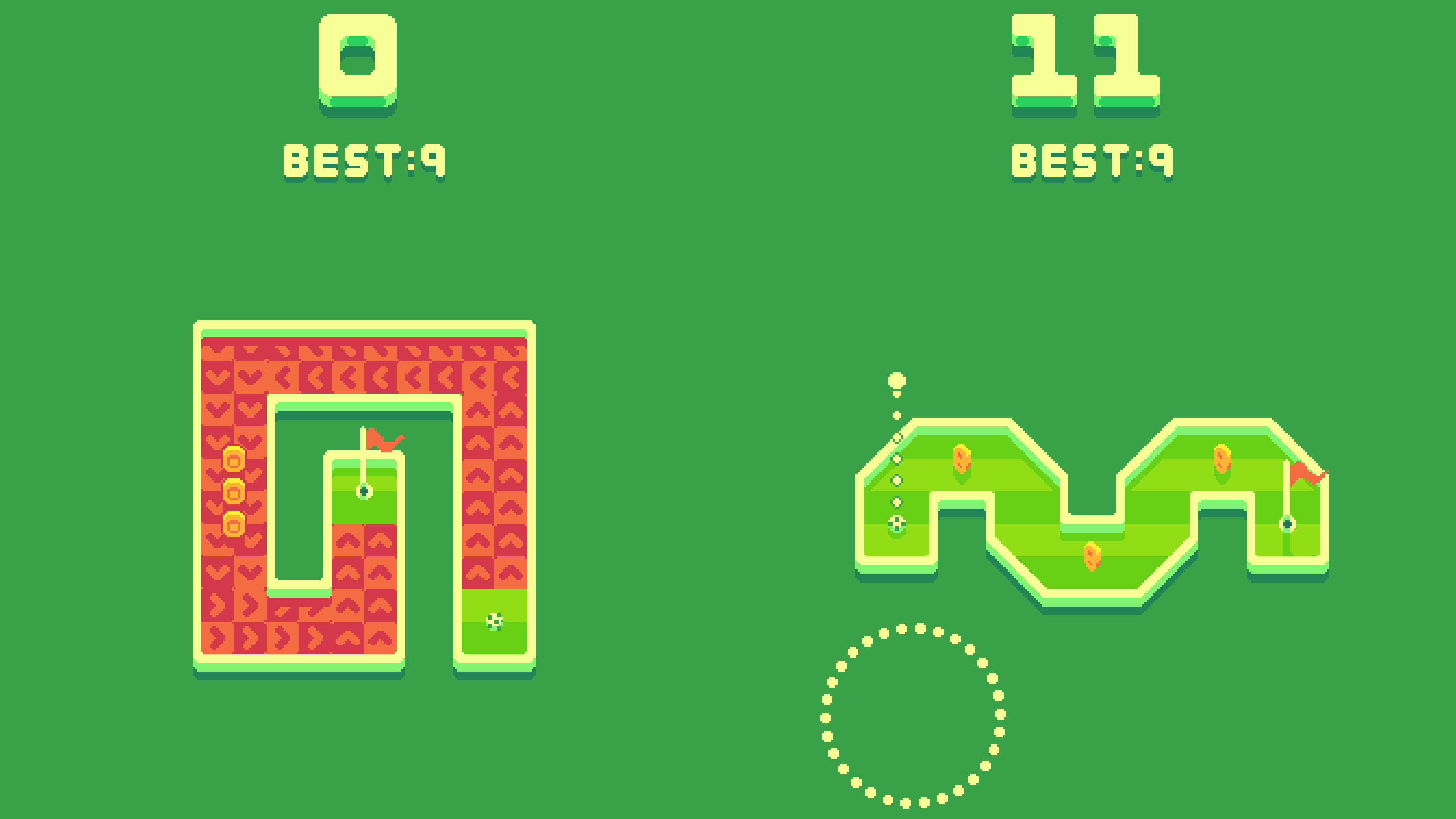
Nano Golf: Hole In One
Nano Golf: Hole In One is a follow-up to Nitrome’s own Nano Golf: Puzzle Putting, but whereas the earlier title was a fairly conventional mini-golf from above, Hole In One – as its name suggests – is all about sinking the ball first time, every time.
The controls are straightforward: drag backward to set direction and shot strength, and then let go. Courses are peppered with awkward routes and traps, plus coins you can grab to unlock balls with special abilities later.
Clearly, this isn’t exactly PGA Tour for iOS, but then it’s not supposed to be. It’s a speedy, compelling high-score chaser with a sporting bent – one with plenty of drive, and entirely bereft of bogeys.
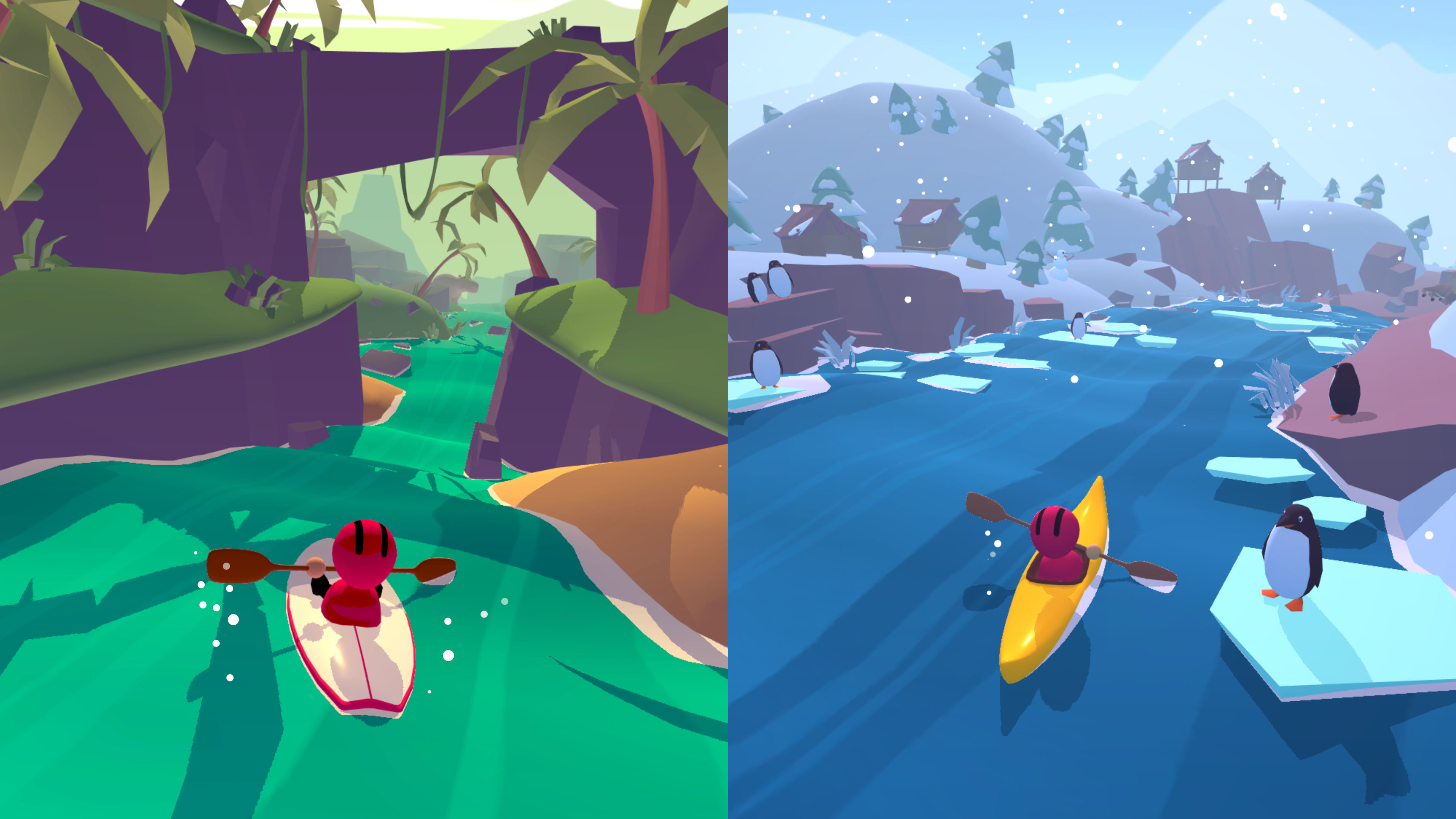
Row Row
Row Row is an arcade-oriented trials game, where you belt along snaking waterways in a tiny craft. Whether you’re in the jungle, wintry rivers, or surrounded by volcanoes, you end up bouncing about, getting catapulted over waterfalls, and trying to figure out the optimum way to get to the checkered flag.
Whereas most trials games can be punishing to the point of exhaustion, Row Row is rather more laid back in approach. It feels like the game wants you to see all of its levels, and to go back and boost your high-score position whenever you feel like doing so.
With lush visuals and responsive controls, this title is more likely to make a splash with you than lead to waterworks.

Infinite Pool
Infinite Pool has decided a standard pool table with six pockets isn’t that interesting, and instead gives you an endless table peppered with balls and pockets. You start off with five shots; sink a ball every turn or you’ll rapidly end up staring at a game over screen.
This in itself is a compelling concept, but Infinite Pool slathers on the cute, to make your eyes happier. The balls grin and gurn, and some of them wear hats. Pot those balls, and you can buy the hat in a store, whereupon you’re given special powers – just like in real life. Or at least, that’s what the hat guy told us.
Anyway, this one might leave reality far behind, but it’s an entertaining spin on smacking balls into holes.
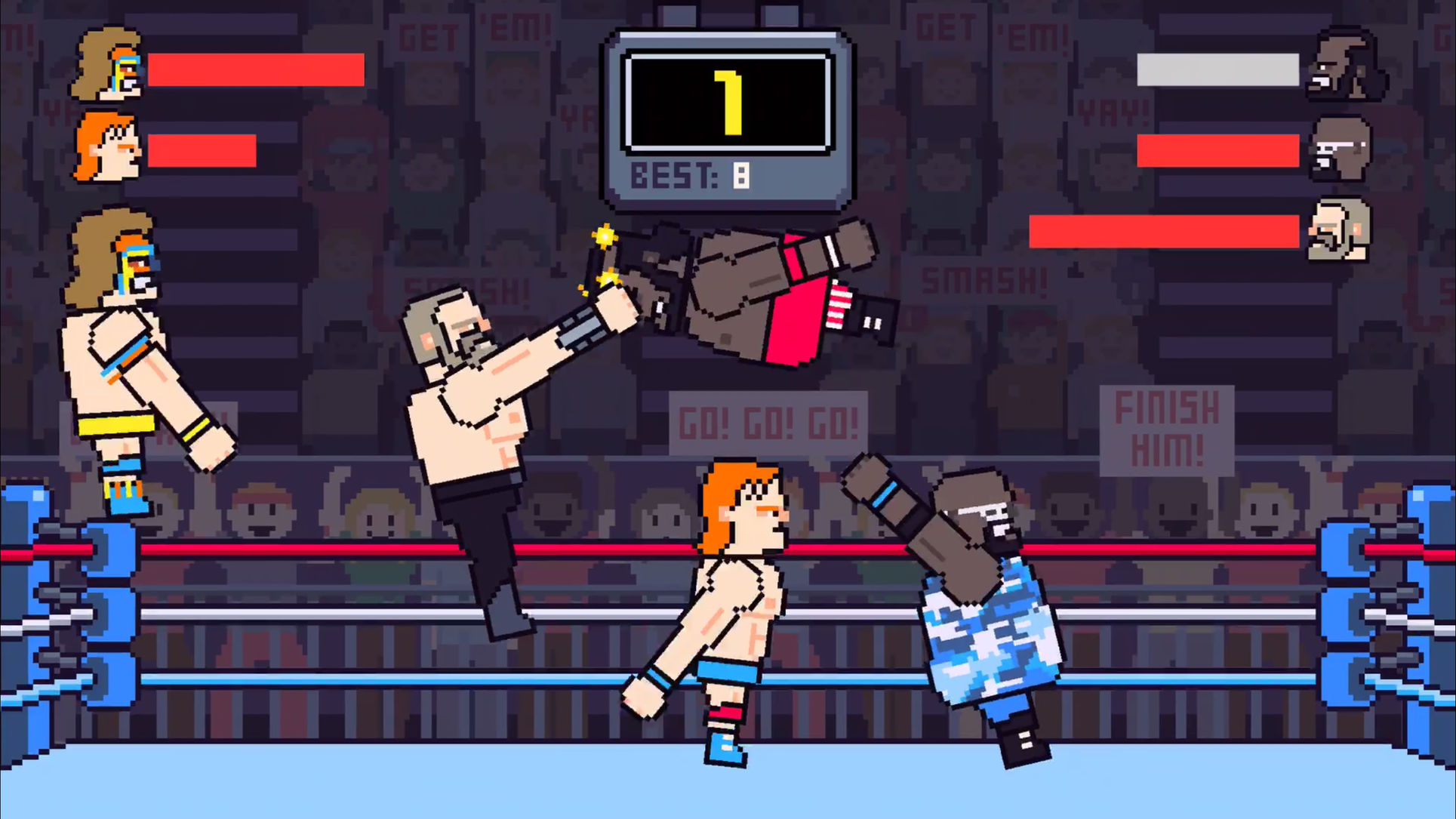
Rowdy Wrestling
Rowdy Wrestling is a sports game on fast forward – one that’s performed a pile-driver on nuance and lobbed it out of the ring. It features chunky retro cartoonish fighters, whose arms whirl as they speed about. The buttons you stab afford you a degree of control, but initially bouts are like attempting to control chaos – akin to trying to steer an avalanche.
Over time, you figure out a modicum of tactics – combinations of moves that more often leave you victorious and your opponents unceremoniously hurled from the screen. Get particularly good and you can buy new wrestlers with currency earned in-game, and then have a crack at the career mode.
As ridiculous as real-world wrestling is, a career in that sport isn’t a patch on the madness at the heart of this game.
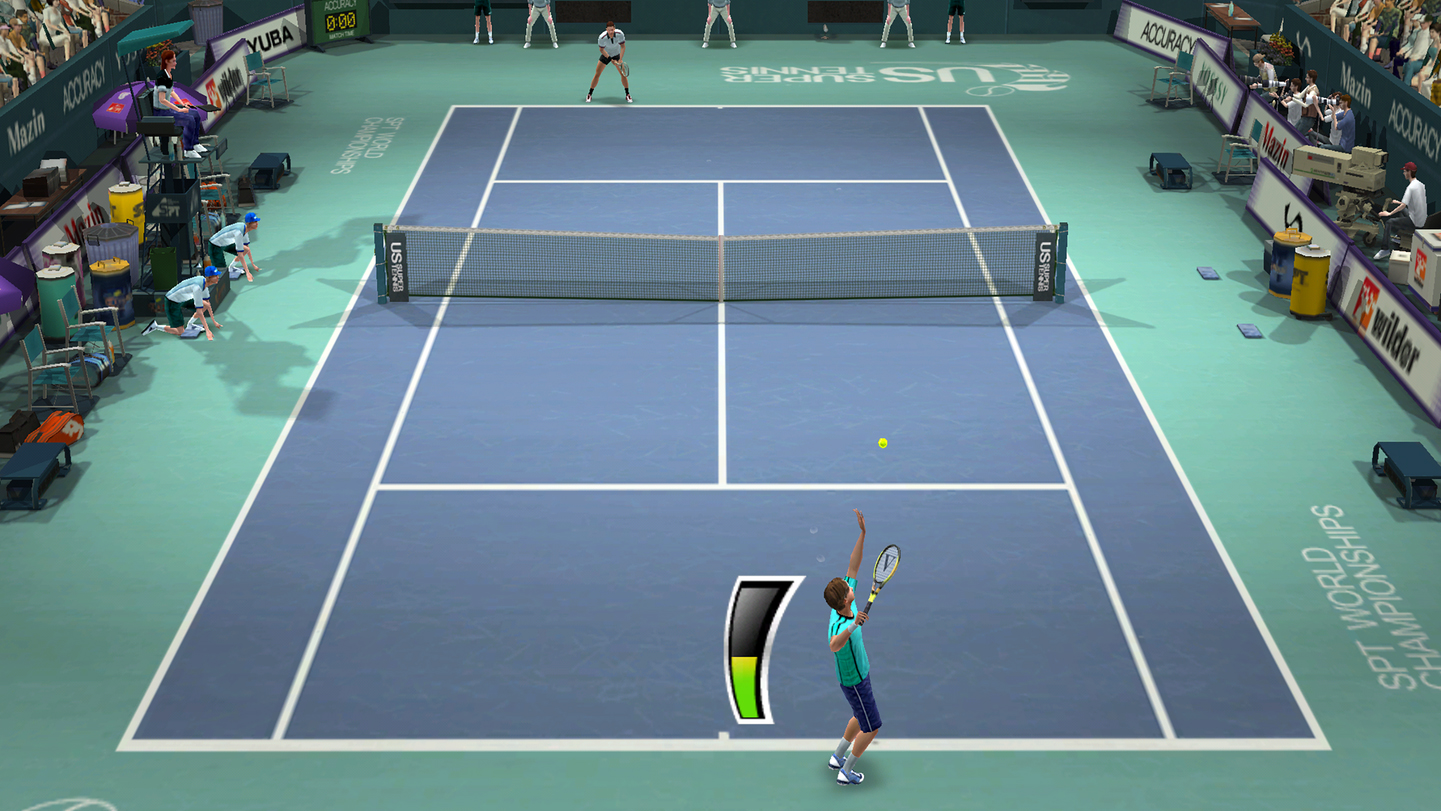
Virtua Tennis Challenge
Virtua Tennis Challenge is an iPad reimagining of a classic Dreamcast tennis game. Although Sega claims it’s the most realistic game of its type on mobile, Virtual Tennis Challenge is in reality very much an arcade outing, with you darting about, attempting to defeat your opponent by way of lobs, top spins, and dramatic ‘super shots’.
The gestural controls leave a lot to be desired, resulting in tennis as if your player had downed a few too many drinks in the bar prior to their match.
But plump for the on-screen virtual D-pad and buttons (or use an external MFi gamepad) and you’ll find an entertaining take on repeatedly smacking a ball over a net, while the virtual crowd presumably gorges itself on virtual strawberries.
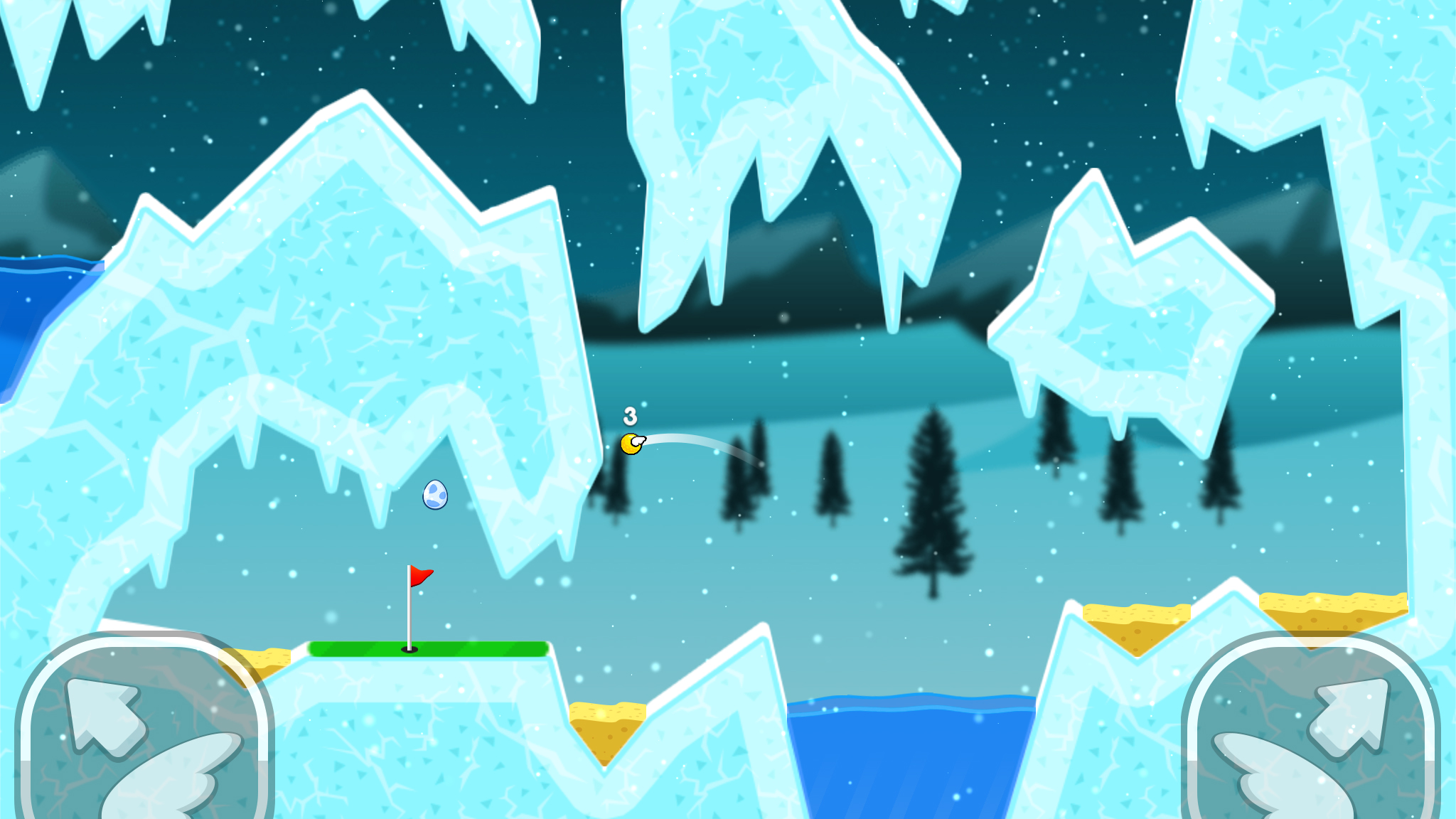
Flappy Golf 2
The original Flappy Golf was a surprise hit, given that it was essentially a joke – a satire on Flappy Bird. While Flappy Golf 2 is a more polished and considered effort, it’s essentially more of the same, giving you courses from the most recent Super Stickman Golf, and adding wings to the balls.
Instead of smacking the ball with a stick, then, you flap it skywards, using left and right buttons to head in the right direction. If you’re a Super Stickman Golf 3 aficionado, Flappy Golf 2 forces you to try very different approaches to minimize flaps and get the scores needed to unlock further courses.
For newcomers, it’s an immediate, fun and silly take on golf, not least when you delve into the manic race mode. The permanent ad during play also makes this a far better bet on iPad than iPhone, where the ad can obscure the course. (Disappointingly, there’s no IAP to eradicate advertising.)
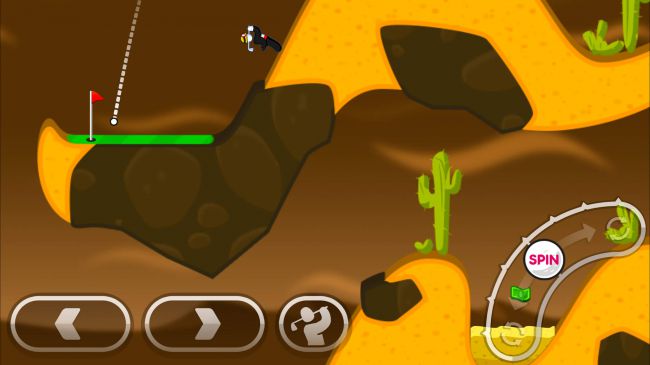
Super Stickman Golf 3
Much like previous entries in the series, Super Stickman Golf 3 finds a tiny golfer dumped in fantastical surroundings. So rather than thwacking a ball about carefully tended fairways and greens, there are castles full of teleporters and a moon base bereft of gravity. The Ryder Cup, this is not.
New to the series is a spin mechanic, for flipping impossible shots off of ceilings and nudging fluffed efforts holewards on the greens. You also get turn-by-turn battles against Game Centre chums and a frenetic multiplayer race mode.
The spendthrift release is limited, though, restricting how many two-player battles you have on the go, locking away downloadable courses beyond the 20 initially built-in, and peppering the game with ads. Even so, you get a lot for nothing, should you be after new side-on golfing larks but not want to pay for the privilege.

WGT: World Tour Golf
If you like the idea of golf, but not traipsing around greens in the drizzle, WGT: World Tour Golf is the closest you'll get to the real thing on your iPad. Courses have been meticulously rebuilt in virtual form, based on thousands of photographs, and WGT's control scheme is accessible yet also quite punishing.
There's no mucking about spinning balls in mid-air to alter your shot here - mess up and you'll know about it, with a score card massively over par. But this is a game that rewards mastery and perseverance, and you feel like a boss once you crack how to land near-perfect shots.
WGT is, mind, a touch ad-heavy at times, but this is countered by there being loads to do, including head-to-head online multiplayer and a range of tournaments to try your hand at.

PKTBALL
This smashy endless arcade sports title has more than a hint of air hockey about it, but PKTBALL is also infused with the breakneck madness associated with Laser Dog's brutal iOS games.
It takes place on a tiny cartoon tennis court, with you swiping across the ball to send it back to your opponent. But this game is *really* fast, meaning that although you'll clock how to play PKTBALL almost immediately, mastering it takes time.
In solo mode, the computer AI offers plenty of challenge, but it's in multiplayer matches that PKTBALL serves an ace. Two to four people duke it out, swiping like lunatics (and hopefully not hurling the iPad away in a huff, like a modern-day McEnroe, when things go bad).
As ever, there are new characters to unlock, each of which boasts its own court and background music. Our current favourite: a little Game Boy, whose court has a certain famous blocky puzzle game playing in the background.
Our favorite free iPad RTS and turn-based strategy games, board games, and card games.
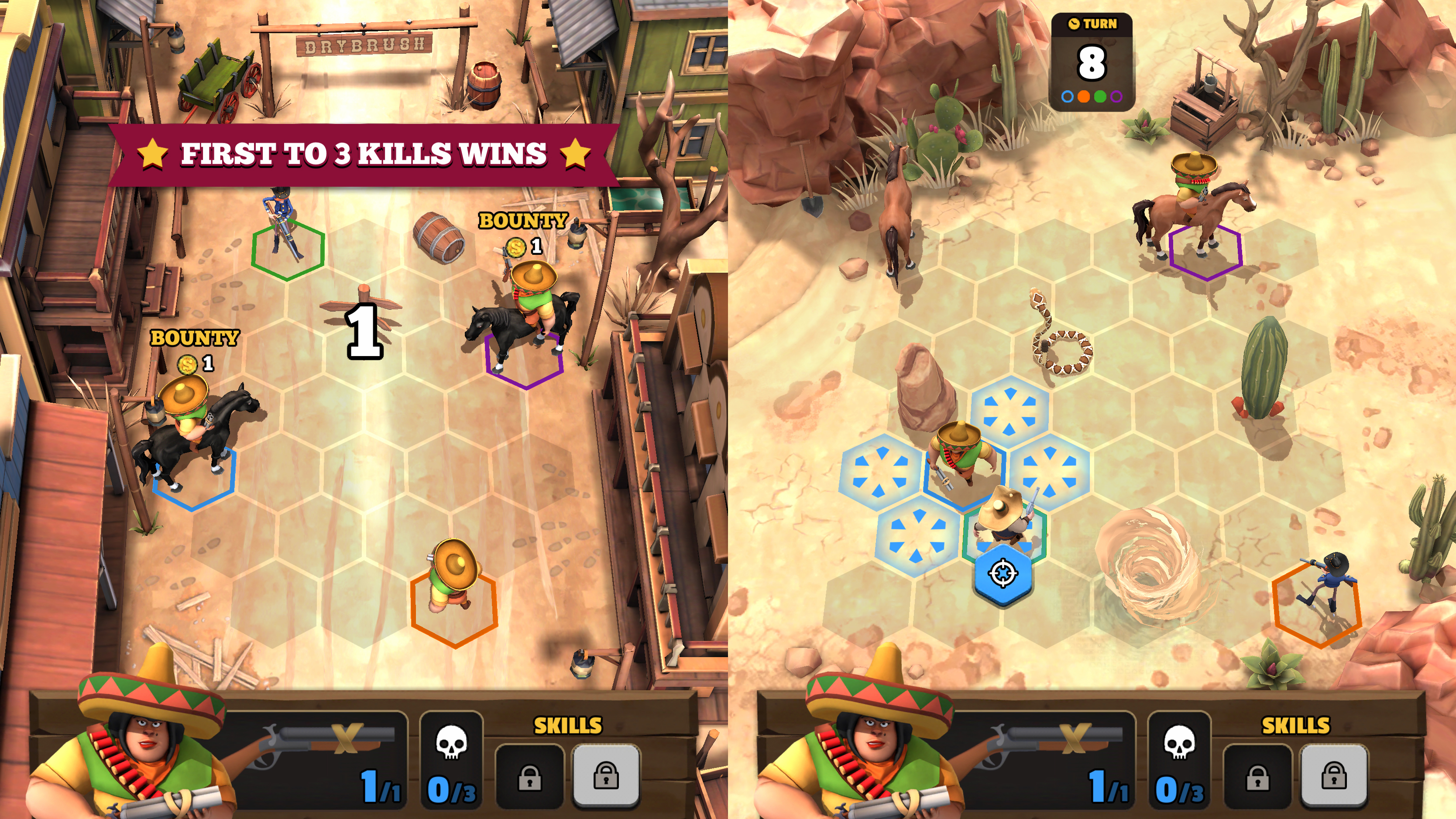
Pocket Cowboys
Pocket Cowboys is an online slice of multiplayer strategy that smartly marries immediacy and depth. It features gunslingers fighting it out on battlefields comprising hexagonal grids. Turns are taken simultaneously, with each player choosing between moving, shooting, or reloading.
The result is a bit like rock/paper/scissors, but with a tactical injection: sometimes you can second-guess what an opponent is going to do, and line up your shot accordingly. Further strategy and curveballs come from your upgradable gang (each gunslinger having their own unique abilities), and environmental hazards like dust storms and horses.
On iPad, the game works really well. The visuals look superb, and when making a move there’s much less chance of you prodding the wrong spot on the larger display.
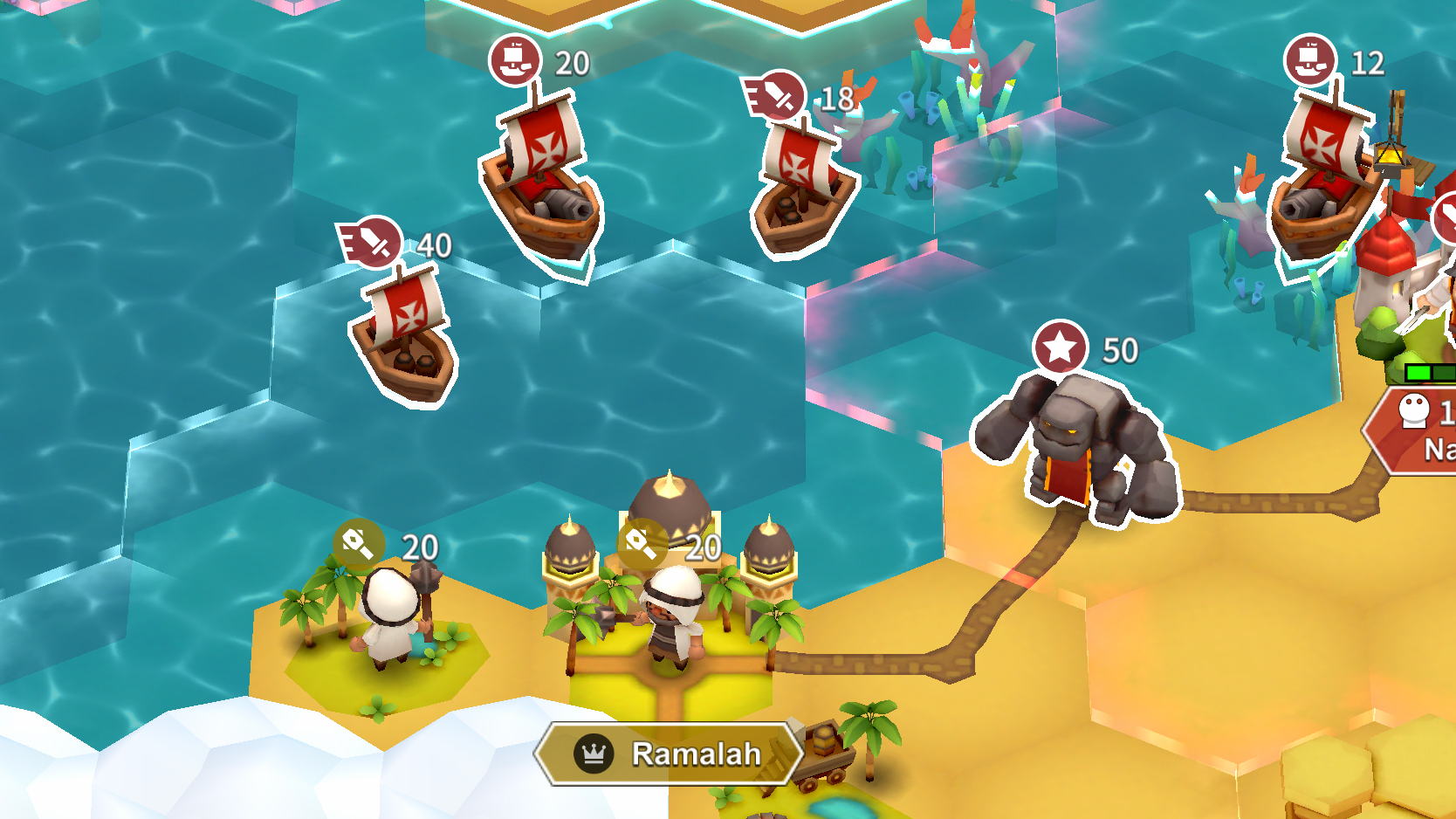
Hexonia
Hexonia is a turn-based strategy game that comes across like a simplified, fast-paced take on Civilization. You start out surrounded by mist, and with a single city. You must carefully balance resources, research new technologies, conquer villages and stomp about the place, obliterating enemies.
This isn’t the most nuanced take on this particular genre. Even for a mobile game, your enemies are rather on the violent side, prone to stabbing first and not bothering to ask questions later. This means games can be a rush to more powerful weapons, not least each tribe’s distinctive, unique super unit.
Still, if you’re not fussed about being quickly pushed into combat, there’s a lot to like here. Hexonia looks and sounds superb, and scratches the turn-based strategy itch with aplomb.
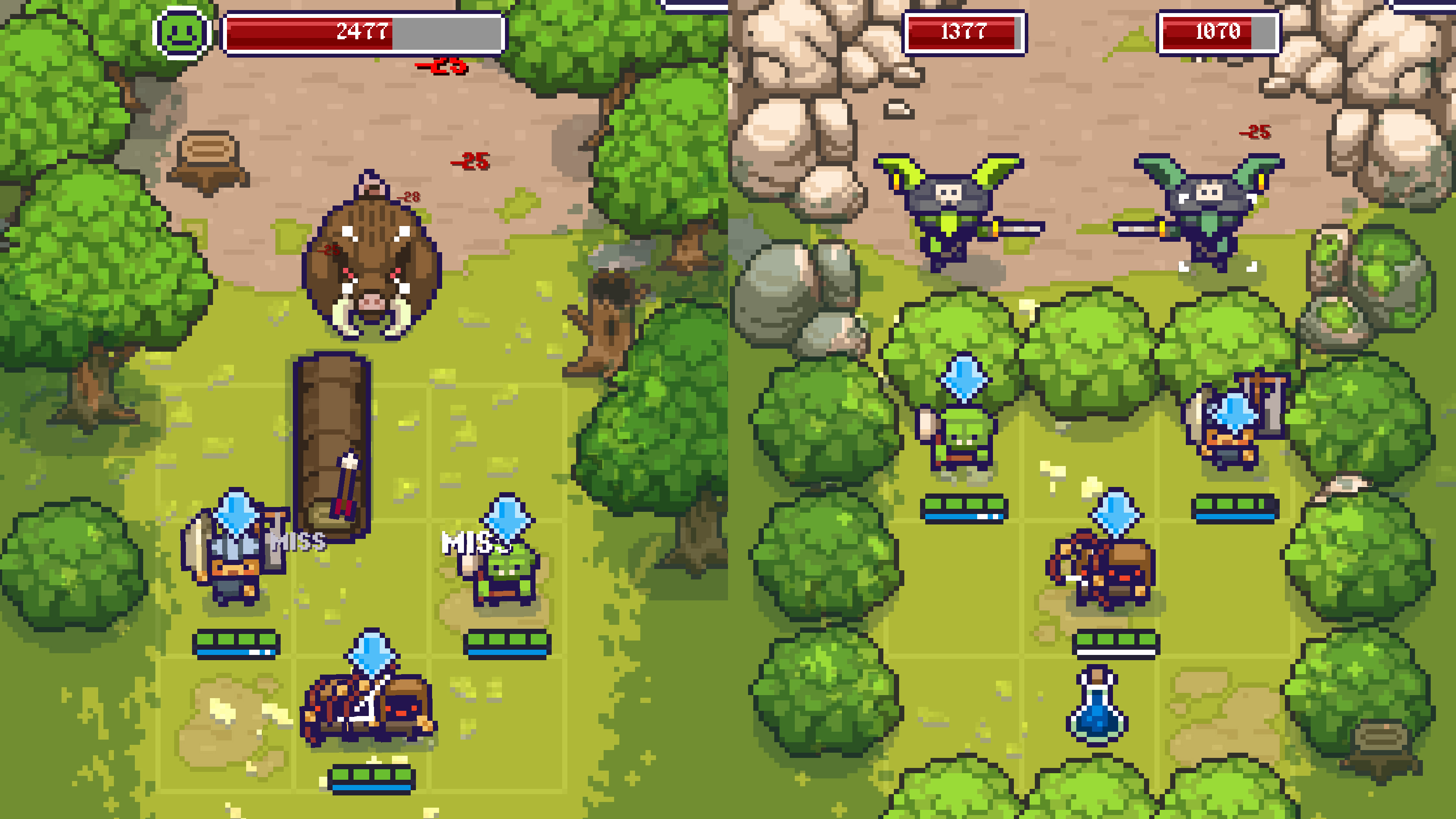
King Crusher
King Crusher is a bite-sized, semi-randomized turn-based strategy game played in fast-forward. You and your merry band head out on adventures, most of which are scraps that take place on tiny grids. You swipe your team about, to get them in the best position to dish out some damage, but also to avoid getting shot, blasted, squashed or eaten.
Clearly, this is a game that was designed for iPhone, quickly flicking characters about in idle moments, but it works surprisingly well on the bigger screen of the iPad. The pixel art shines, and the extra space results in fewer erroneous swipes.
Also, despite the stripped-back nature of the game, there’s enough depth and longevity to keep you engrossed for lengthier sessions as you set out to obliterate your enemies in the name of the king.
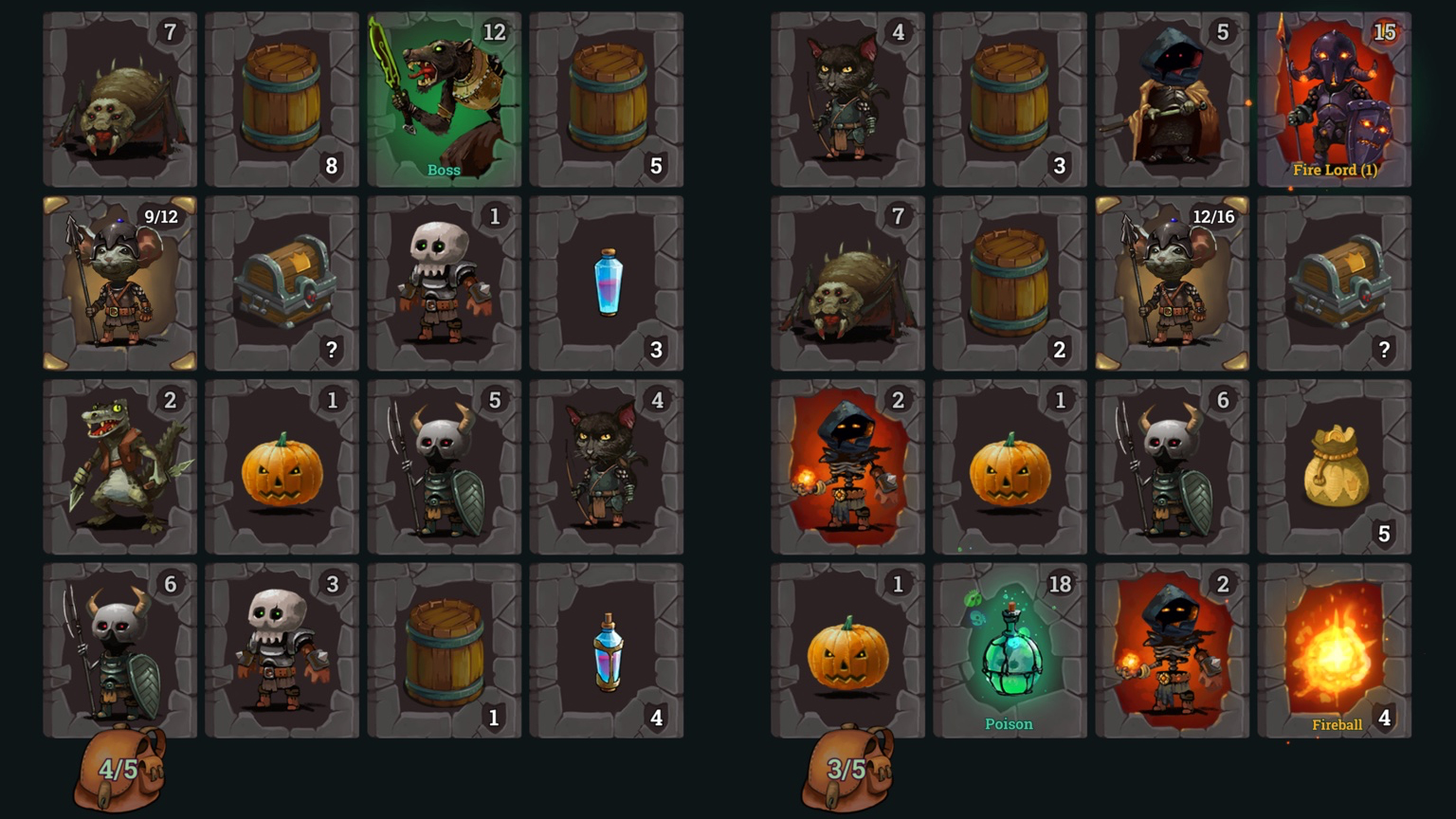
Look, Your Loot!
Look, Your Loot! is a free-roaming RPG reworked as a sliding puzzler. It’s an odd combination, but it works brilliantly, mixing Threes!-style tile-shifting, scraps with monsters, and accumulating bling and skills.
You play as a mouse in a dungeon, surrounded by murdery foes. Flick and you move to an adjacent tile. The tiles behind follow, and something new appears at the other end of the grid. Attack an enemy and you win if your energy level’s high enough. Otherwise: bye bye, mouse.
The game feels more premium than freebie, and as you get better at planning your routes, you’ll survive to see dangers that force new approaches. One boss, Jack (as in O’ Lantern), unhelpfully turns nearby tiles into death-dealing pumpkins. In short, then, top stuff for RPG fans of all stripes.
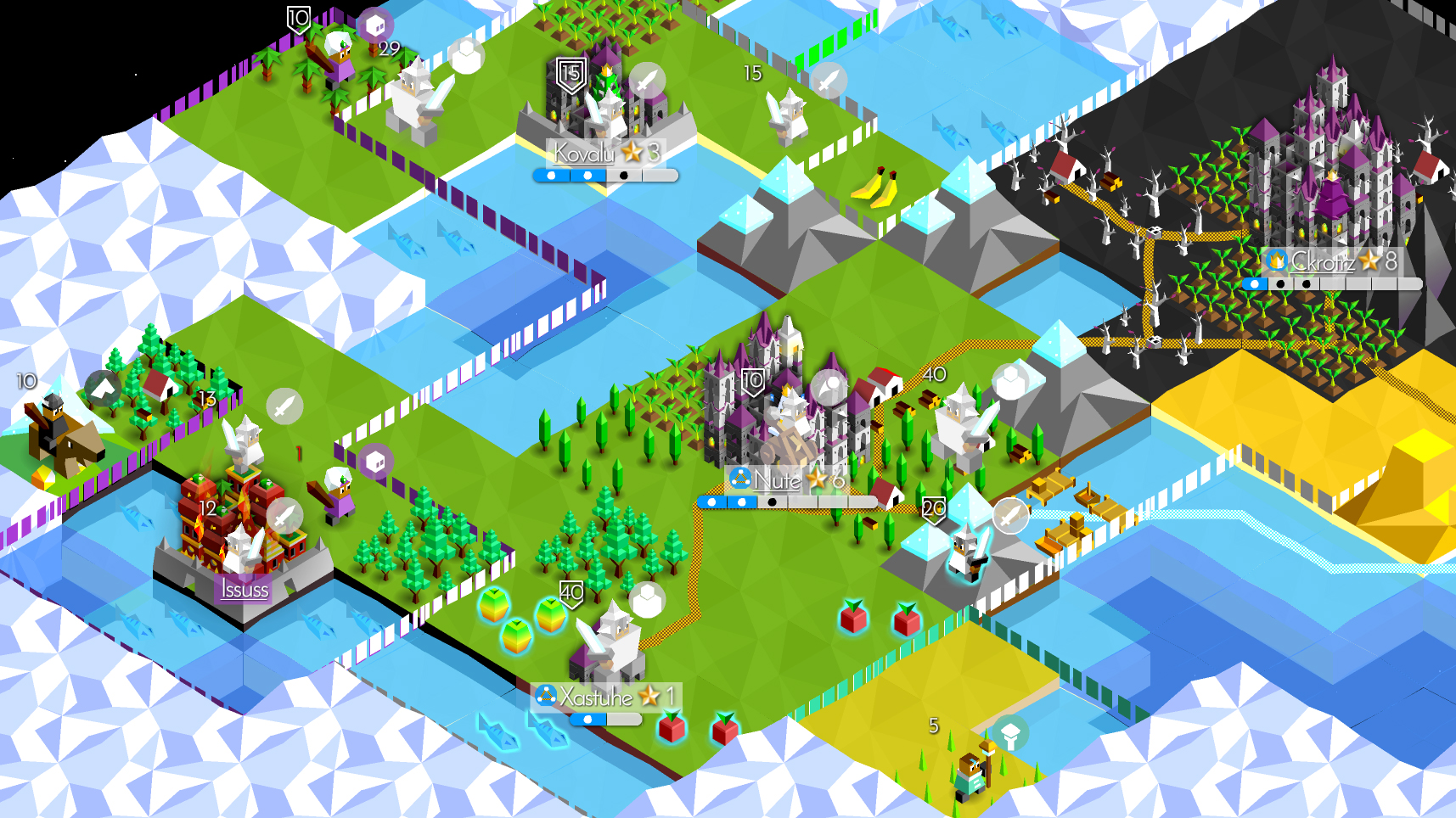
The Battle of Polytopia
The Battle of Polytopia is akin to turn-based strategy classic Civilization in fast-forward. You aim to rule over a tiny isometric world by exploring, discovering new technologies, and duffing up anyone who gets in your way.
The game is heavily optimized for mobile play. Technology stops evolving before anyone gets guns, you can only expand your empire via conquest rather than founding new cities, and there’s a 30-move limit that stops you dawdling. (For more bloodthirsty players, there’s a Domination mode, too, where you win by being the last tribe standing.)
You get the entire core game for free, but buy extra tribes and everything expands. You gain access to new maps, but also an online multiplayer mode, where you quickly discover whether you’re a powerful despot or one of history’s also-rans. However you play, Polytopia is one of the very best free games on mobile.

Flipflop Solitaire
Flipflop Solitaire is another of designer Zach Gage’s attempts at subverting a classic game. This time, spider solitaire caught his eye, and has been revolutionized by way of a couple of tweaks.
Like the original table-based card game, Flipflop Solitaire still has you arrange columns of cards in descending order. But now you can send cards to foundation piles, and also stack them in either order. (So a 4 or a 6 can be placed below a 5.)
These may seem like small changes, but they prove transformative. Every hand is possible to complete, if you can find the right combination of moves. This turns Flipflop Solitaire into a fascinating and surprisingly fresh puzzler, with you utilizing endless undos to untangle your web of cards.

Conduct THIS!
With a name that sounds like something an angry railway employee would yell before slapping you, Conduct THIS! actually starts out as a fairly sedate railway management game. Little trains amble along, picking up passengers you have to direct to stations that match their color.
The controls are extremely simple: tap a train and it halts until you tap it again; and switches can be triggered to send a train the most optimum way at a junction.
However, the layouts you face very quickly become anything but simple, with multiple trains to control and vehicles to avoid – both of which sometimes unhelpfully disappear into tunnels.
This is a smart, colorful mix of arcade smarts and puzzling – even if it does have the capacity to drive you loco(motive).
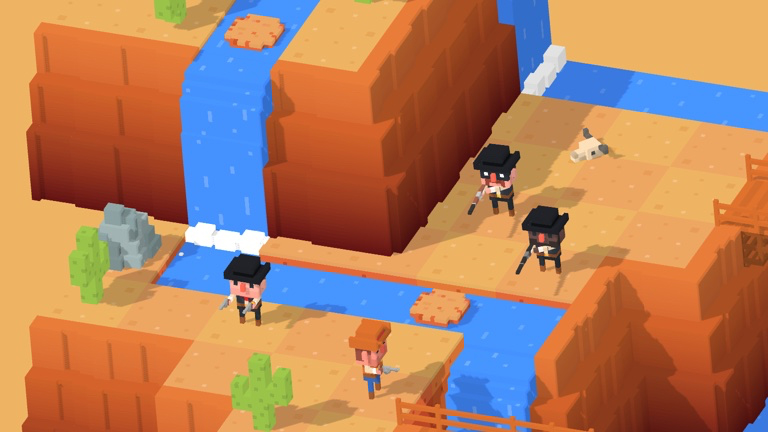
Westy West
With its chunky graphics and silly demeanor, Westy West isn’t an entirely accurate recreation of the Wild West – but it is a lot of fun.
You hop about tiny towns, deserts, and mines, shooting bad guys and being rewarded for being the kind of sheriff who doesn’t also shoot innocents.
Although the controls mirror Crossy Road (albeit with a tap to shoot rather than leap forward), progression is more akin to Looty Dungeon, with you having to complete each miniature room (as in, shoot all the bad guys) before moving on.
The net result is a game that’s ultimately an entertaining arcade title, but that somehow also feels like you’re exploring a tiny universe – and one with character. It’s amusing when you’re facing a duel, and a pianist is rather conspicuously outside, furiously playing an ominous score.
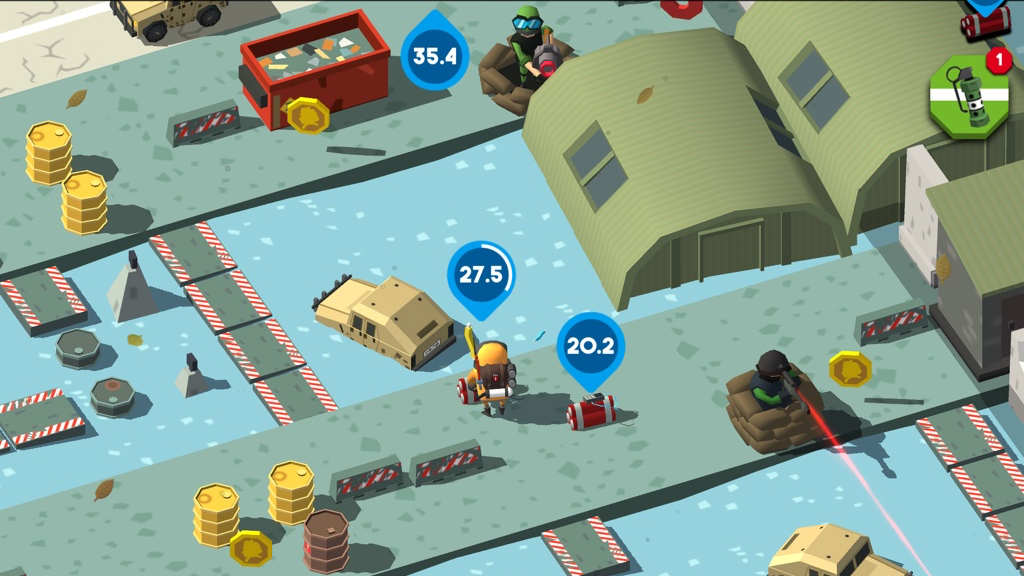
Bomb Hunters
We’re in broadly familiar territory with Bomb Hunters, which twins Crossy Roadwith bomb disposal. This means you get chunky graphics and a swipe-based take on Frogger, but must also quickly locate and deal with high-explosives that are soon to go off.
This twist transforms Bomb Hunters into a relentlessly frantic experience, and keeps you on your toes regarding the route you’re taking. Everything becomes markedly tougher when enemy snipers and grenadiers appear, and when some bombs only disarm when you complete a dexterity mini-game.
The swipe controls can be a touch iffy at times, but otherwise this is a smart take on an otherwise tired genre – and one that rewards repeat play through unlocks that boost your survival rate during subsequent games.

Spaceteam
One of the most innovative multiplayer titles we've ever played, Spaceteam has you and a bunch of friends in a room, each staring at a rickety and oddball spaceship control panel on your device's display.
Instructions appear, which need a fast response if your ship is to avoid being swallowed up by an exploding star. But what you see might not relate to your screen and controls.
Spaceteam therefore rapidly descends into a cacophony of barked demands and frantic searches across control panels (which helpfully start falling to bits), in a last-ditch attempt to 'set the Copernicus Crane to 6' or 'activate the Twinmill' and avoid fiery death.
Our favorite free iPad games all about crosswords, anagrams, and playing with letters.
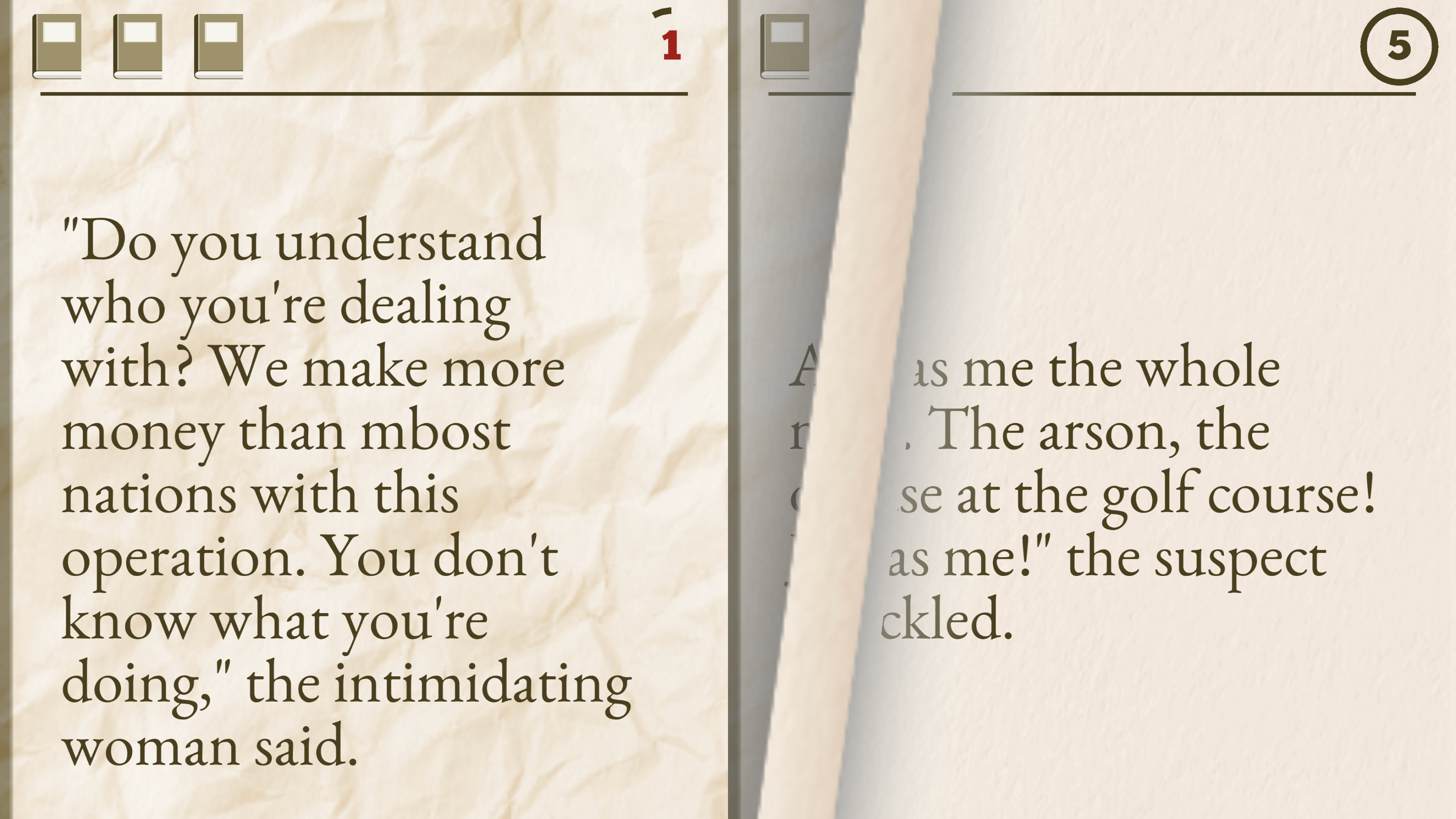
Typochondria
Typochondria is a word game, which features some very creative writing – creative in the sense of pages being peppered with misspellings. Your task is to spot them – against the clock.
With large text on an iPad’s sizable screen, you’d think this would be easy. It’s not. When the timer is ticking down at speed, it’s all too easy to prod a word in a panic, losing one of your three lives. At this point, you may gain a glimmer of empathy for put-upon editors.
The game offers alternate modes, too – one has you state how many errors are on a page; the other is a zero-risk no-timer mode for typo fetishists. Against the clock is where it really clicks, though, with what turns out to be a surprisingly exhilarating challenge.
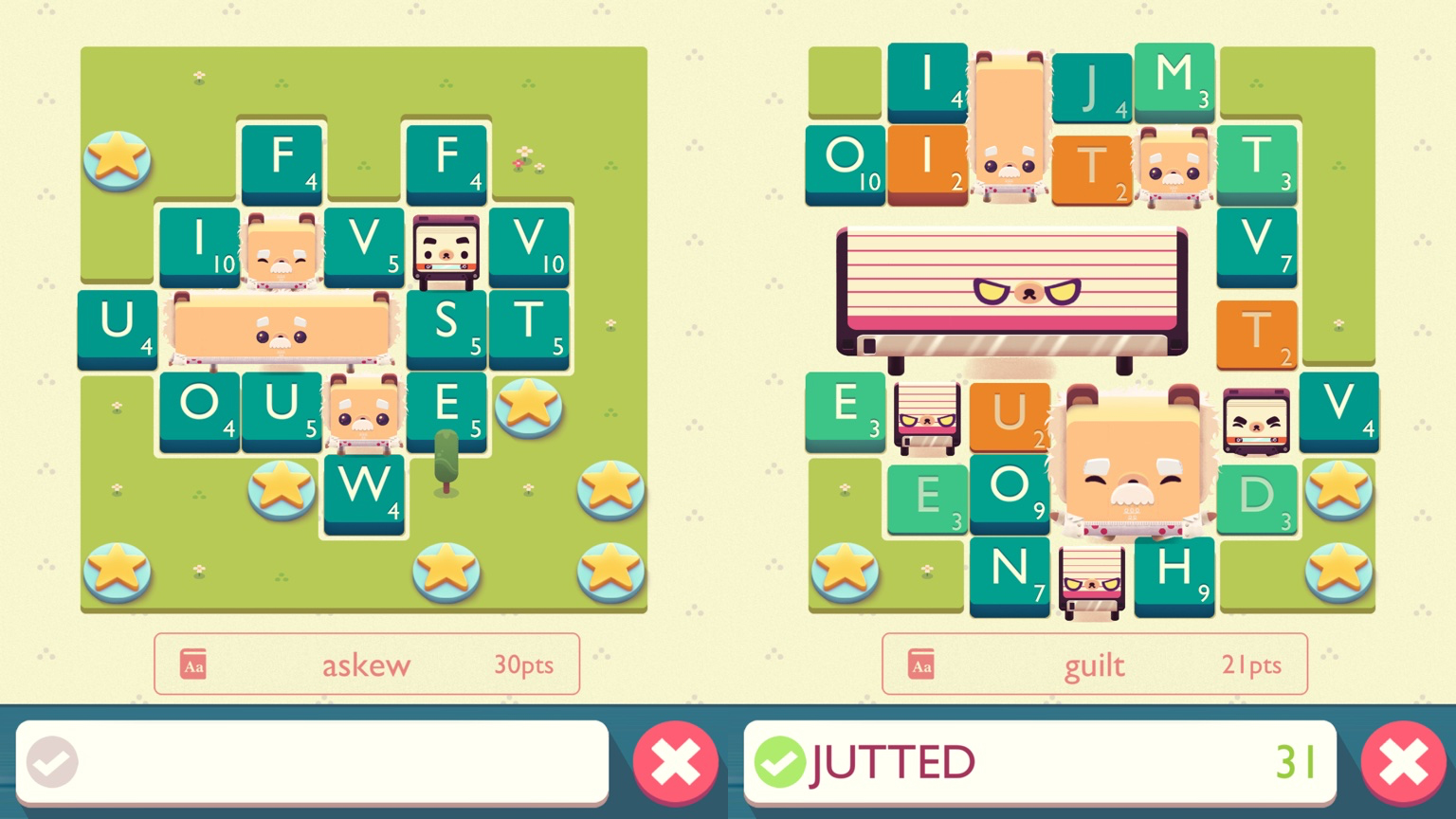
Alphabear 2
Alphabear 2 has you tap out words on Scrabble-like tiles set into a grid-like board featuring bears. As tiles are used, bears grow to fill the gaps, often becoming comically tall or thin. Simultaneously, tiles have turn countdowns on them; those that reach zero become immovable stones, scuppering any gigant-o-bear schemes you had in mind.
This is very similar to the original Alphabear, only this time there’s smarter visuals, a story involving a time machine (everything’s gone wrong, but you can apparently fix history by spelling words), and a smattering of educational content through a built-in dictionary and modes based around morphemes.
An underlying meta-game with collectable bonus bears remains baffling and endearing in equal measure, but otherwise this one’s a furry good word game that’s definitely worth bear-ing in mind.
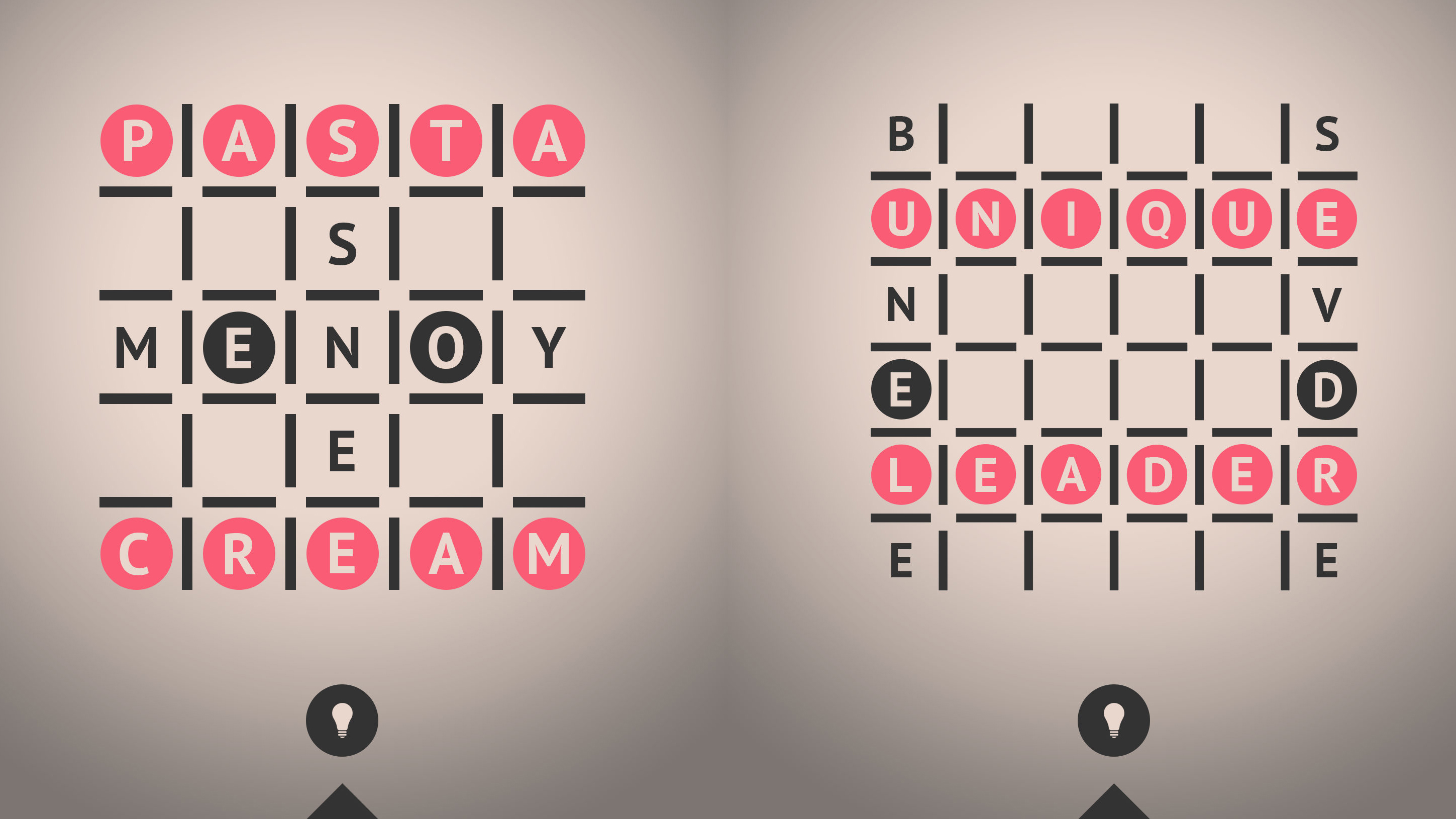
Wordgraphy
Wordgraphy is essentially a set of crossword puzzles. The tiny snag is that the letters are all in the wrong places, and although they can be moved, they can only swap with certain letters elsewhere in the puzzle.
You’d think this restriction would make things easier, but it really doesn’t. You’ll sit there faced with a set-up that resembles an H on its side. The central column will have a completed word, but you’ll stare in baffled fashion at all the other letters, flipping them about to make various flavors of gibberish.
But when things click, you’ll feel like a genius – at least until the point you’re then confronted by a new and even tougher puzzle.
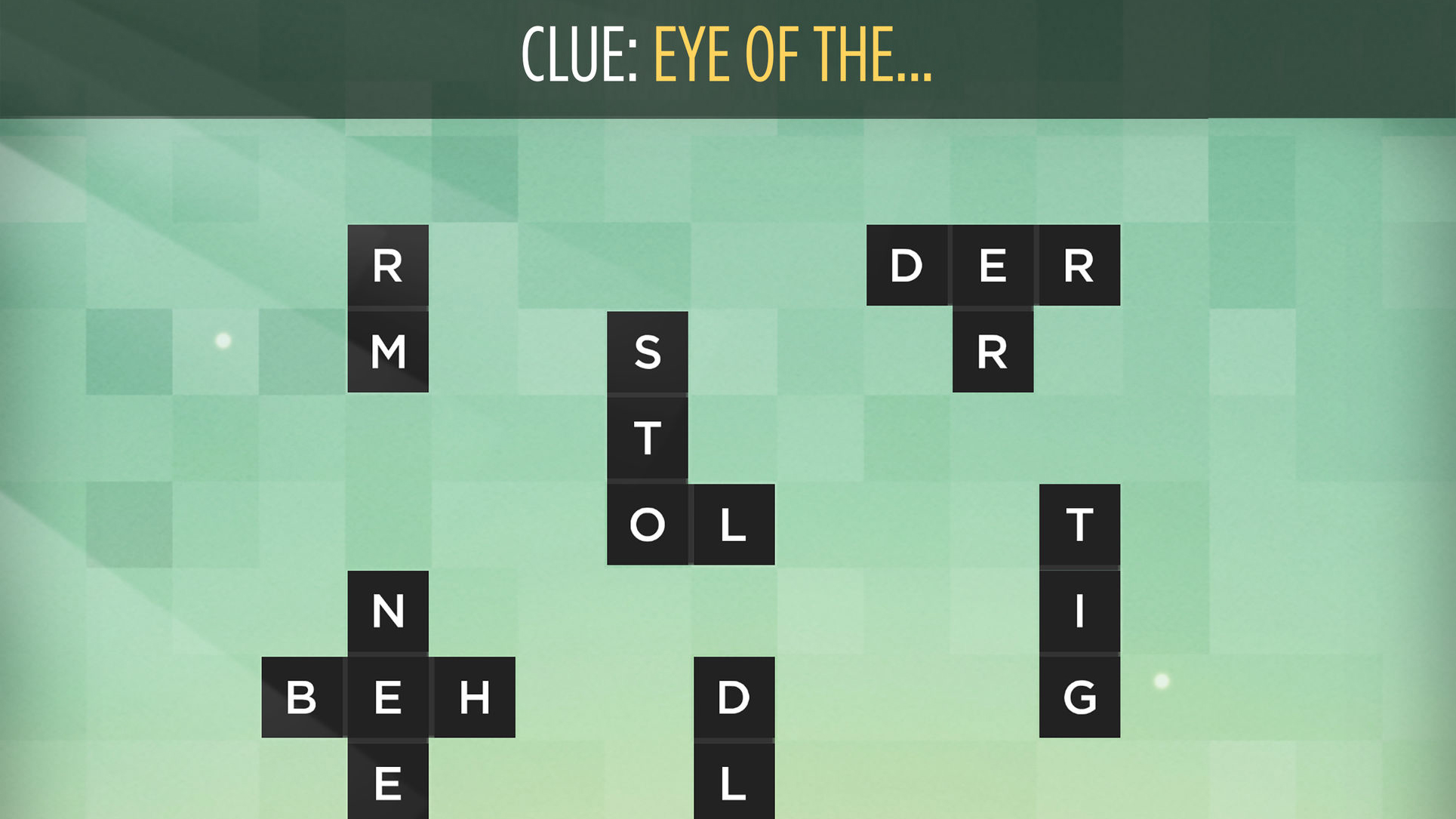
Bonza Word Puzzle
Bonza Word Puzzle rethinks classic crossword puzzles, mostly by taking a completed one, hacking it to bits, and then tasking you with putting the thing back together again.
The result is something like a marriage of tetrominos, jigsaws and Scrabble, and it’s initially rather pleasant as you drag a few pieces about your iPad’s display, and feel slightly smug as everything comes together in seconds.
Naturally, Bonza’s sting in the tail then emerges: puzzles with loads of pieces, sprayed about the screen in a manner that’ll make your eyes boggle. At that point, it becomes a stern test, even if a clue helpfully hints at the kinds of words you should be making.
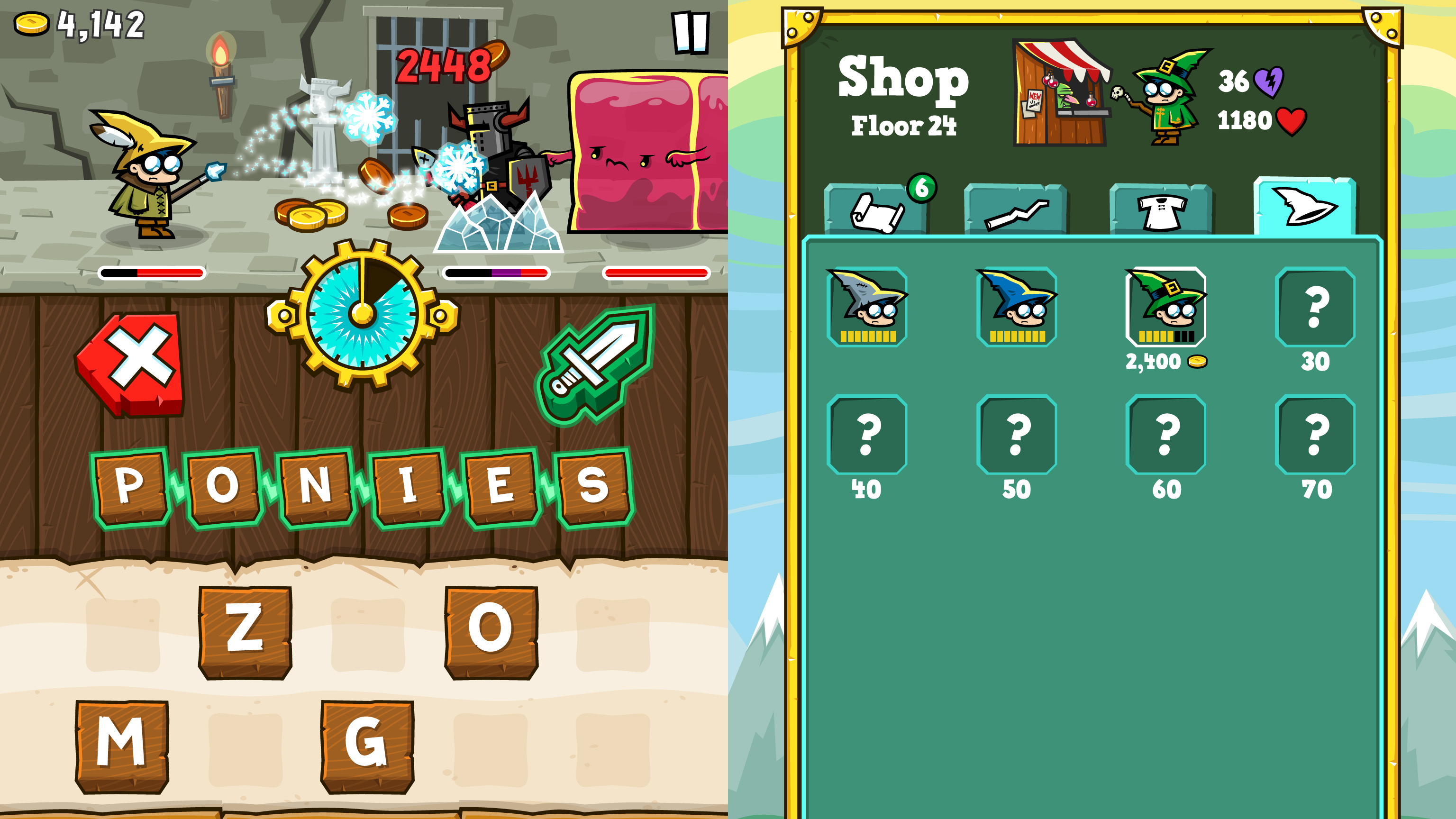
Spellspire
Spellspire features a grumpy wizard trying to make his way up a tower. Given that this is a videogame, all manner of deadly foes stand in his way. To clear a path, the pointy-hatted hero must blast enemies with his wand – a wand powered by letters.
Yep – this one’s actually an anagrams game, despite the role-playing-lite shenanigans. You get ten letters per floor and use them to spell words that are transformed into magical blasts. The longer your word, the more powerful the magic.
There’s some grind if you want to make it to the top – bosses are initially very tough to beat. But every play adds to your coffers, giving you a fighting chance of reaching the top of the tower, where we can only hope the wizard finds a really big dictionary.
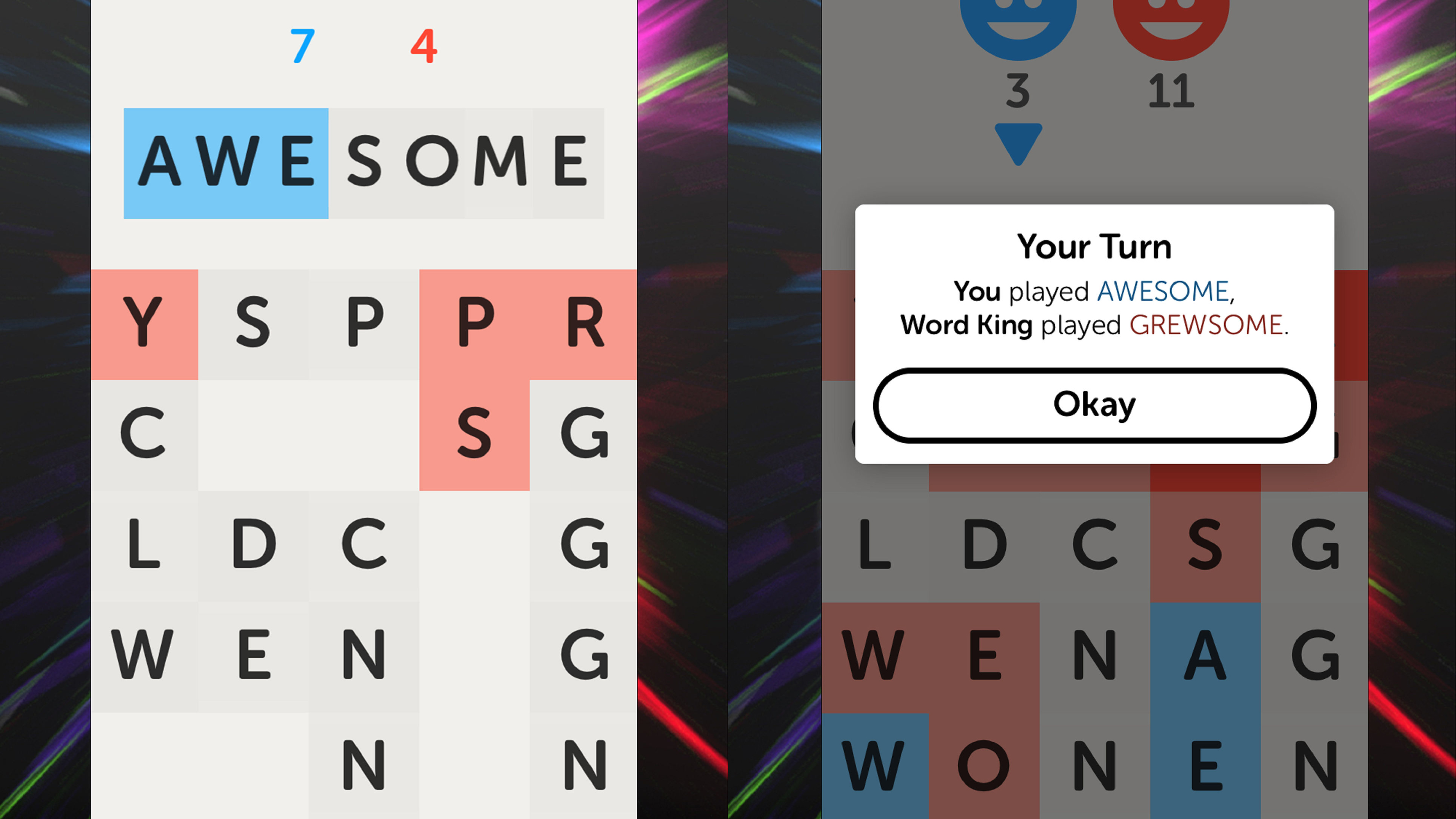
Letterpress
Letterpress is what happens when you mash Boggle into Risk with a fork. You get a small grid of letters, and tap out a word. Doing so turns its tiles your color. Your opponent then attempts to do the same, in a kind of lexicographer’s take on a tug ’o war.
The twist is that letters you surround are temporarily locked, meaning your opponent can’t flip them on their next go. Careful strategizing is therefore at least as important as showing off your long-word skills.
With a basic rule-set and minimal visuals, it’s interesting how gripping Letterpress proves to be. But when you’re deep into a match, you and an opponent figuring out how to grab those last few unclaimed letters, it’s like no other game of its kind.
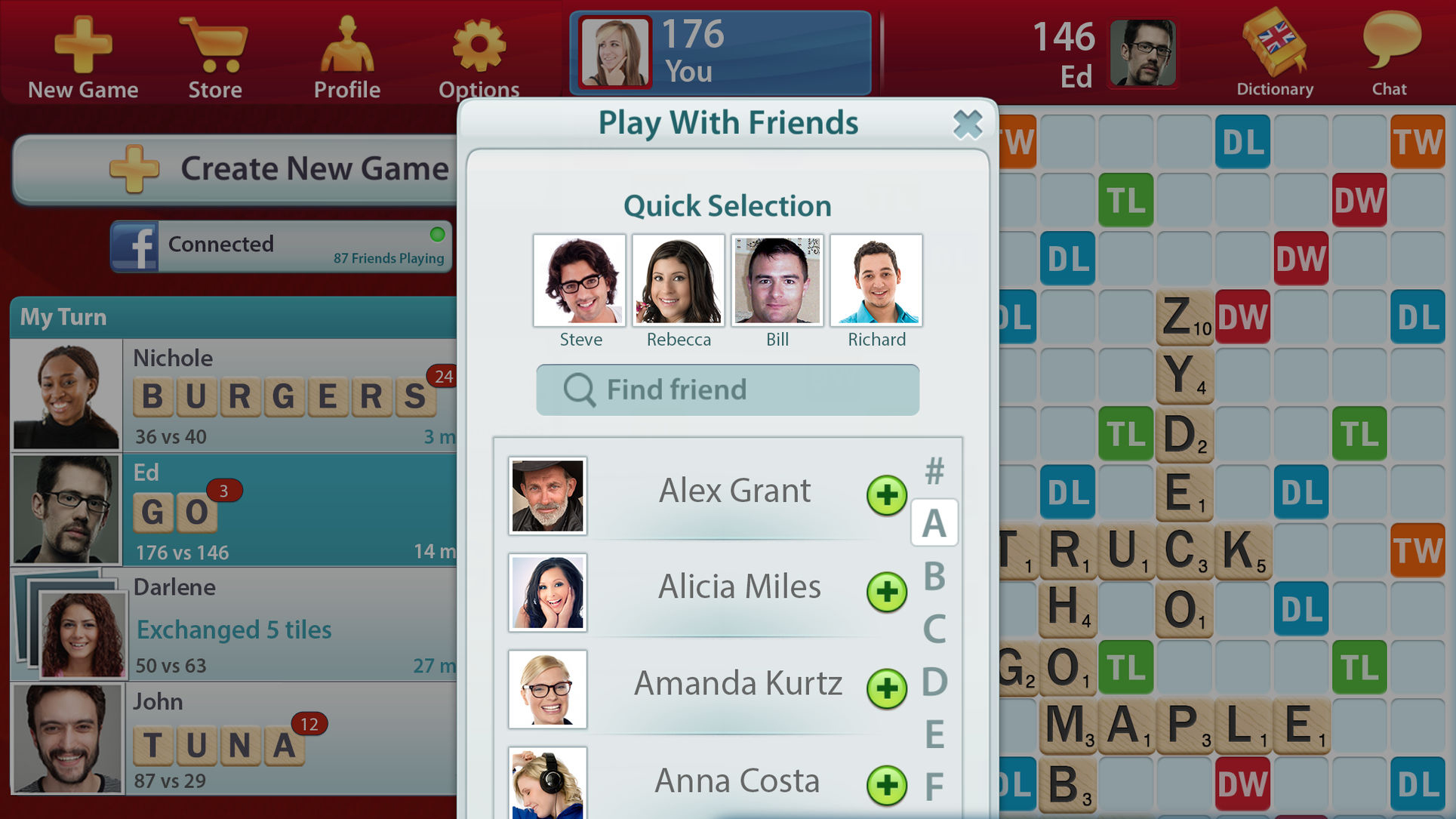
Scrabble
Scrabble [non-US App Store link] should need no introduction. The much-imitated crossword game pits you against one or more opponents, as you lay down letter tiles on a board, attempting to make use of special score-boosting spots wherever possible.
This digital take on the classic boardgame enables you to brush up your skills against a computer player, play friends on your local network, or take on all-comers online. On iPad is the best way to play, providing you with a full-size board and stats, without any need to scroll.
If there’s any downside, the app does belt you with ads quite often, and you’ll probably at some point get irritated by the computer opponent’s penchant for deeply obscure words. Nonetheless, Scrabble on iPad betters its many clones.
0 comments:
Post a Comment